Not all of us in the aquarium hobby want, or even want to bother with, super fancy lights for our tanks. They’re expensive and running high lighting adds another layer of difficulty to keeping your aquarium.
Low light tanks are, plain and simple, cheaper and easier to take care of. Less maintenance means more time enjoying your tank, and isn’t that supposed to be the whole point?
But, you might ask yourself, which plants can tolerate and thrive in a low light tank? To make that easy for you, I purchased, planted, and maintained 20 different low-light plants in my tanks to help you see the pros and cons of different species.
Low-Light Aquarium Plant Testing Results
After testing 20 different low-light plants, here are the results (in-order) for the top 10. However, my all time favorites are java fern, anubias barterii, moneywort, pelia and pearl weed.
Reviews for all 20 can be found further down the page.
Java Fern (Leptochilus pteropus)
Quick Specs:
- Scientific name: Leptochilus pteropus
- Placement: mid-ground
- Care level: easy
Why I recommend this plant
Beginner friendly plant that is pretty much the mainstay of any low light setup.
Pros & Cons
Pros
Easy to plant
Easy maintenance
Hardy and undemanding
Cons
Grows slowly

Overall Score: 8.8/10
In-depth Scoring
Planting: 10/10
Trimming: 10/10
Algae Control: 7/10
Sensitivity: 10/10
Hardiness: 10/10
Aesthetics: 9/10
Availability: 10/10
Cost: 9/10
Compatibility: 9/10
Contributions: 4/10
Water Wisteria (Hygrophila difformis)
Quick Specs:
- Scientific name: Hygrophila difformis
- Placement: mid-background/floating
- Care level: easy
Why I recommend this plant
Easy, fast-growing stem plant that removes lots of nitrate, but needs frequent trimming and replanting.
Pros & Cons
Pros
Fast growing
Eats up a lot of nitrate
Grows to the water’s surface
Cons
Needs frequent trimming and replanting
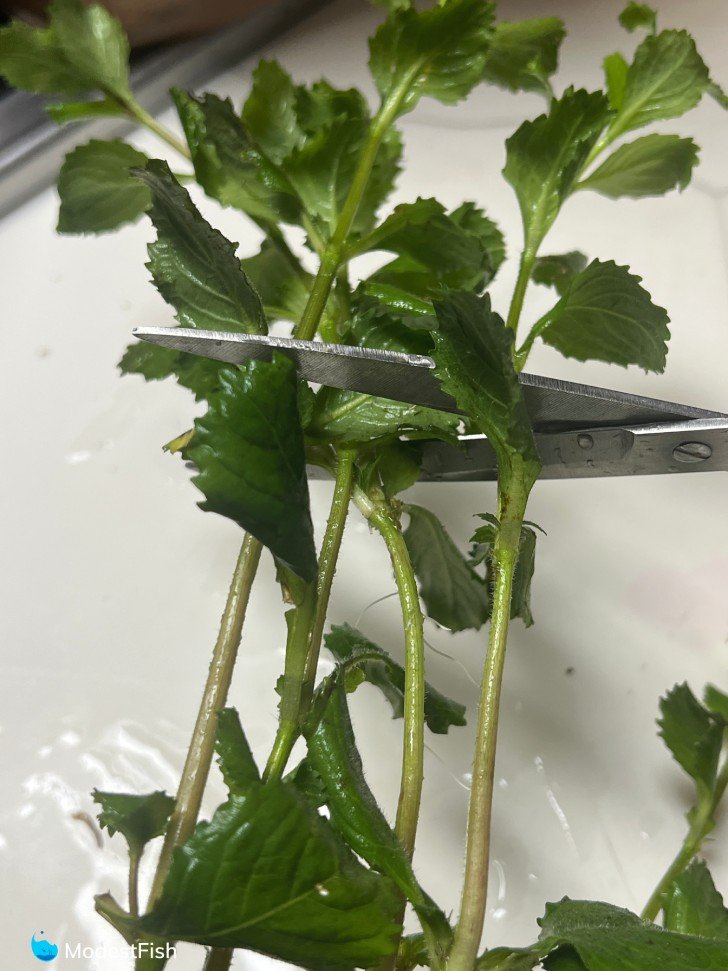
Overall Score: 8.6/10
In-depth Scoring
Planting: 8/10
Trimming: 6/10
Algae Control: 6/10
Sensitivity: 10/10
Hardiness: 10/10
Aesthetics: 8/10
Availability: 10/10
Cost: 10/10
Compatibility: 9/10
Contributions: 10/10
Anubias barteri – “coffee leaf”
Quick Specs:
- Scientific name: Anubias barteri
- Placement: mid-ground
- Care level: easy
Why I recommend this plant
A variation of Anubias barteri, this color morph has all the great benefits of its parent species, but with darker leaves that can contrast beautifully with other plants.
Pros & Cons
Pros
Easy, tough plant
Darker leaves contrast nicely with other plants
No extensive trimming or fancy substrate needed
Cons
Grows slowly
Doesn’t eat much nitrate
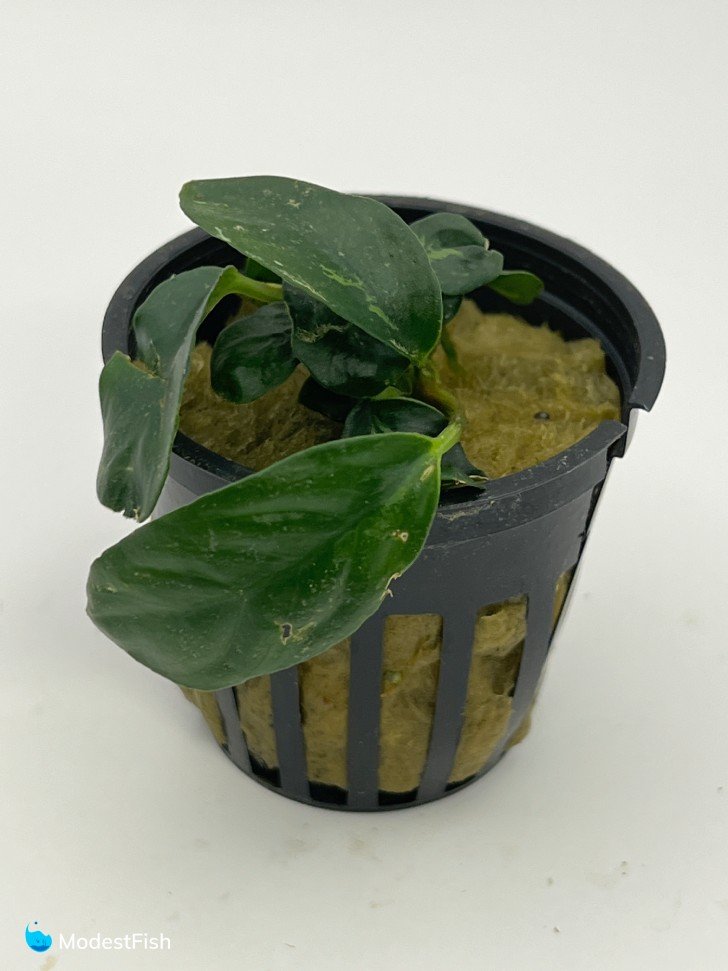
Overall Score: 8.5/10
In-depth Scoring
Planting: 10/10
Trimming: 10/10
Algae Control: 8/10
Sensitivity: 10/10
Hardiness: 10/10
Aesthetics: 10/10
Availability: 9/10
Cost: 8/10
Compatibility: 7/10
Contributions: 3/10
Anubias nana
Quick Specs:
- Scientific name: Anubias nana
- Placement: foreground
- Care level: easy
Why I recommend this plant
This is a great foreground plant that stays small and doesn’t need much attention.
Pros & Cons
Pros
Easy to plant and care for
Stays small
Doesn’t require extensive trimming
Tolerant of algae spot treatments
Cons
Grows slowly
Does not eat up much nitrate

Overall Score: 8.5/10
In-depth Scoring
Planting: 10/10
Trimming: 10/10
Algae Control: 9/10
Sensitivity: 10/10
Hardiness: 10/10
Aesthetics: 9/10
Availability: 10/10
Cost: 8/10
Compatibility: 7/10
Contributions: 2/10
Anubias barteri
Quick Specs:
- Scientific name: Anubias barteri
- Placement: mid-ground
- Care level: easy
Why I recommend this plant
This broad-leaved anubias species is easy to plant and maintain but is still a real beauty.
Pros & Cons
Pros
Hardy and undemanding
Beautiful broad leaves
Easy to plant and maintain
Cons
Grows slowly
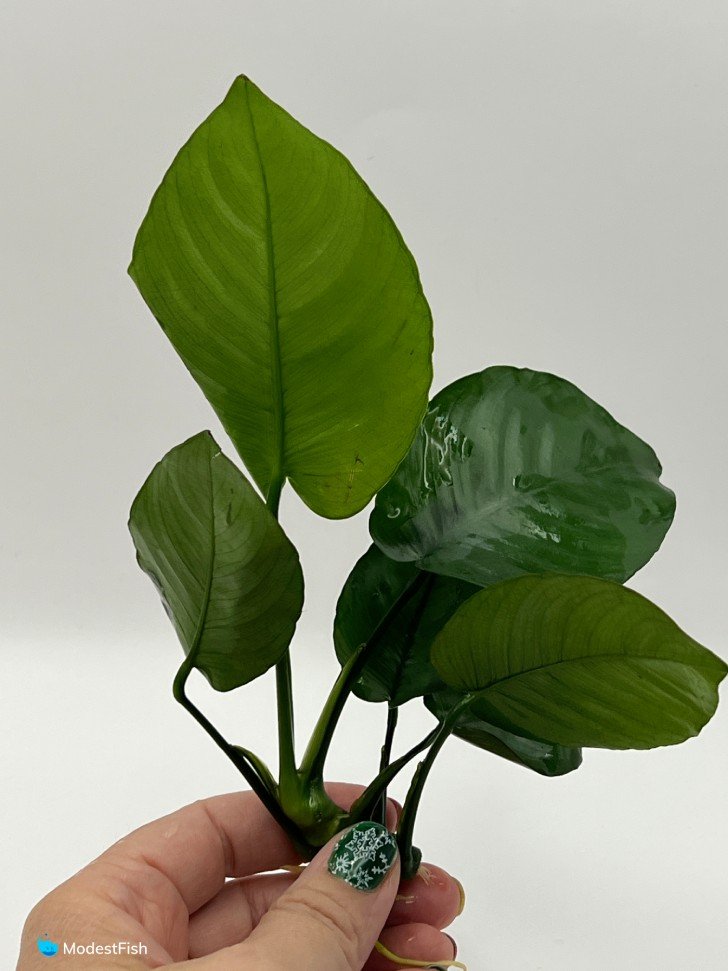
Overall Score: 8.5/10
In-depth Scoring
Planting: 10/10
Trimming: 10/10
Algae Control: 8/10
Sensitivity: 10/10
Hardiness: 10/10
Aesthetics: 10/10
Availability: 9/10
Cost: 8/10
Compatibility: 7/10
Contributions: 3/10
Moneywort (Bacopa monnieri)
Quick Specs:
- Scientific name: Bacopa monnieri
- Placement: background
- Care level: easy
Why I recommend this plant
This is a really easy background plant that gets tall but doesn’t require frequent trimming.
Pros & Cons
Pros
Easy background plant
Great for shrimp and fry
Blooms adorable flowers above the surface
Cons
Slow growing at first
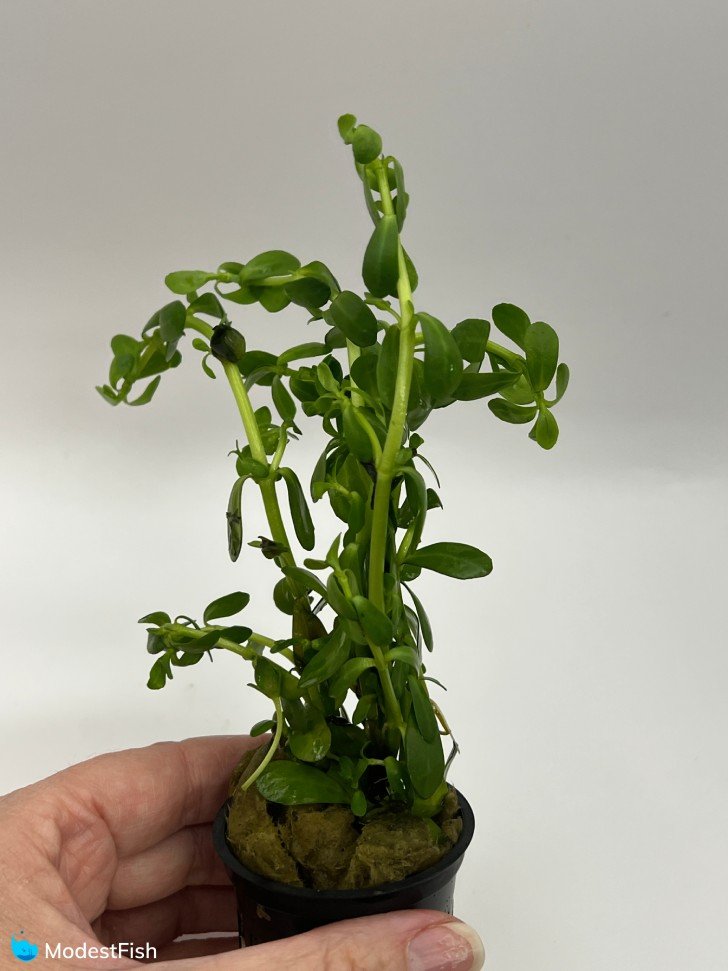
Overall Score: 8.3/10
In-depth Scoring
Planting: 6/10
Trimming: 10/10
Algae Control: 7/10
Sensitivity: 10/10
Hardiness: 10/10
Aesthetics: 8/10
Availability: 10/10
Cost: 8/10
Compatibility: 7/10
Contributions: 7/10
Pearl Weed (Hemianthus micranthemoides)
Quick Specs:
- Scientific name: Hemianthus micranthemoides
- Placement: foreground
- Care level: medium
Why I recommend this plant
Easy carpeting plant that doesn’t require high lighting or CO2.
Pros & Cons
Pros
Fast growing, easy carpeting plant
Eats lots of nitrate
Can grow in soil, sand or gravel
Cons
Can be a pain to plant
Requires frequent trimming
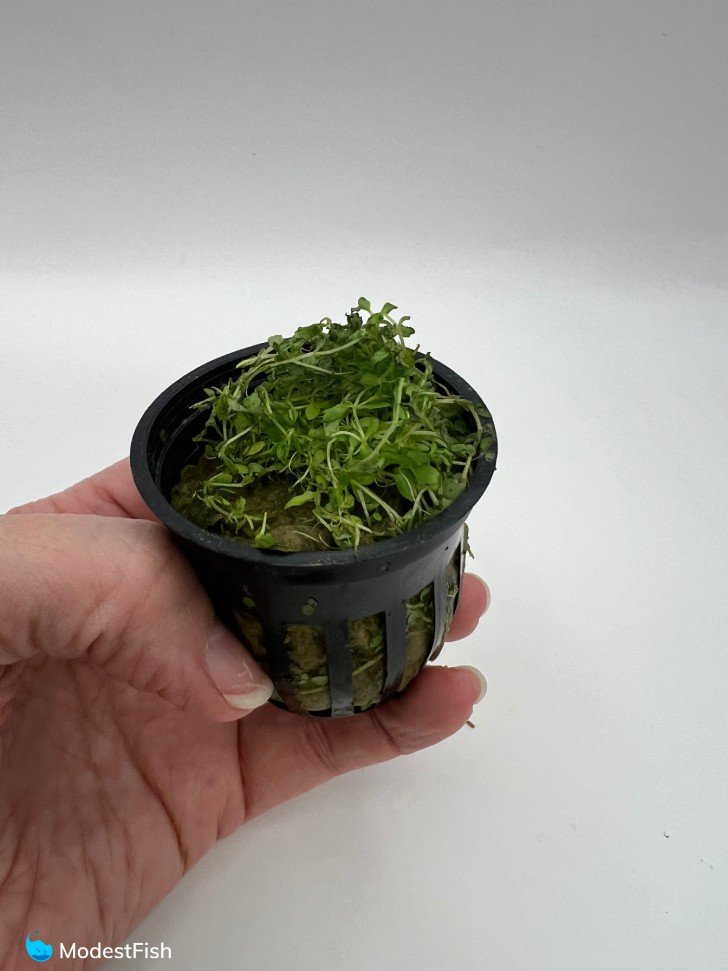
Overall Score: 8.1/10
In-depth Scoring
Planting: 5/10
Trimming: 7/10
Algae Control: 7/10
Sensitivity: 10/10
Hardiness: 10/10
Aesthetics: 10/10
Availability: 9/10
Cost: 8/10
Compatibility: 5/10
Contributions: 10/10
Water Sprite (Ceratopteris thalictroides)
Quick Specs:
- Scientific name: Ceratopteris thalictroides
- Placement: background
- Care level: medium
Why I recommend this plant
This plant requires frequent trimming and replanting, but its fast growth eats up a lot of nitrate from the water column.
Pros & Cons
Pros
Fast growing
Eats up a lot of nitrate
Grows to the water’s surface
Cons
Needs frequent trimming and replanting
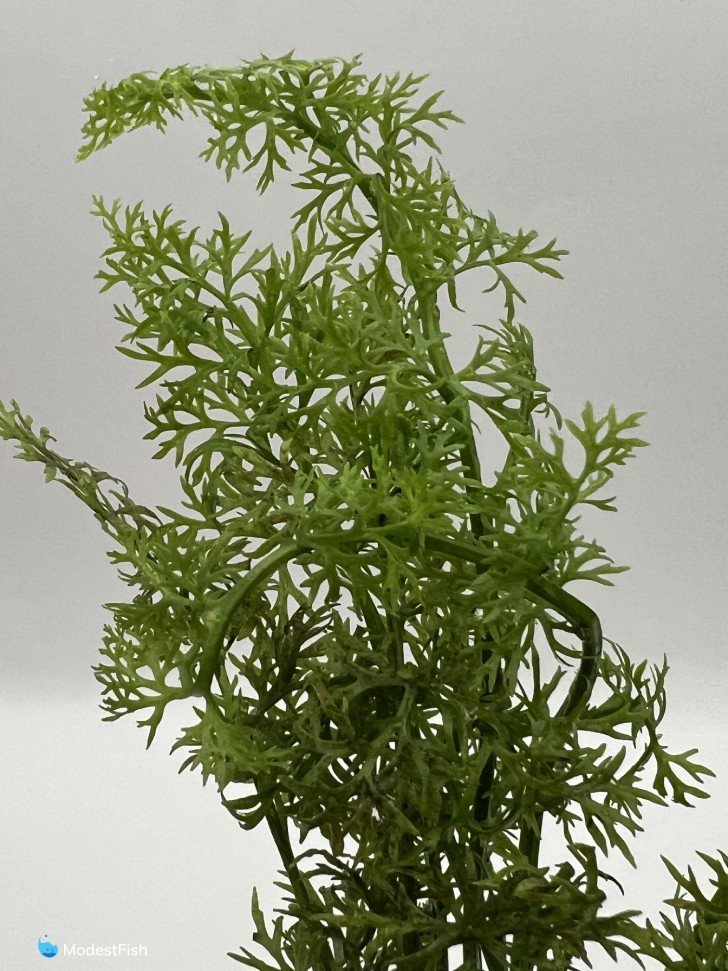
Overall Score: 8.1/10
In-depth Scoring
Planting: 7/10
Trimming: 6/10
Algae Control: 6/10
Sensitivity: 10/10
Hardiness: 10/10
Aesthetics: 6/10
Availability: 9/10
Cost: 10/10
Compatibility: 8/10
Contributions: 9/10
Brazilian Pennywort (Hydrocotyle leucocephala)
Quick Specs:
- Scientific name: Hydrocotyle leucocephala
- Placement: floating
- Care level: easy
Why I recommend this plant
This is a beautiful, easy to care for, floating plant that will eat up nutrients directly from the water column.
Pros & Cons
Pros
Easy floating plant
Eats lots of nitrate
Provides shade for plants below
Cons
Goes dormant part of the year
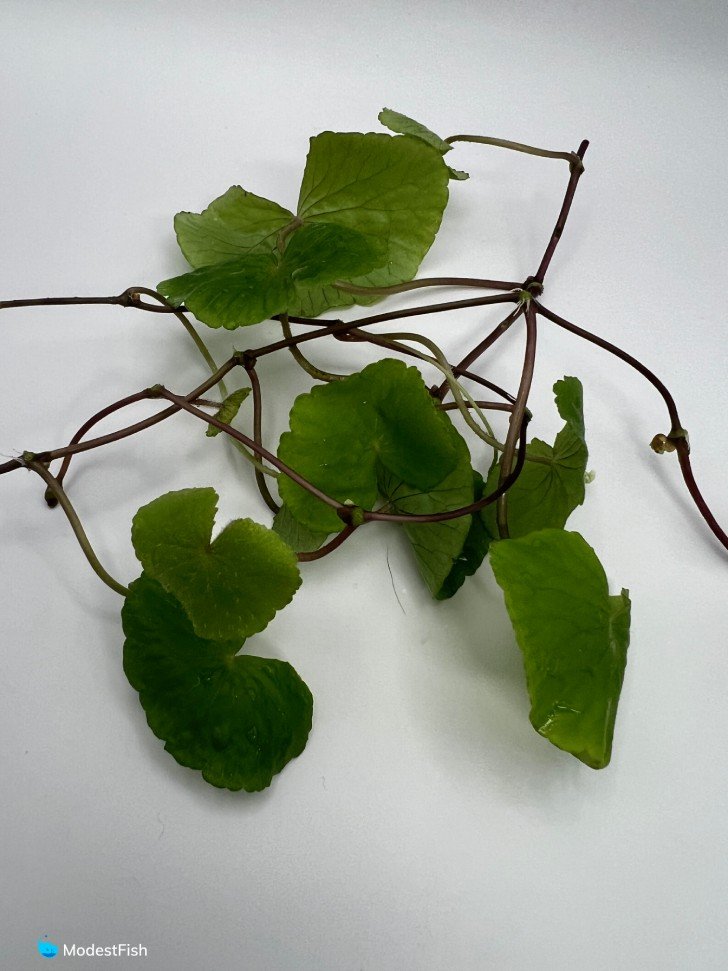
Overall Score: 7.9/10
In-depth Scoring
Planting: 7/10
Trimming: 9/10
Algae Control: 10/10
Sensitivity: 7/10
Hardiness: 8/10
Aesthetics: 9/10
Availability: 5/10
Cost: 7/10
Compatibility: 8/10
Contributions: 9/10
Java Moss (Taxiphyllum barbieri)
Quick Specs:
- Scientific name: Taxiphyllum barbieri
- Placement: carpet
- Care level: easy
Why I recommend this plant
Java moss forms a tangle of irregular fronds that makes for great cover for baby fish and shrimp.
Pros & Cons
Pros
Grows quickly
Great for fry and shrimplets
Easy to plant and maintain
Cons
Can look a bit messy
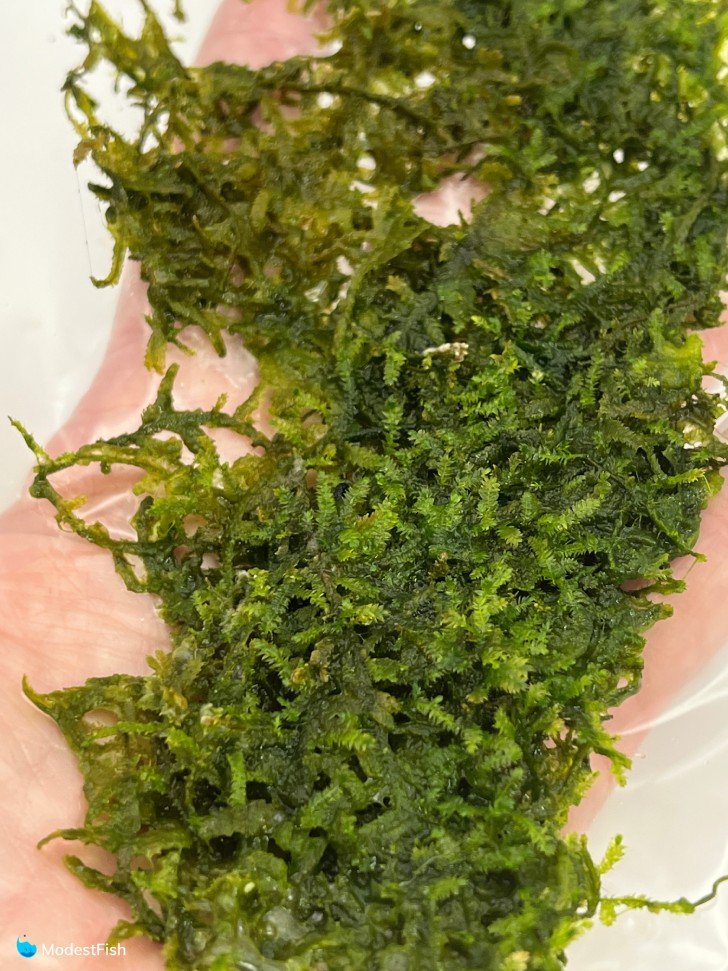
Overall Score: 7.8/10
In-depth Scoring
Planting: 7/10
Trimming: 8/10
Algae Control: 5/10
Sensitivity: 9/10
Hardiness: 8/10
Aesthetics: 8/10
Availability:9/10
Cost: 9/10
Compatibility: 8/10
Contributions: 7/10
Which Low Light Plants Were Ranked?
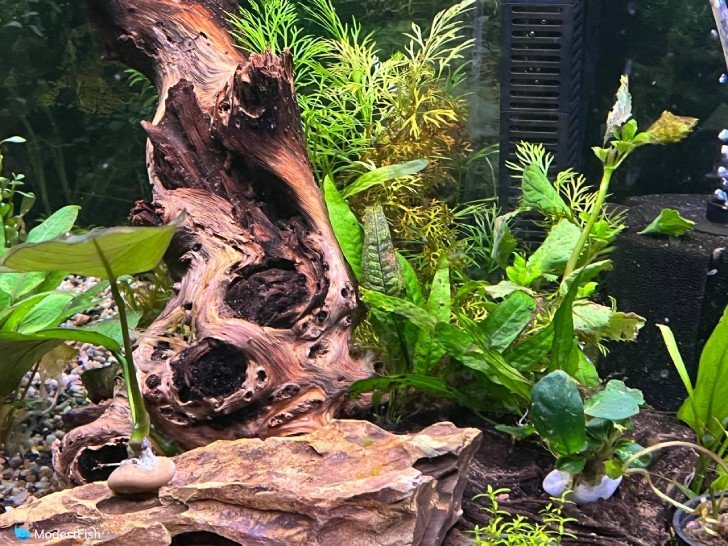
- Java fern 8.8
- Water wisteria 8.6
- Anubias barteri coffee leaf 8.5
- Anubias nana 8.5
- Anubias barteri 8.5
- Moneywort (Bacopa) 8.3
- Pearl weed 8.1
- Water sprite 8.1
- Brazilian pennywort 7.9
- Java moss 7.8
- Anacharis 7.7
- African Water Fern 7.6
- Crypt parva 7.5
- Crypt spiralis 7.5
- Crypt usteriana 7.5
- Crypt wendtii 7.5
- Guppy grass 7.4
- Pelia 7.2
- Hornwort 7.0
- Moss balls 6.8
How Were the Low Light Plants Ranked?
I already had most of these plants scattered among my eight home aquariums. But, just for some added insight I bought new versions and planted them in a tank that I was rescaping.
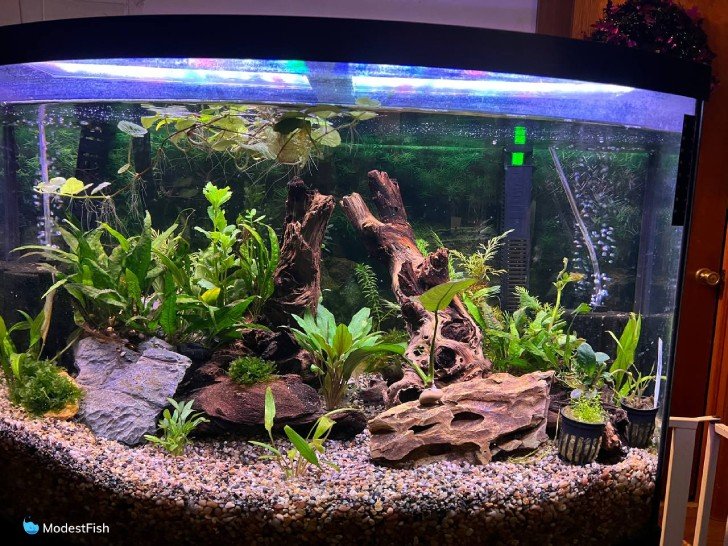
That way, you can better know what to expect when you order one of these and add it to your tank.
The plants were given a score of 1-10 for the following criteria:
- Planting – how hard is it to place the plant in the tank and get it to stay put?
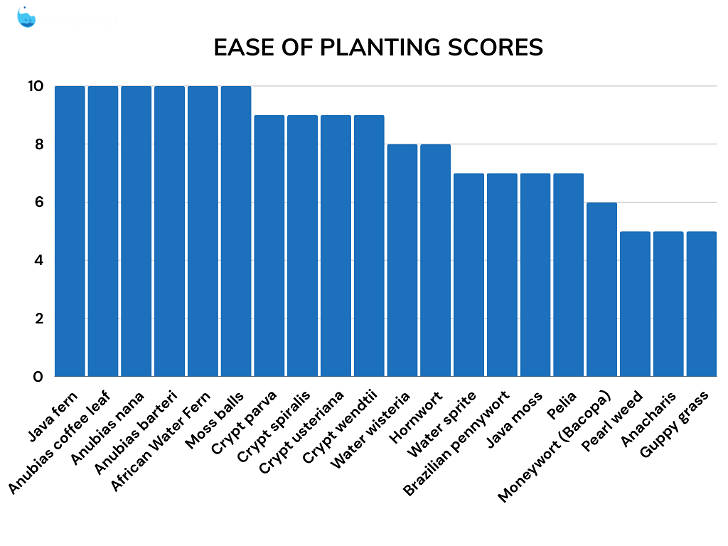
- Trimming – how frequently does the plant need to be trimmed?
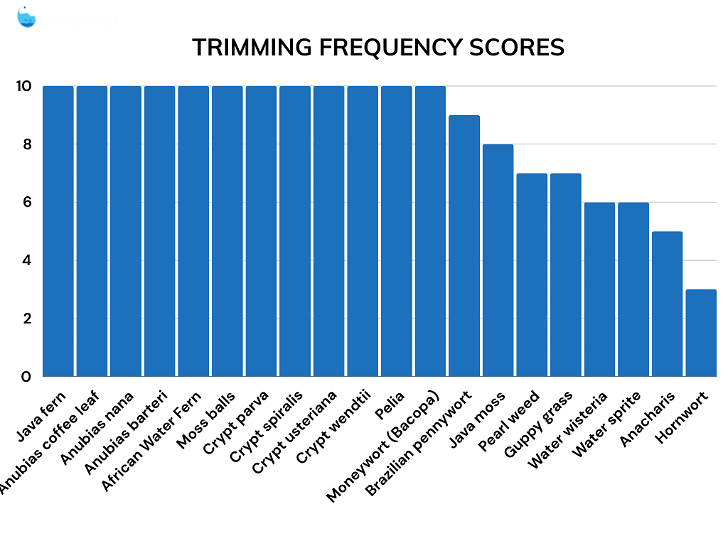
- Algae control – how difficult is it to remove algae from the plant?
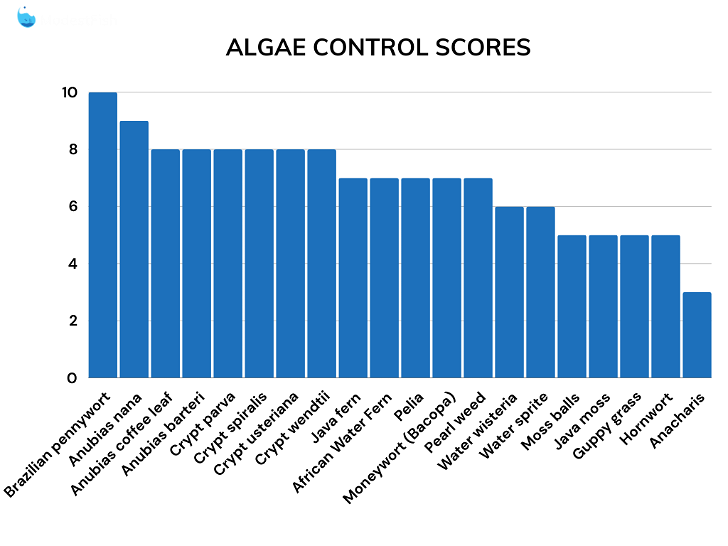
- Sensitivity – do changes in water parameters cause the plant to melt back and lose its leaves?
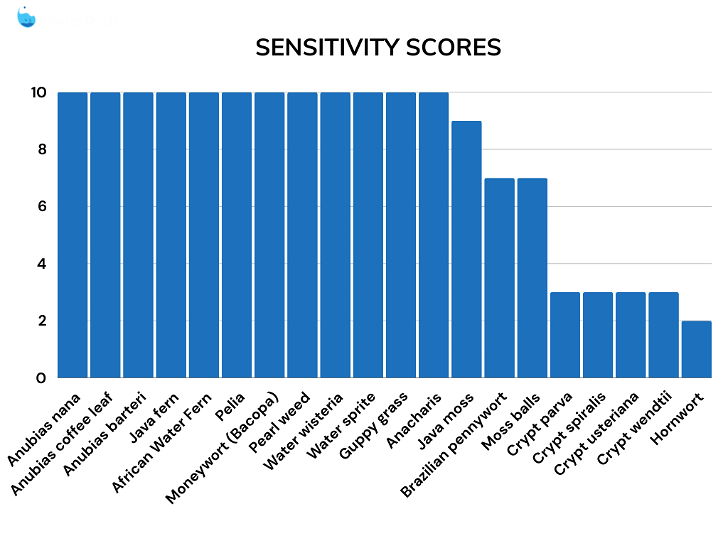
- Hardiness – is the plant tolerant of varying conditions and/or benign neglect over time?
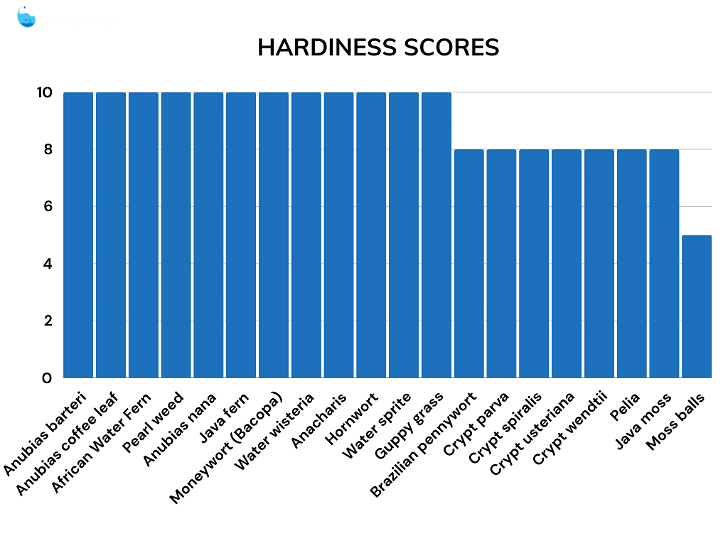
- Aesthetics – how attractive is the plant to look at?
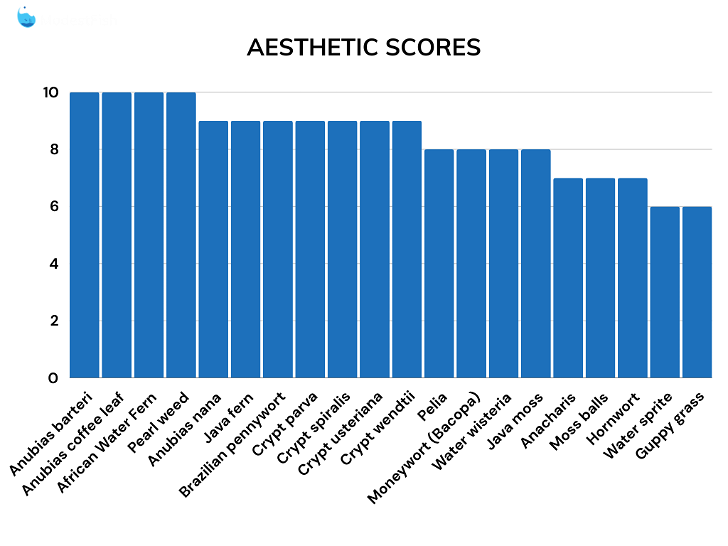
- Availability – how easy or difficult is it to find the plant in stores and online?
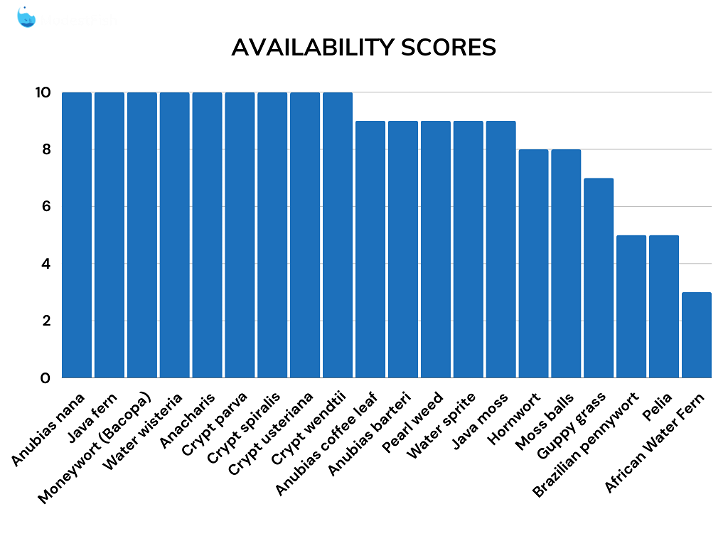
- Cost – how much does the plant cost versus how much of it you get when you purchase it?
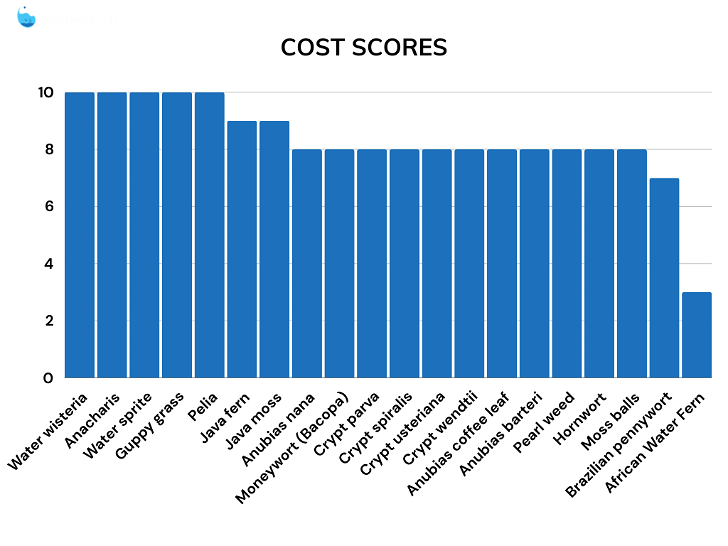
- Compatibility – can the plant withstand various tank inhabitants, especially those notorious for eating plants?
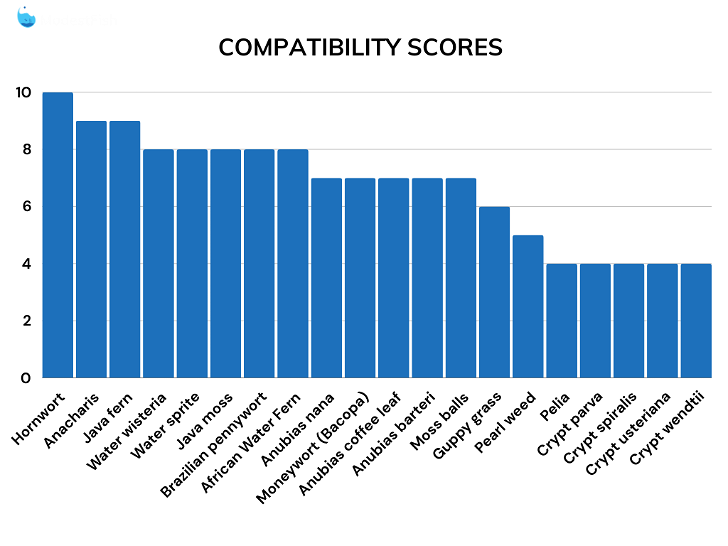
- Contributions – how much nitrate and other excess nutrients does the plant eat up?
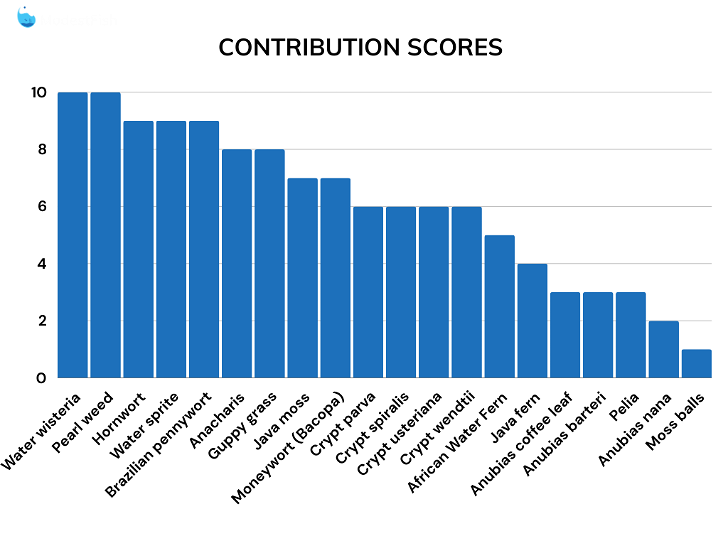
Overall scores after findings:
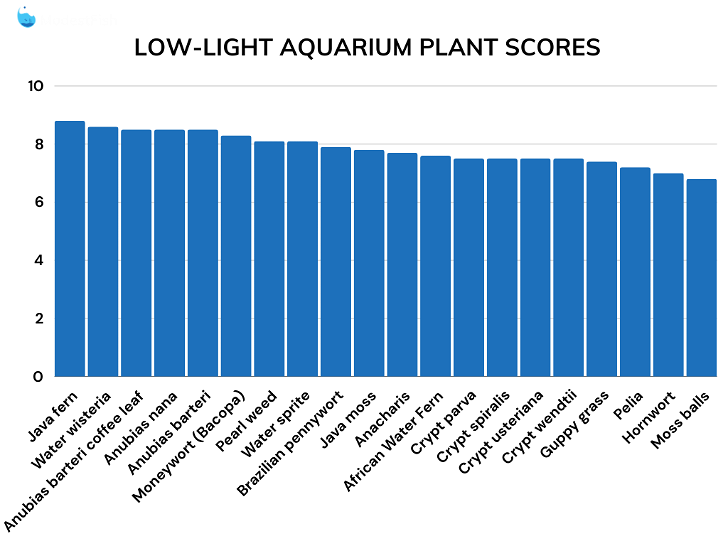
Best Low Light Aquarium Plant Reviewed
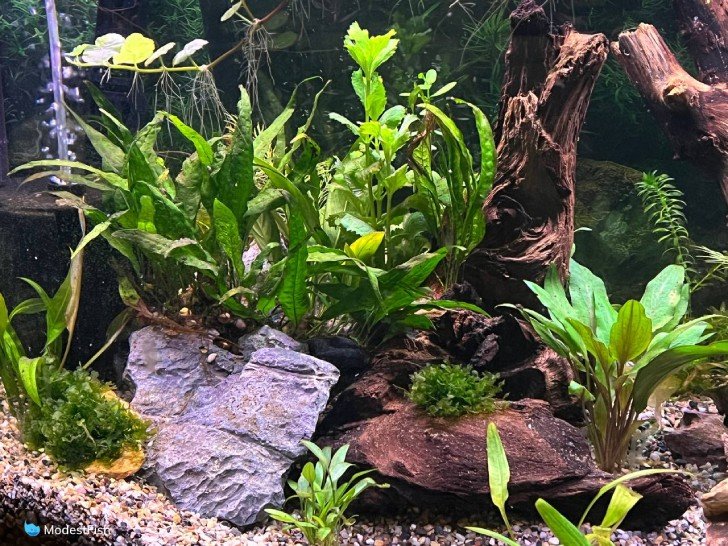
1. Java Fern (Leptochilus pteropus)
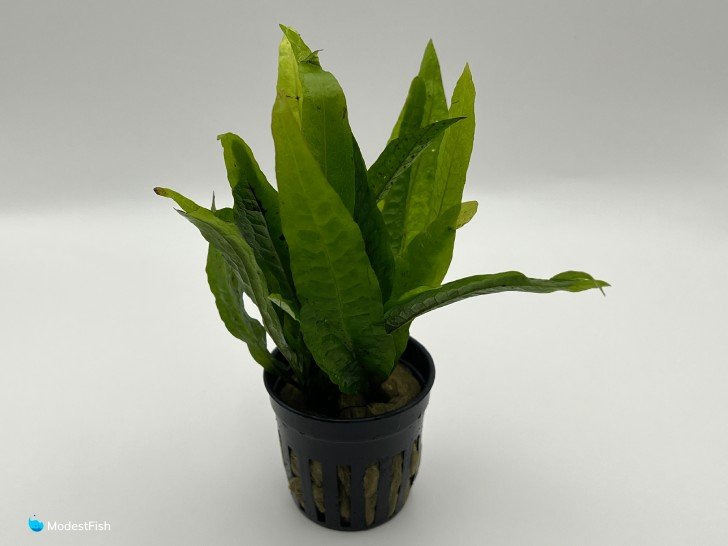
Verdict – beginner friendly plant that is pretty much the mainstay of any low light setup.
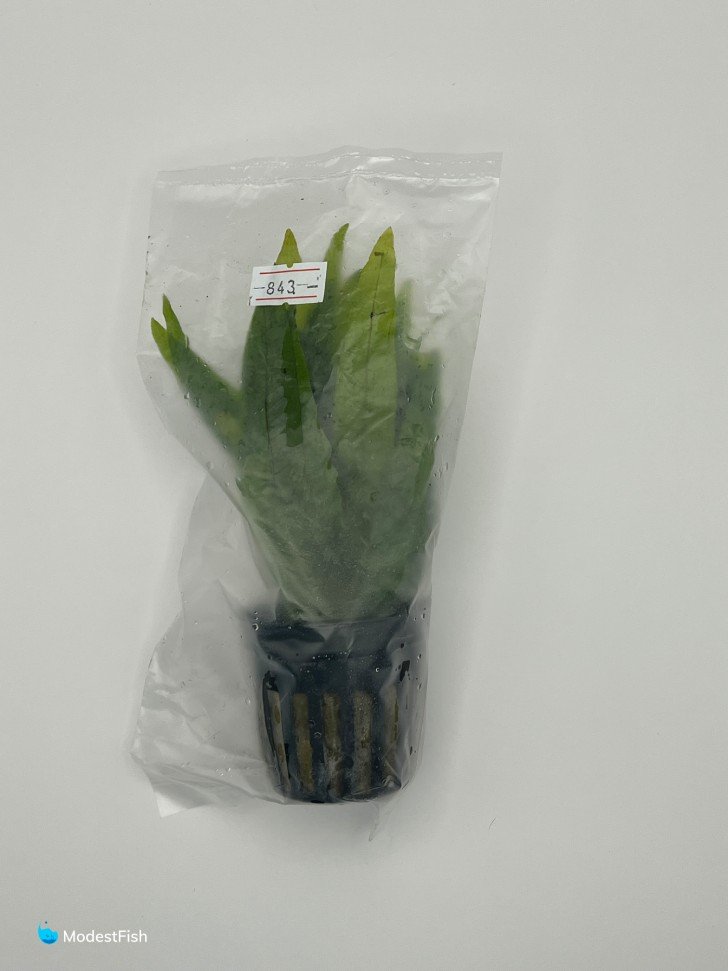
I have this plant in several of my tanks. For me, it’s always been easy to take care of and extremely hardy.
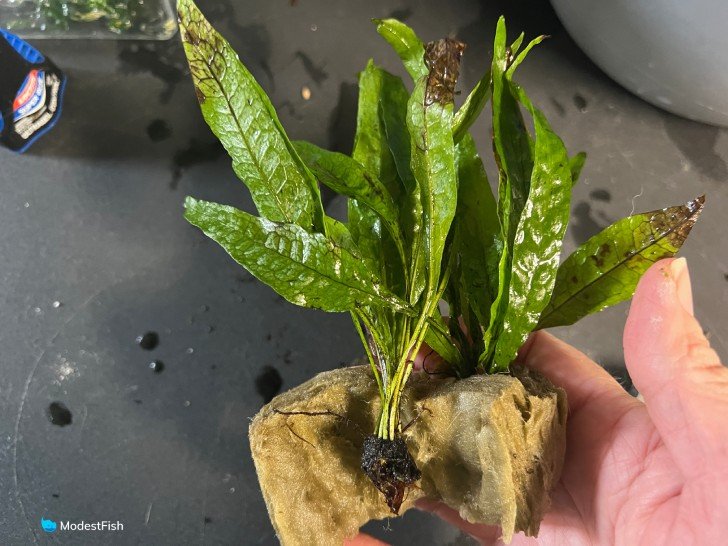
Java fern is an epiphyte, like anubias, that grows attached to a surface instead of rooted down in the substrate.
I’ve always found that caring for this plant is so simple. I usually just glue it to rocks or driftwood and place it in the tank. As it grows, its roots will stick to whatever surface it’s attached to.
I’ve always thought this plant is really pretty, with rough, bright green leaves.
I’ve definitely noticed that this plant grows slowly, but steadily. It doesn’t need frequent trimming and it’s fairly easy to clean algae off if necessary.

Pros:
- Tough and versatile plant
- Doesn’t require much maintenance
- Easy to plant
Cons:
- Grows slowly

Last update on 2024-04-26 / Commissions Earned / Images from Amazon Product Advertising API
2. Water Wisteria (Hygrophila difformis)
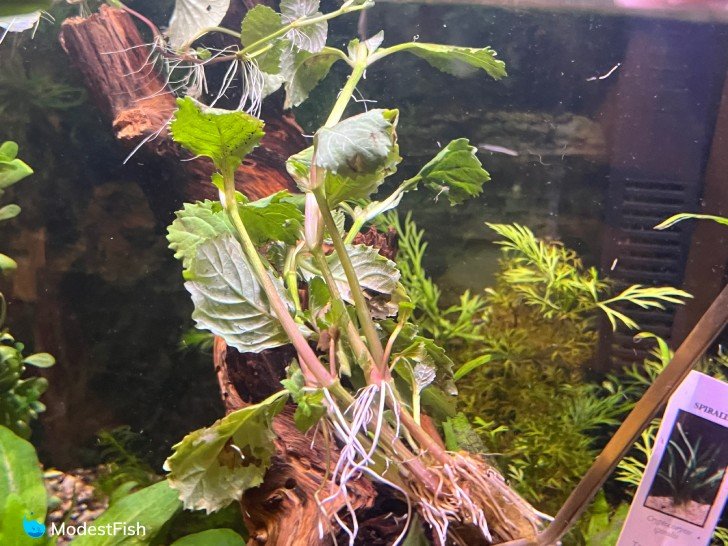
Verdict – easy, fast-growing stem plant that removes lots of nitrate, but needs frequent trimming and replanting.
I’ve kept water wisteria for years. It grows like a weed!
This bright green plant has super cool palmate leaves when it’s grown underwater.
I swear, if you look close enough, you can see this stuff growing. I see noticeable growth every week.
It does a great job of removing nitrate from the water column. It’s one of the best plants for this.
But, all that fast growth is a double edged sword. You’ll need to frequently trim this plant. I usually recommend that you pull up the plant, cut off the tops and then replant those cuttings.

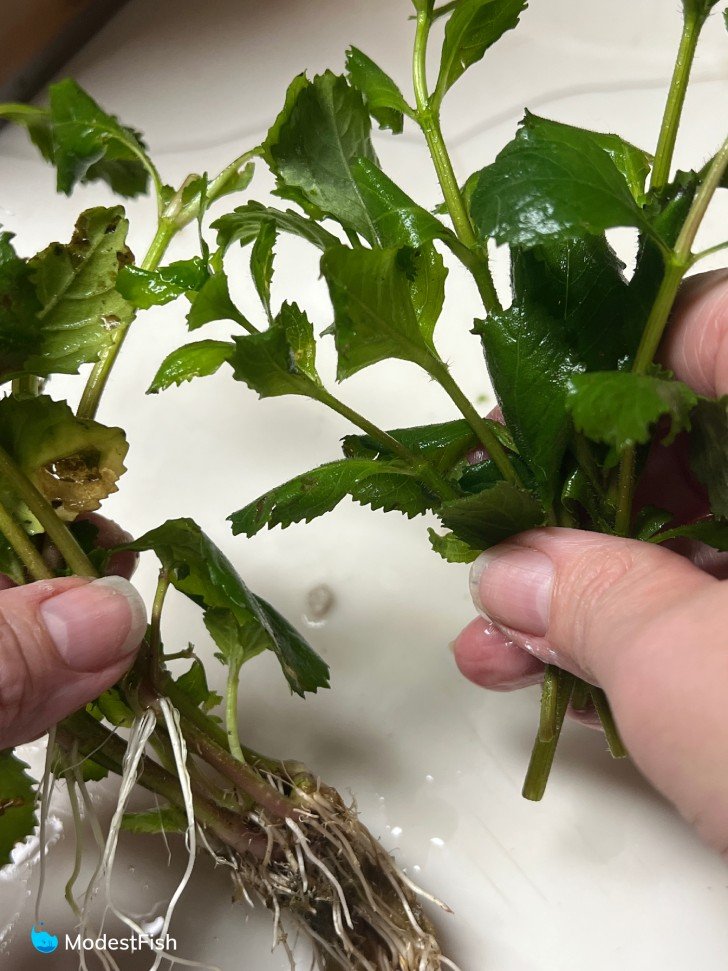
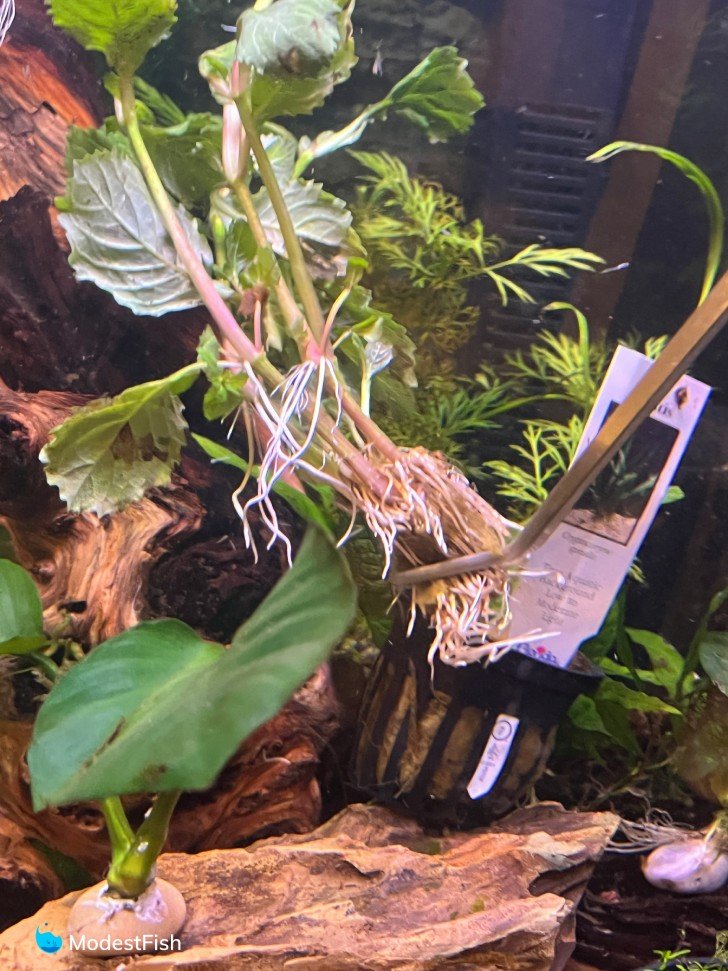
The bottom portion of the plant often loses its leaves and just looks raggedy. So this plant helps your water parameters, but it does require some labor.
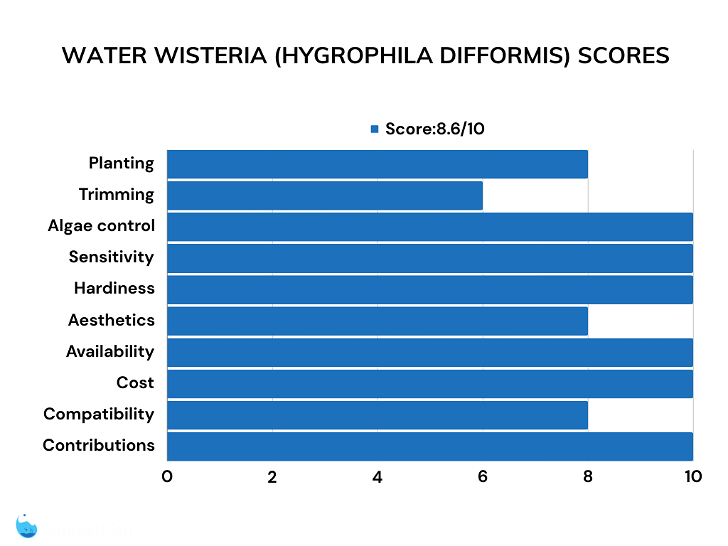
Pros:
- Fast growing
- Eats up a lot of nitrate
- Grows to the water’s surface
Cons:
- Needs frequent trimming and replanting

Last update on 2024-04-26 / Commissions Earned / Images from Amazon Product Advertising API
3. Anubias barteri – “coffee leaf”
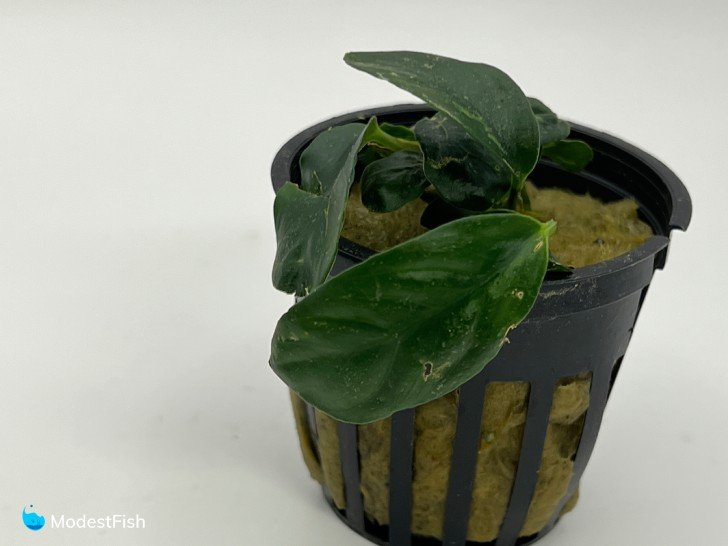
Verdict – a variation of Anubias barteri, this color morph has all the great benefits of its parent species, but with darker leaves that can contrast beautifully with other plants.
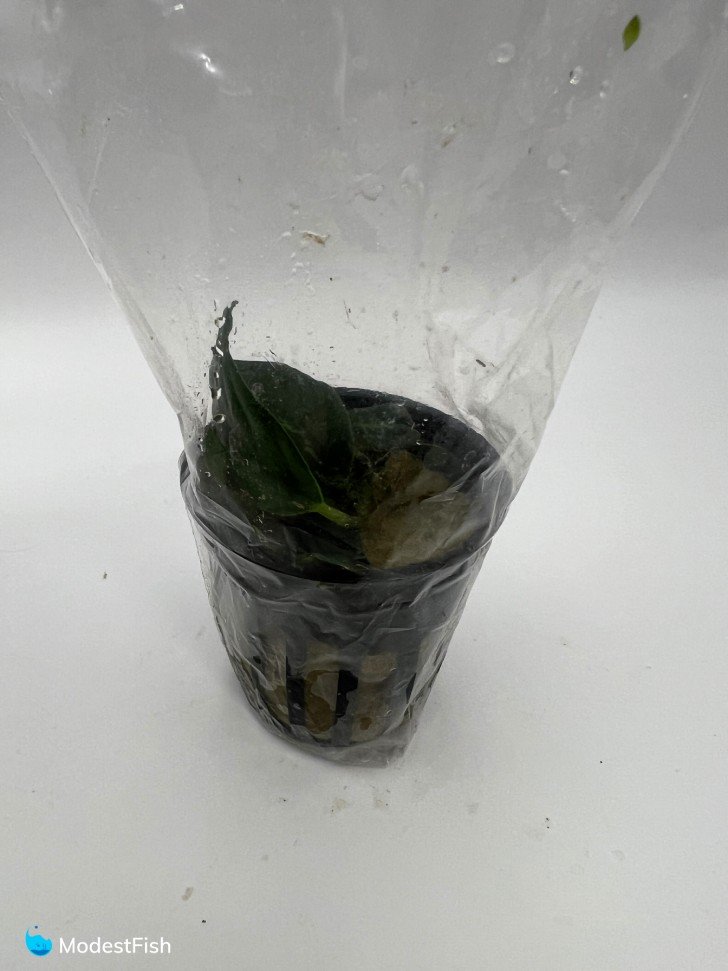
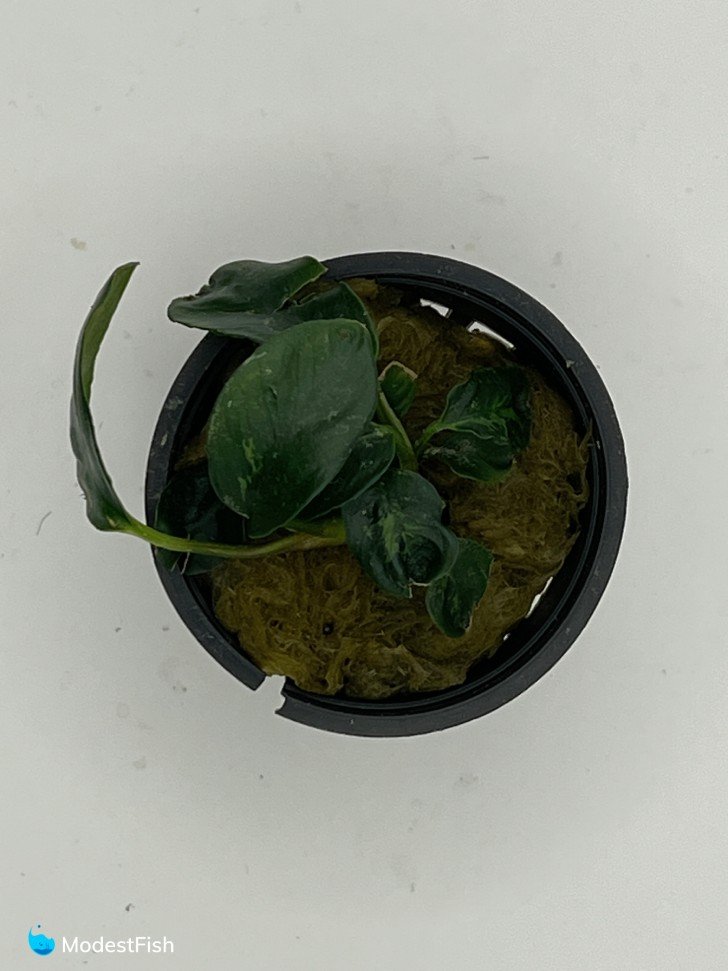

This color morph of Anubias barteri has the same beautiful leaf shape and texture of its mother species. The leaves are a much darker hue, which can be a nice change from just having bright green leaves in the tank.
I’ve found it to be just as hardy and undemanding as other anubias species. I just glue it to a rock or piece of driftwood and leave it to its own devices.
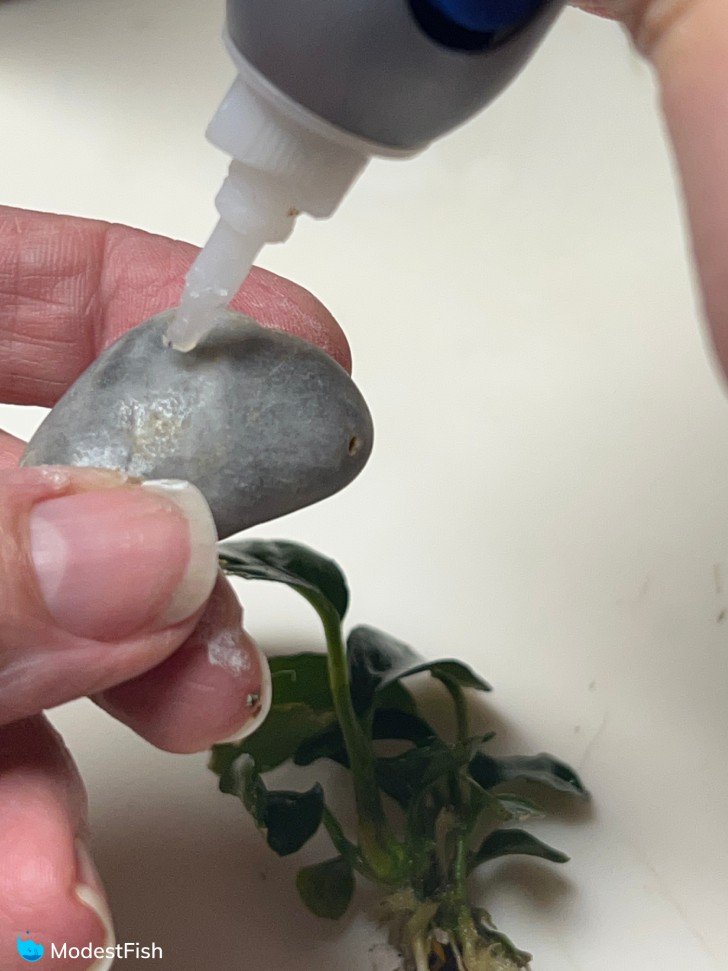
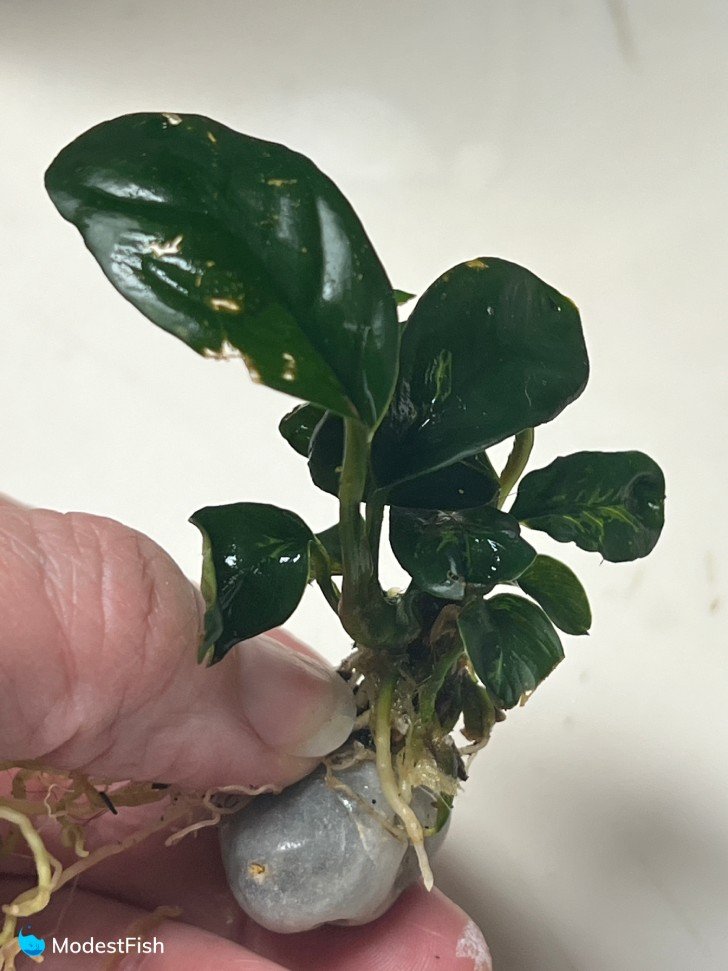
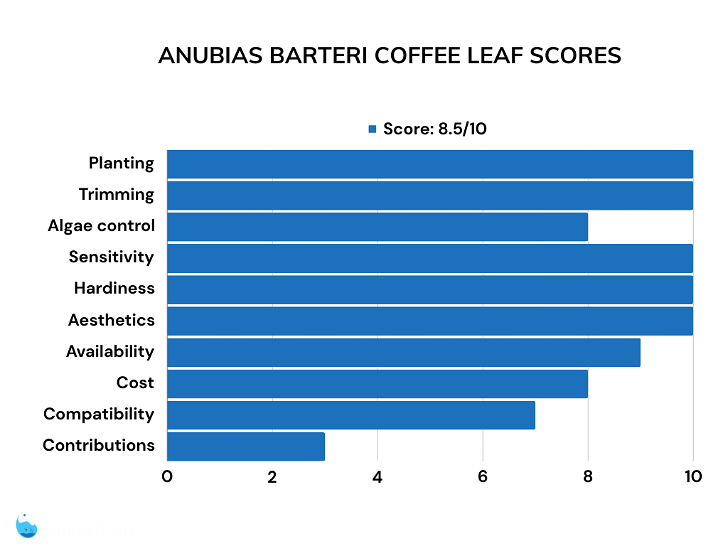
Pros:
- Easy, tough plant
- Darker leaves contrast nicely with other plants
- No extensive trimming or fancy substrate needed
Cons:
- Slow growing
- Doesn’t eat much nitrate

Last update on 2024-04-26 / Commissions Earned / Images from Amazon Product Advertising API
4. Anubias nana
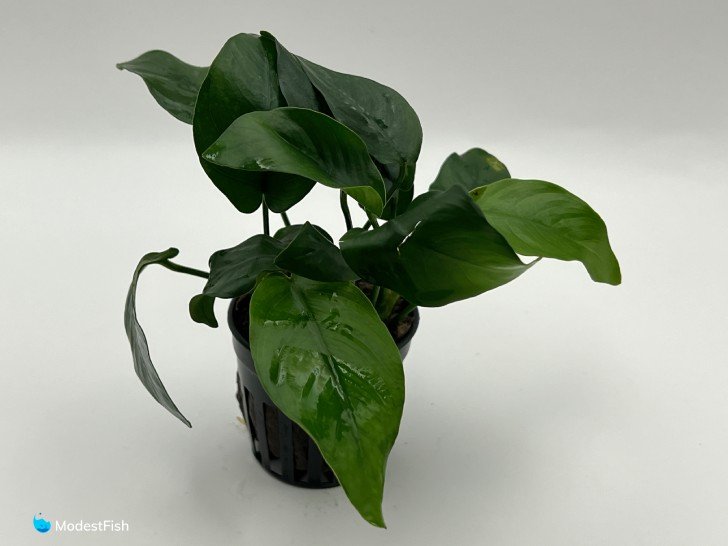
Verdict – this is a great foreground plant that stays small and doesn’t need much attention.

This is my favorite species of anubias to put in a small aquarium. I like that it doesn’t grow very large, and the leaves stay small, so it doesn’t outgrow being in the foreground of a tank.
I’ve always had it creep along whatever surface I’ve attached it to, staying low and never growing very tall.
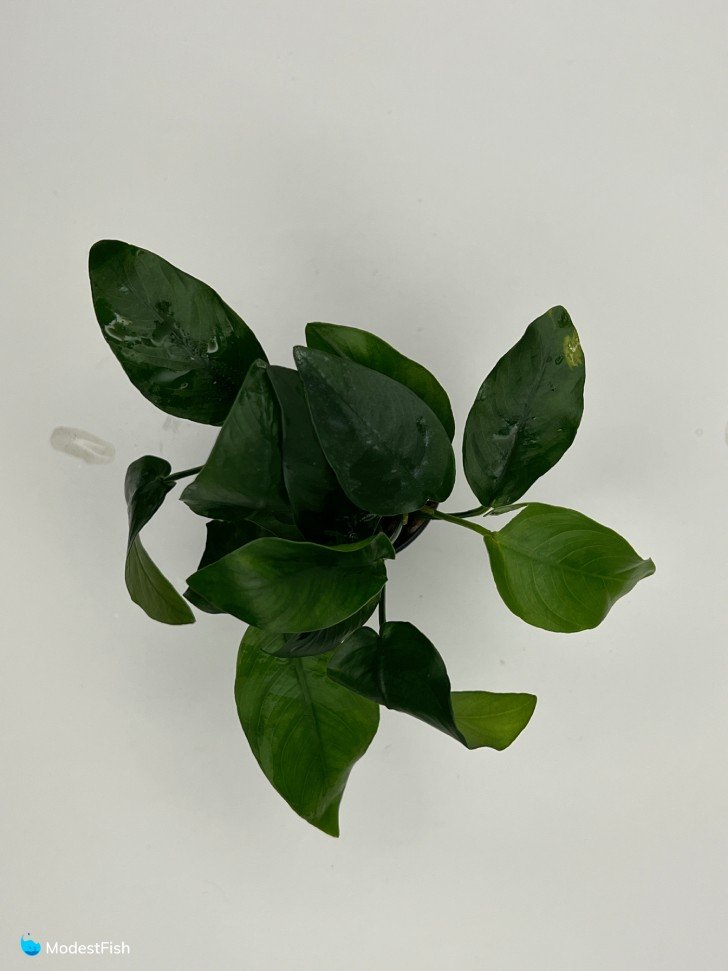
It’s a bit harder to clean algae off this plant because the leaves are so small. But it is tolerant of Seachem Excel and peroxide.
Because this plant is so small, and slow growing, it can sometimes get choked out by larger, faster growing plants. I’ve always found this plant to be fairly shade tolerant, but it does need some light.
But mostly, this is a cute, easy little plant that’s not fussy at all.

Pros:
- Easy to plant and care for
- Stays small
- Doesn’t require extensive trimming
- Tolerant of algae spot treatments
Cons:
- Grows slowly
- Does not eat up much nitrate

Last update on 2024-04-27 / Commissions Earned / Images from Amazon Product Advertising API
5. Anubias barteri
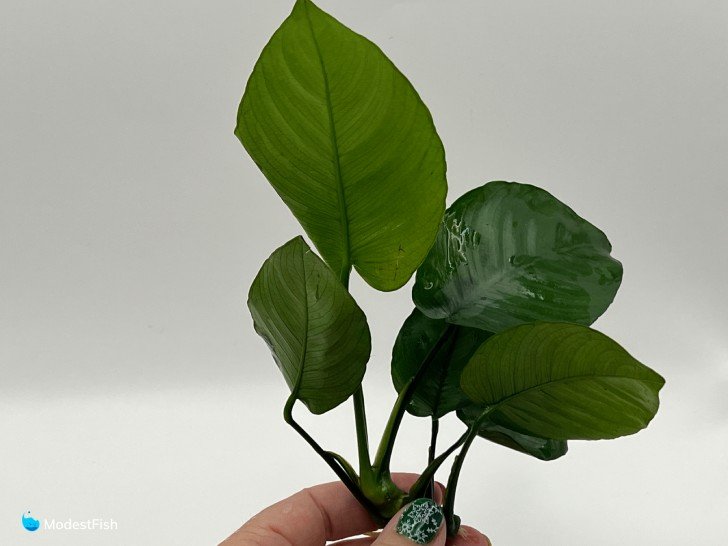
Verdict – this broad-leaved anubias species is easy to plant and maintain but is still a real beauty.
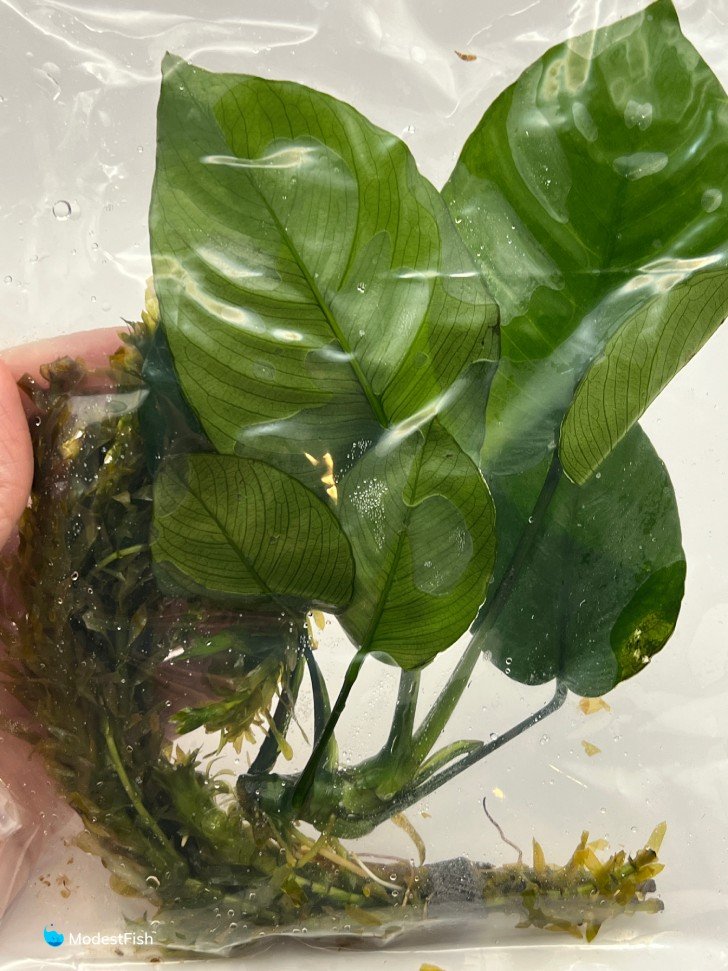
This is probably my favorite species of anubias. I just love the shape and texture of the broad leaves.
I think this is a great species for anyone with a low light setup. This tough little plant is tolerant of a wide variety of water conditions and doesn’t require a huge amount of upkeep.
Planting barteri is easy. It’s an epiphyte, a plant that lives attached to hard surfaces, like logs or rocks, instead of rooted in the substrate. I generally just glue the rhizome to rocks or driftwood in the aquarium and leave it to grow.
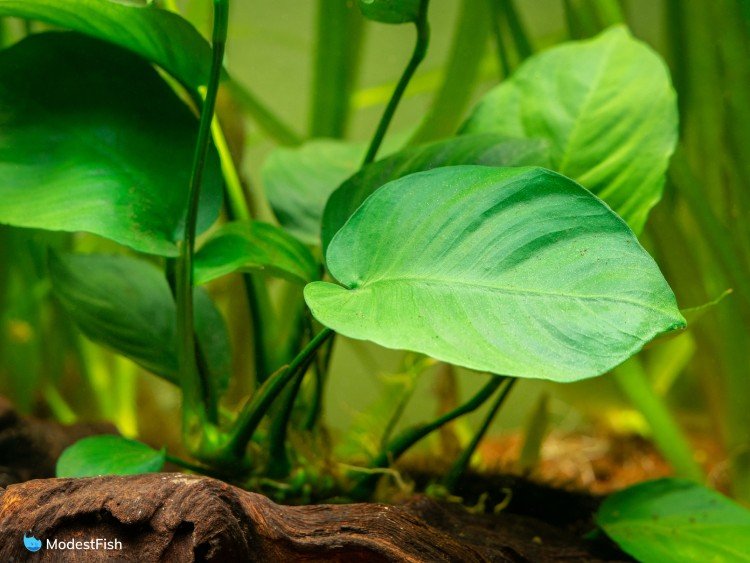
I usually get this super glue from LocTite. It’s pure cyanoacrylate, so it will even set underwater. My biggest tip is to be patient when pressing the plant against the surface of something with the glue. The glue will take up to two minutes to set up properly and keep the plant there.

Last update on 2024-04-26 / Commissions Earned / Images from Amazon Product Advertising API
A lot of the time, I glue my anubias plants to small rocks, something just big enough to weigh it down, so I can pick it up and move it in the tank any time I want.
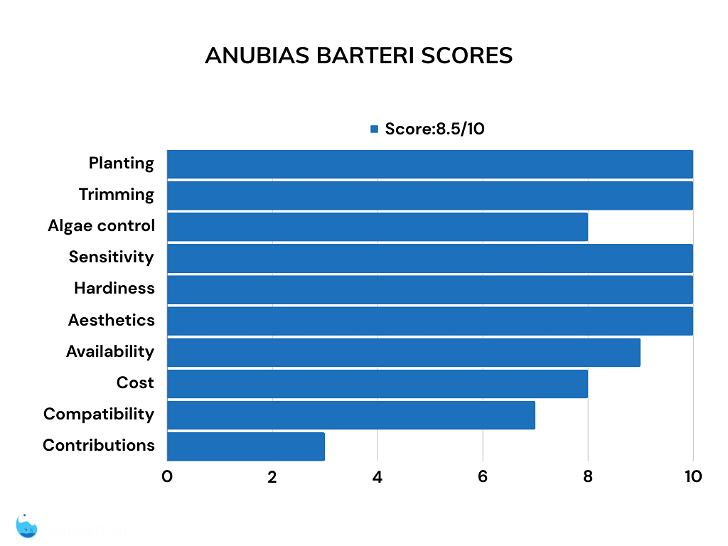
Pros:
- Beautiful leaf shape and texture
- Hardy and undemanding
- Easy planting
- Doesn’t need much trimming
Cons:
- Slow growing
- Doesn’t remove a large amount of nitrates
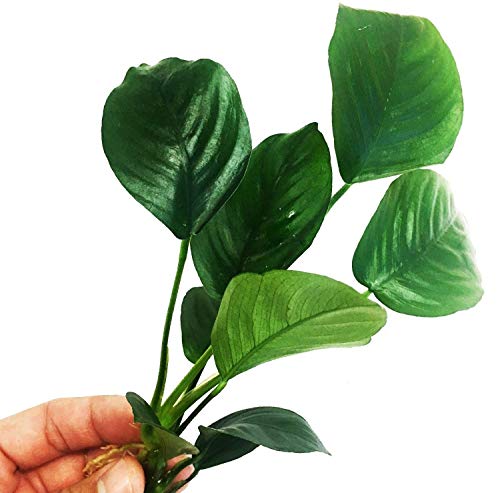
Last update on 2024-04-26 / Commissions Earned / Images from Amazon Product Advertising API
6. Moneywort (Bacopa monnieri)
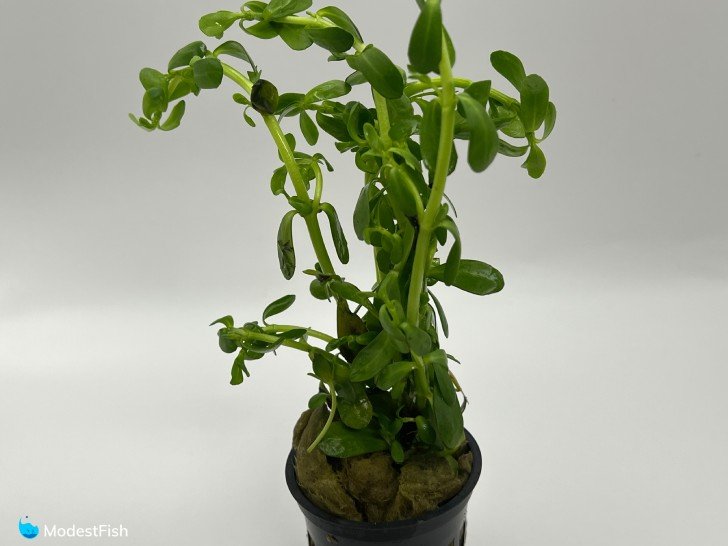
Verdict – this is a really easy background plant that gets tall but doesn’t require frequent trimming.
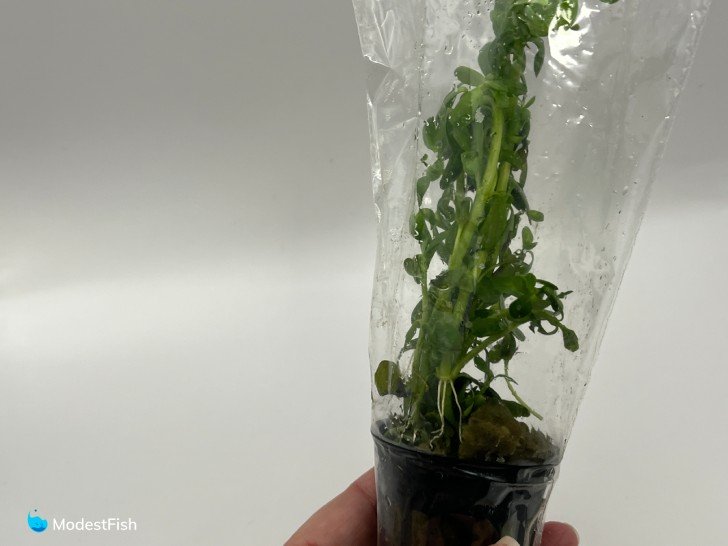
Moneywort is one of my all time favorite plants.
It’s a bright green stem plant with small rounded leaves. I always put it towards the back. I’ve found that it takes a bit to get established and really start to take off, but once it does, it will readily grow to the water’s surface and beyond.

One thing I love, it will poke up past the water’s surface and then put out these really cute little flowers.
I trim the tops off the plants and then root those cuttings down in the substrate to propagate new plants. New shoots will emerge from the leftover bottoms of the plants.
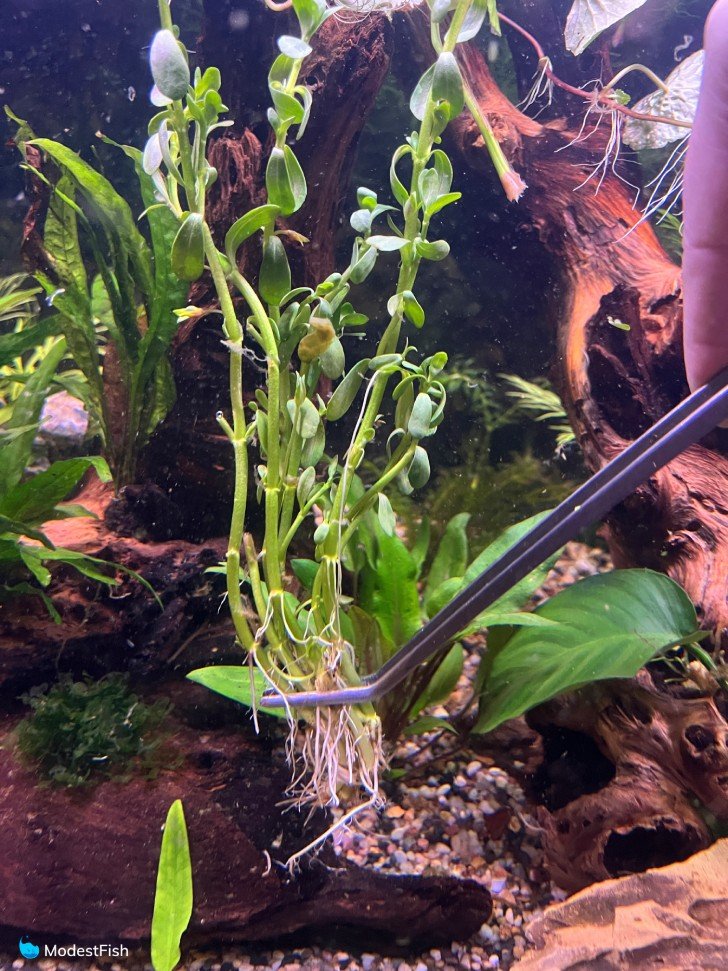
I love this plant for shrimp, especially. It gives them lots of surface area to graze on. It makes a nice thicket that’s great cover for small aquarium critters.
Pros:
- Easy background plant
- Great for shrimp and fry
- Blooms adorable flowers above the surface
Cons:
- Slow growing at first
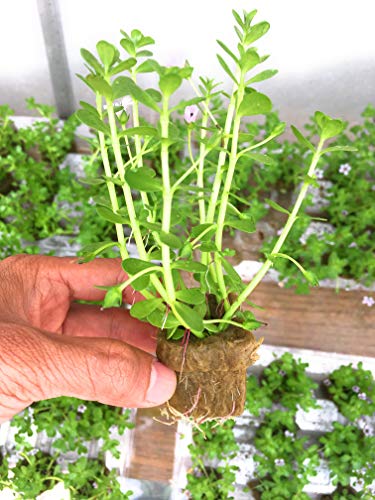
Last update on 2024-04-26 / Commissions Earned / Images from Amazon Product Advertising API
7. Pearl Weed (Hemianthus micranthemoides)
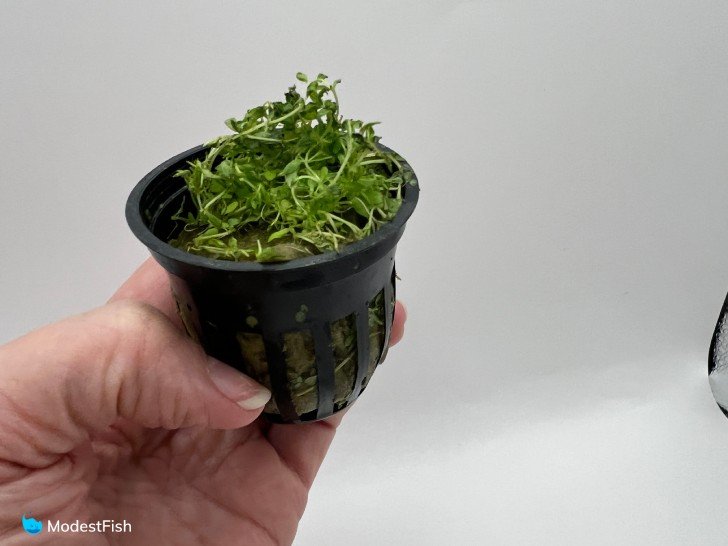
Verdict – easy carpeting plant that doesn’t require high lighting or CO2.
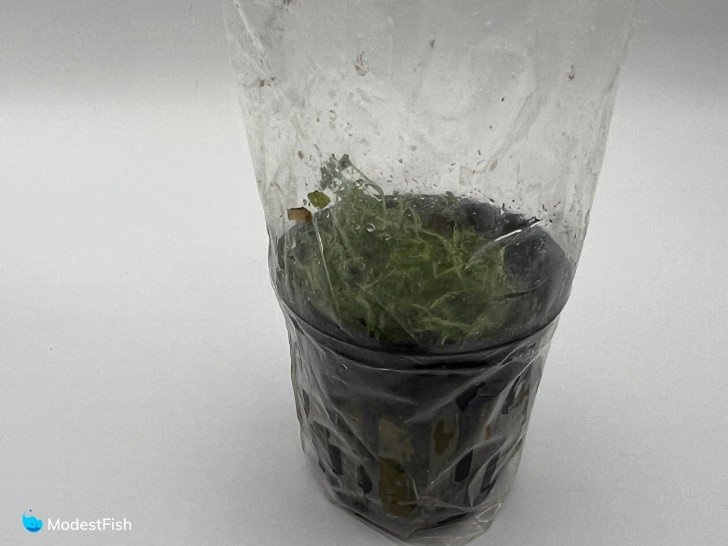
Pearl weed is a really interesting plant. It’s one of the easier carpeting plants in the hobby.
I will admit, I’ve found planting pearl weed to be a bit of pain in the butt. The little stems are very delicate. So it can be easy to break them while you’re trying to push them down into the soil.

But, once you’ve got them down in the substrate, the stems grow quickly.
I’ve had good luck growing pearl weed in soil, sand and even regular gravel. It can be a little harder to get it to stay down in the gravel at first, but once it roots, it will grow like crazy.
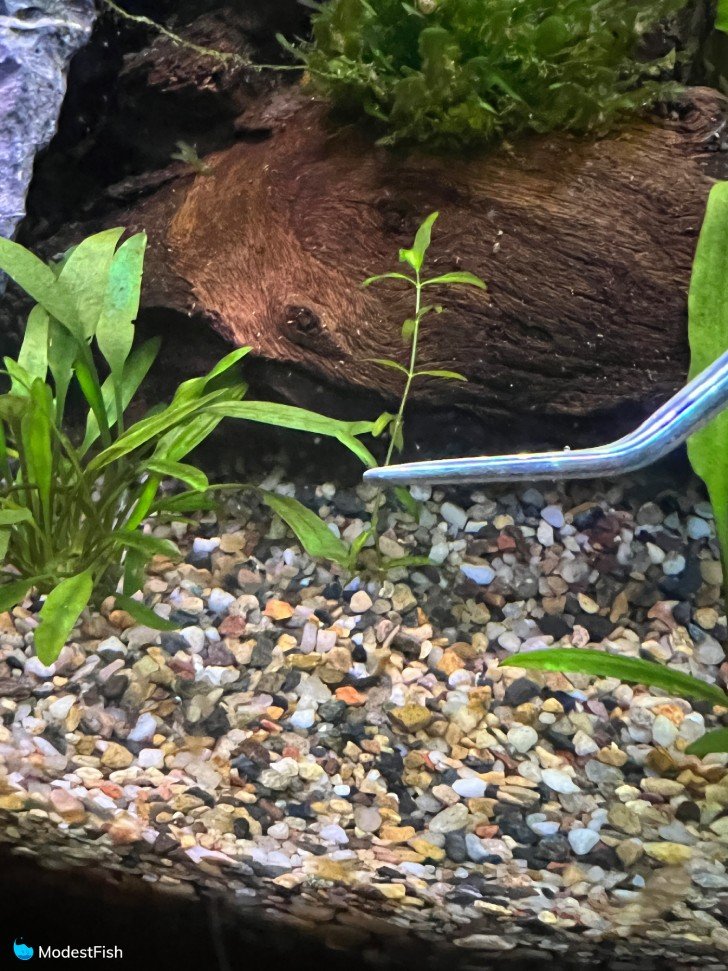
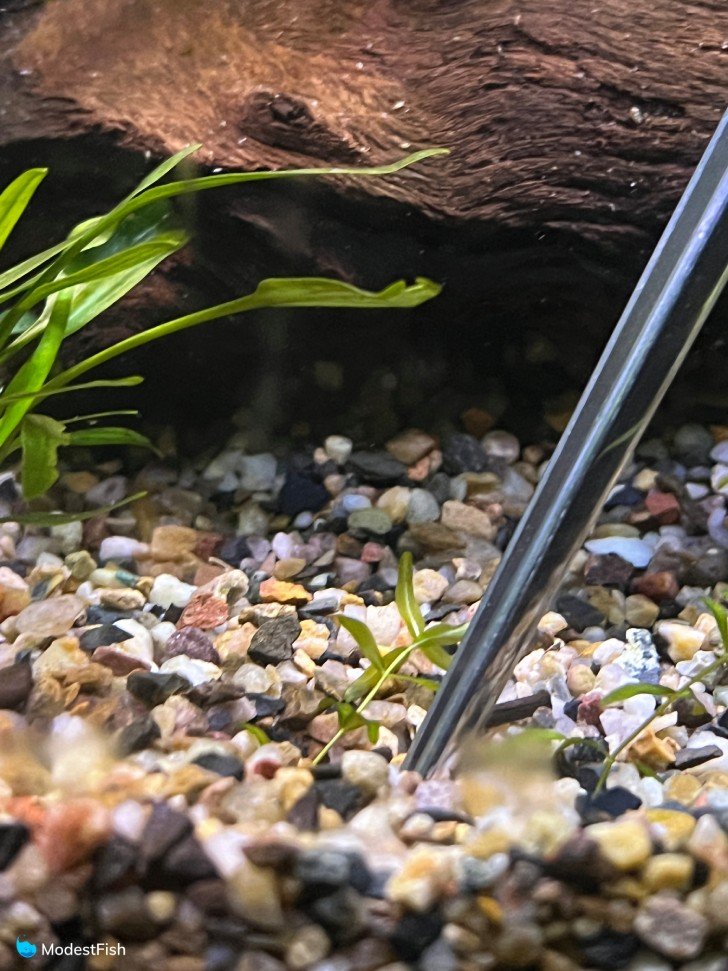
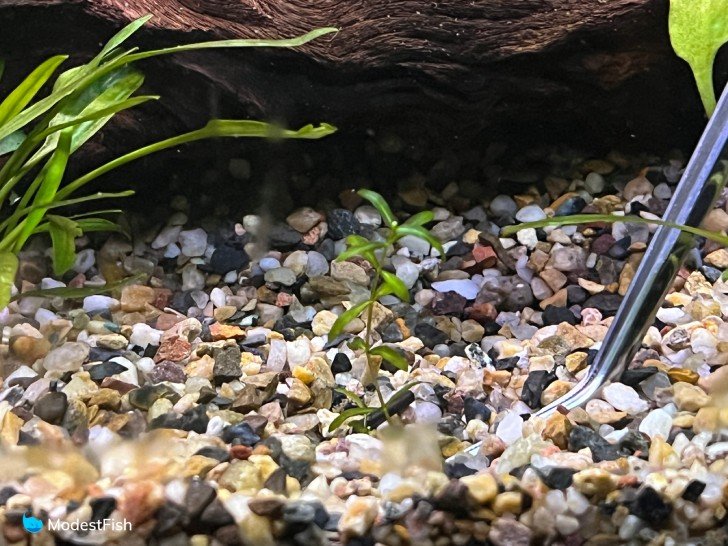
This fast growing plant eats up lots of nitrate directly from the water column. I have noticed that you need to trim it fairly frequently, especially if you would like it to form a carpet. But any trimmings can be shoved down into the substrate to form new plants and increase the coverage.
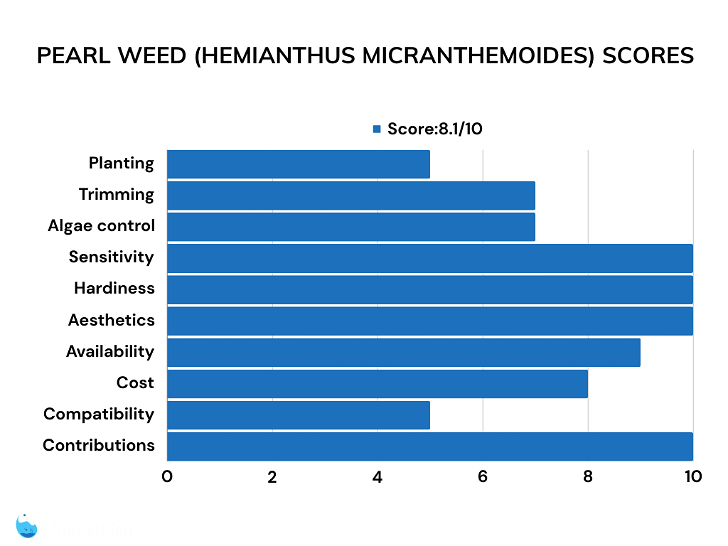
Pros:
- Fast growing, easy carpeting plant
- Eats lots of nitrate
- Can grow in soil, sand or gravel
Cons:
- Can be a pain to plant
- Requires frequent trimming

Last update on 2024-04-26 / Commissions Earned / Images from Amazon Product Advertising API
8. Water Sprite (Ceratopteris thalictroides)
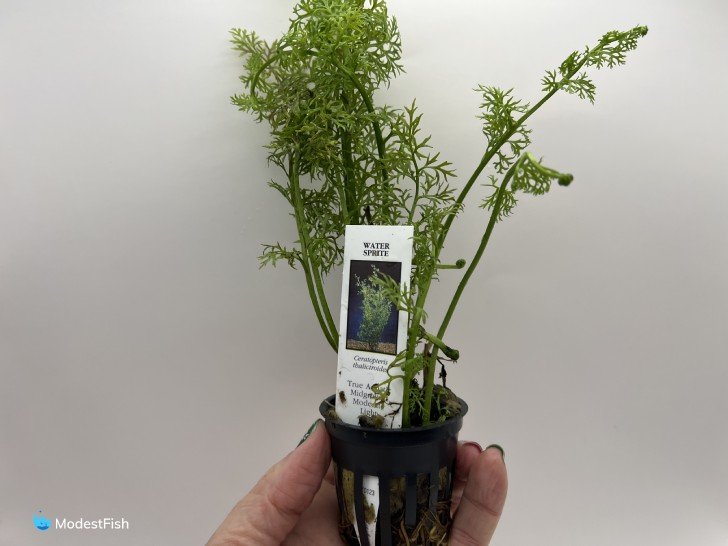
Verdict – this plant requires frequent trimming and replanting, but its fast growth eats up a lot of nitrate from the water column.
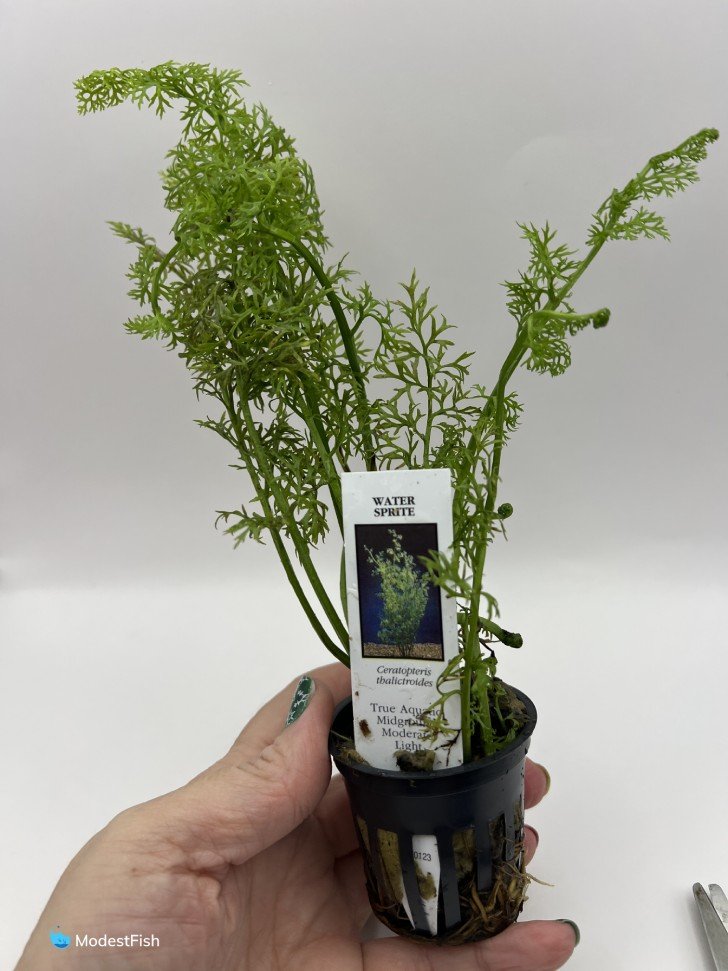
Water sprite is an extremely fast growing plant. It makes a great background plant and will quickly reach the water’s surface.
This plant does a great job of eating nitrate from the water column.
Planting this species can be a bit of a pain. The tops want to float away. I try to bury several inches of stem at the bottom and sometimes I have even needed to place rocks around the base to try to weigh everything down.
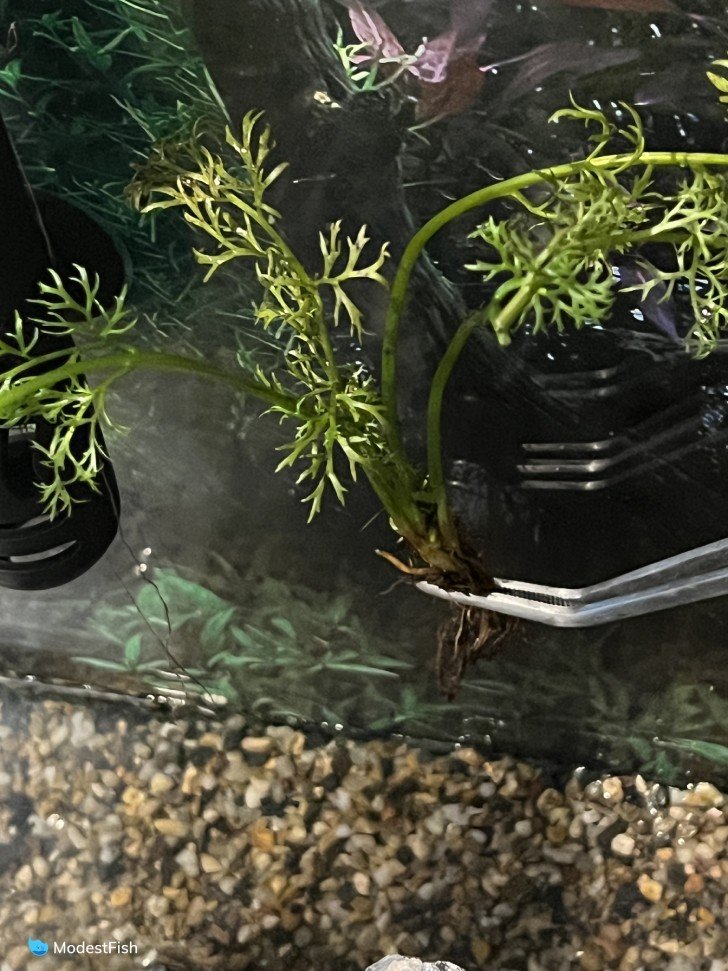

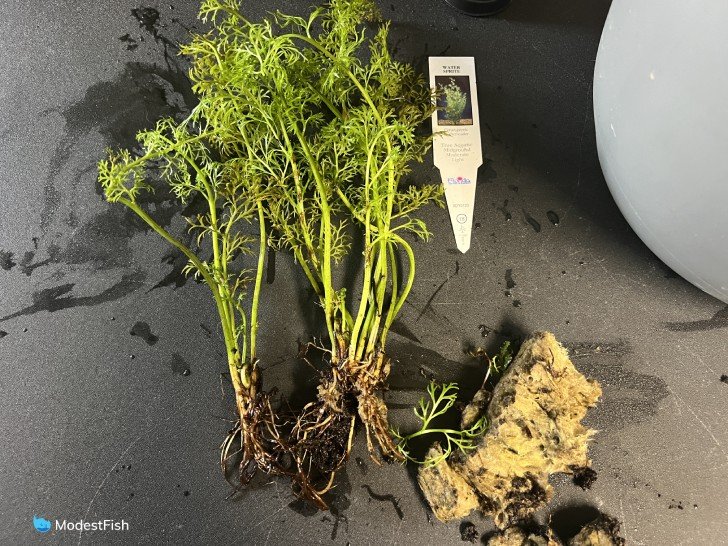
As water sprite grows, the bottom of the plant often gets raggedy and kinda gross looking. I frequently need to pull up the plants, cut the tops off and then replant them. And that can be a pain.
I would definitely say this plant takes some maintenance, so be prepared.
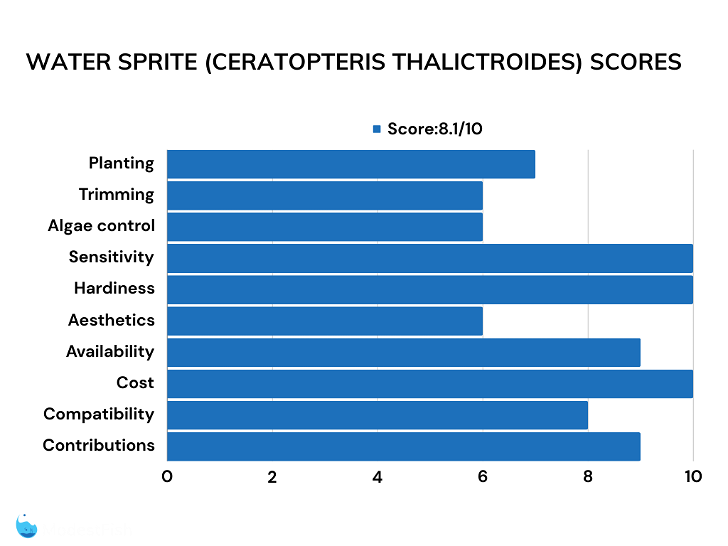
Pros:
- Fast growing
- Eats up a lot of nitrate
- Grows to the water’s surface
Cons:
- Needs frequent trimming and replanting

Last update on 2024-04-26 / Commissions Earned / Images from Amazon Product Advertising API
9. Brazilian Pennywort (Hydrocotyle leucocephala)
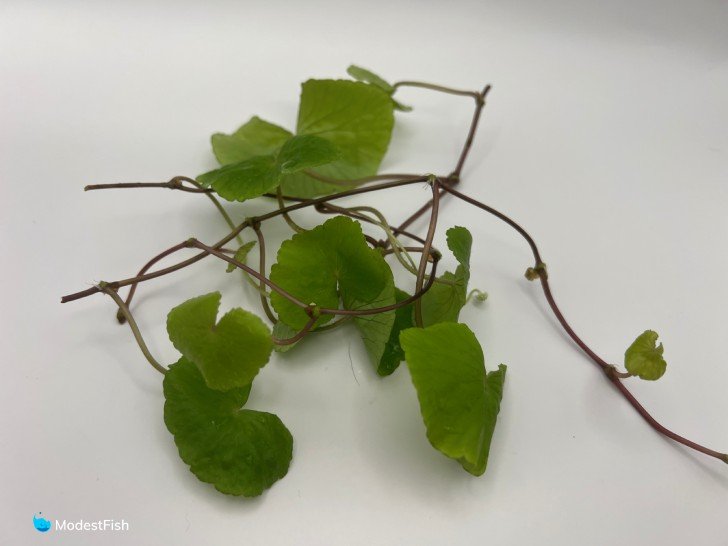
Verdict – this is a beautiful, easy to care for, floating plant that will eat up nutrients directly from the water column.
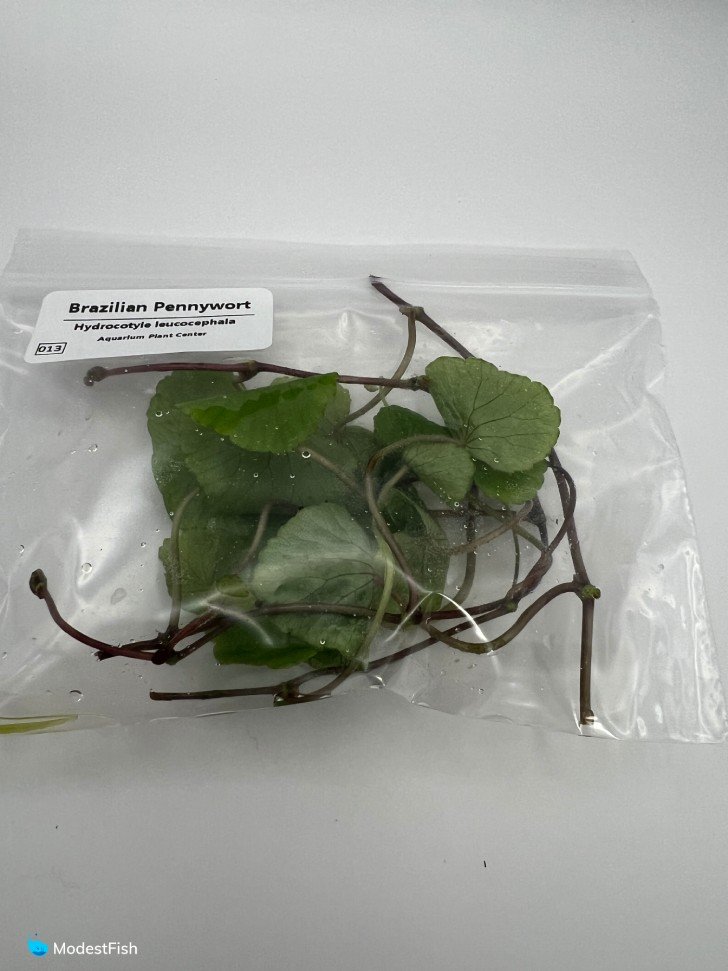
This is one of the coolest plants in the aquarium hobby, in my opinion. Brazilian pennywort grows as a long, skinny stem that kind of resembles an ivy vine.
Every few inches, a leaf sprouts from the stem. A little cluster of roots hangs down from each node where a leaf emerges.
These roots absorb nutrients directly from the water column, helping dispose of nitrate.
I love this plant. I’ve kept it many times over the years. Some sources will say that you can either float this plant or root it down in the substrate. I DO NOT recommend trying to root this plant. The stem that’s buried down in the substrate always rots and breaks away. Then the tops just float up to the top again.
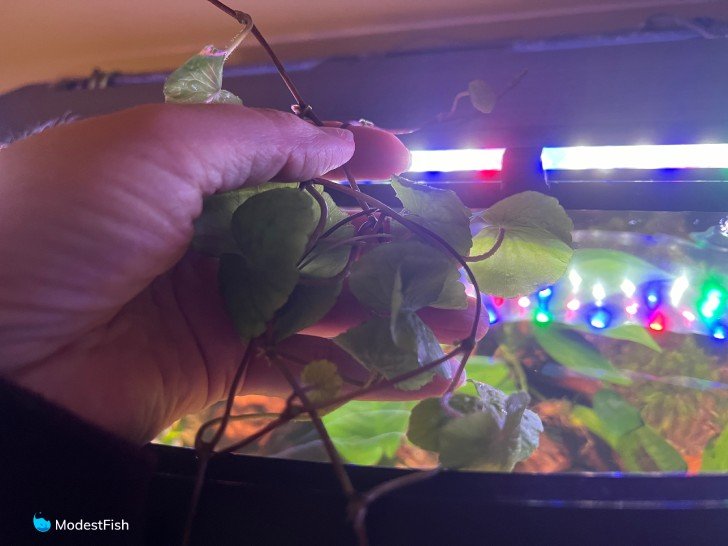
In my experience, just let this plant float up at the surface. That’s where it’s happiest and will do best. I secure it in place with floating feeding rings or veggie clips. I clip the vine to one of the tank walls and then let it trail along the surface of the water.
I’ve found that this plant is great for adding a little shade for the plants down below, which can help reduce algae.
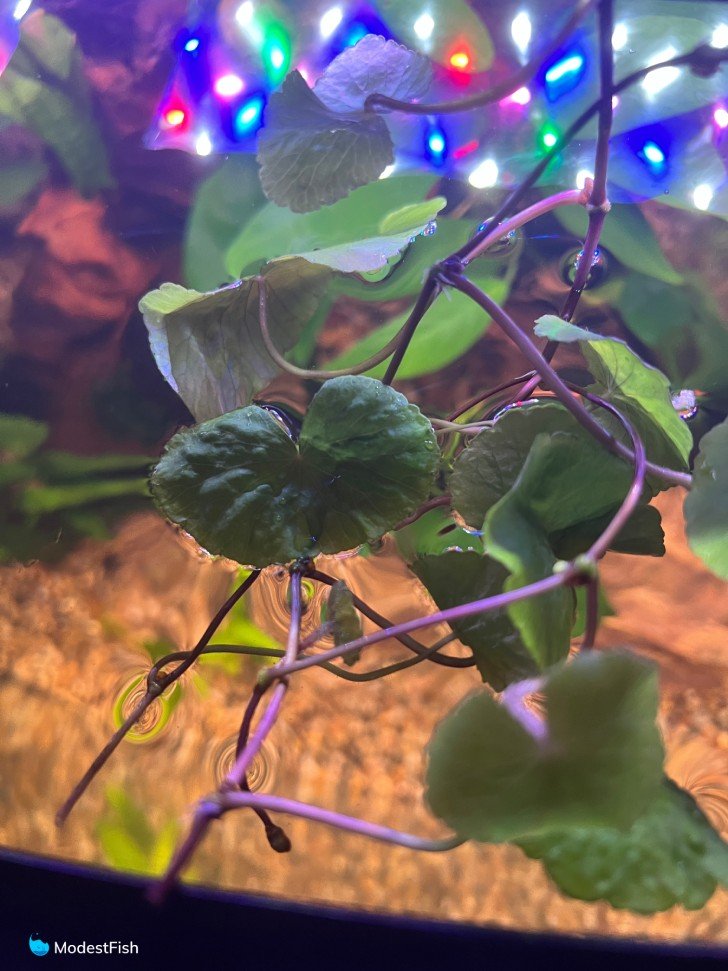
I’ve noticed that Brazilian pennywort grows vigorously for part of the year, but then will go dormant for several months. So, if you cut it back and then it doesn’t seem to grow much, don’t worry, it will pick back up in a month or two.
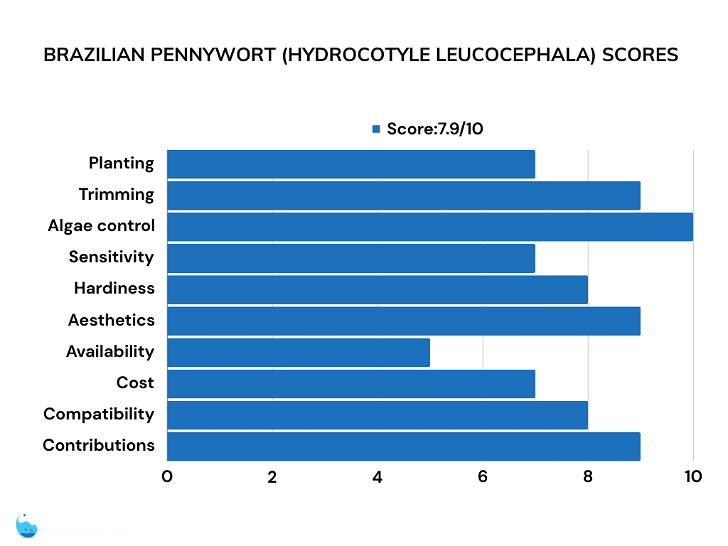
Pros:
- Easy floating plant
- Eats lots of nitrate
- Provides shade for plants below
Cons:
- Goes dormant part of the year

Last update on 2024-04-26 / Commissions Earned / Images from Amazon Product Advertising API
10. Java Moss (Taxiphyllum barbieri)
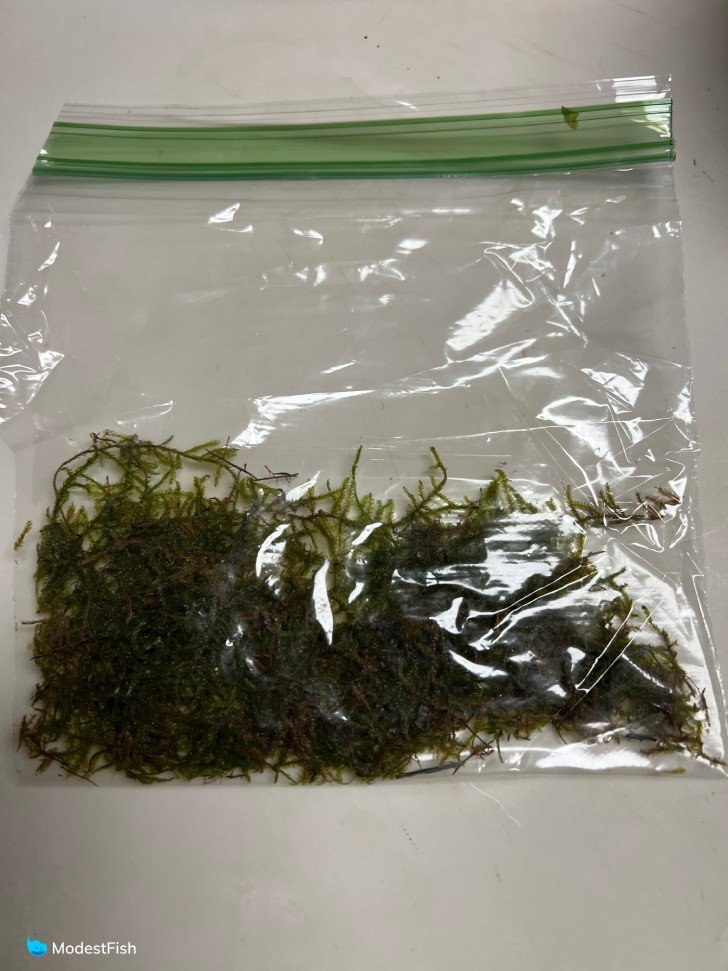
Verdict – Java moss forms a tangle of irregular fronds that makes for great cover for baby fish and shrimp.
This is one of the easiest aquarium mosses to grow. It can tolerate much lower levels of light than other species.
Java moss always looks like a tangle of messy green hair to me, like something you’d see on the head of a Muppet. I wasn’t crazy about it at first, but now I’m really fond of it.
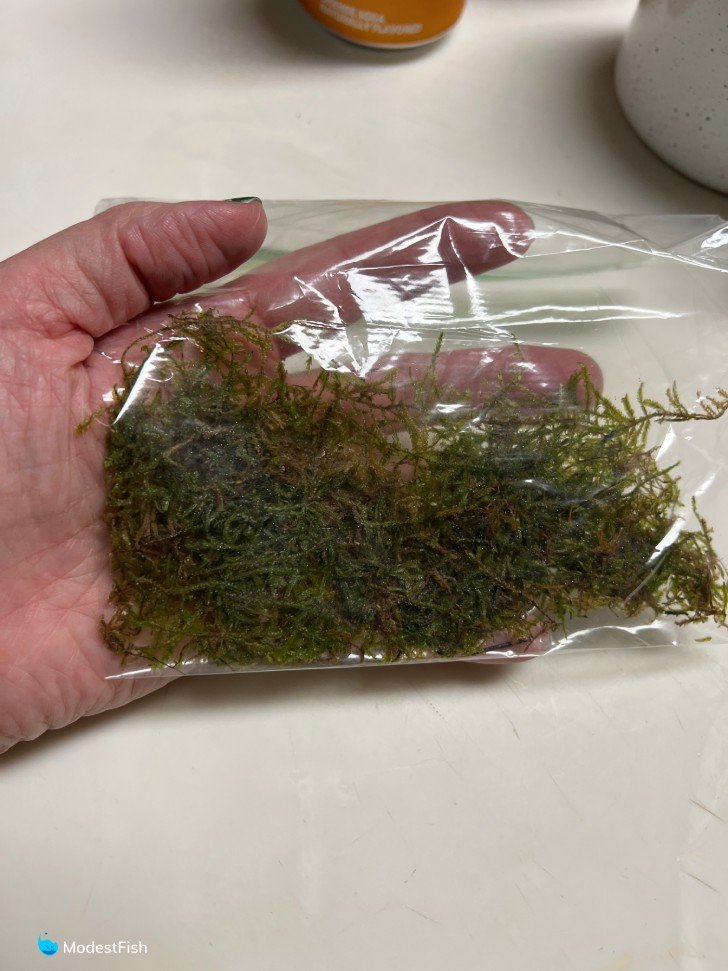
Granted, it’s not as pretty as Christmas or flame moss, but it’s much more tolerant of low light conditions.
It’s easy to plant. I usually just super glue some small chunks to rocks and simply place it in the tank. As it grows, it will start to adhere to the surface on its own.
You can shape it up by giving it a quick trim with scissors if it starts to get too overgrown for you.
I’ve always found this to be a great plant for shrimp and tiny fish. They can hide among the fronds and feed off algae and infusoria that grow on and around the moss.
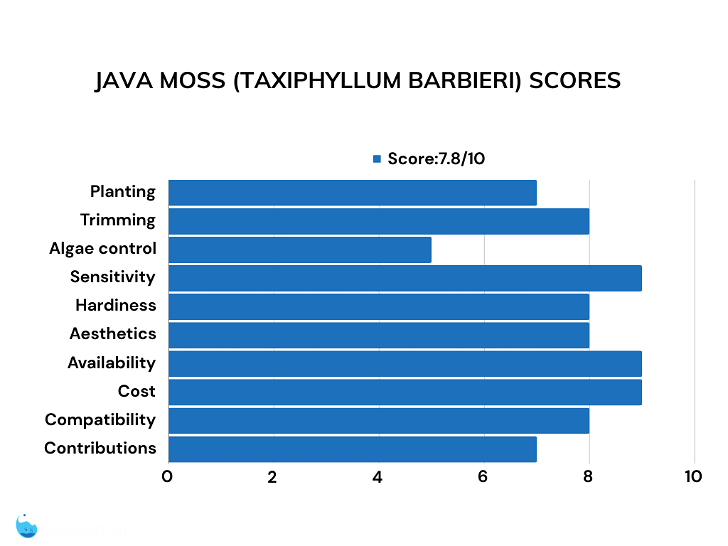
Pros:
- Grows quickly
- Great for fry and shrimplets
- Easy to plant and maintain
Cons:
- Can look a bit messy

Last update on 2024-04-26 / Commissions Earned / Images from Amazon Product Advertising API
11. Anacharis (Elodea sp.)
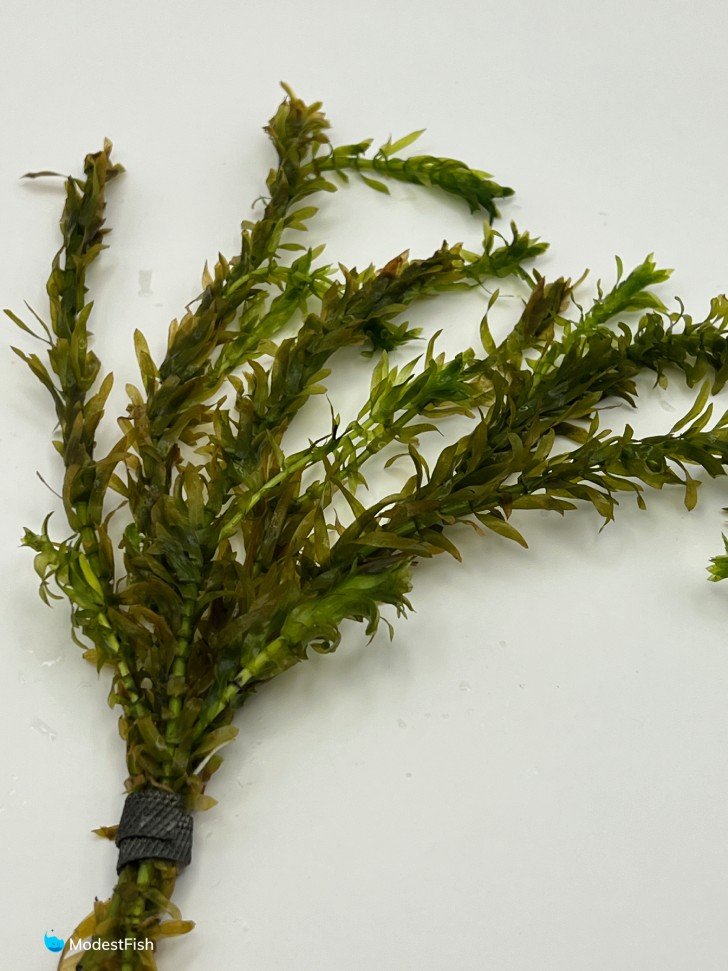
Verdict – this fast growing stem plant really eats up nitrate, but does require frequent trimming.
I think anacharis is a great plant if you don’t mind a bit of maintenance.
It’s been my experience that this plant grows quickly, very quickly. It grows noticeably every week.
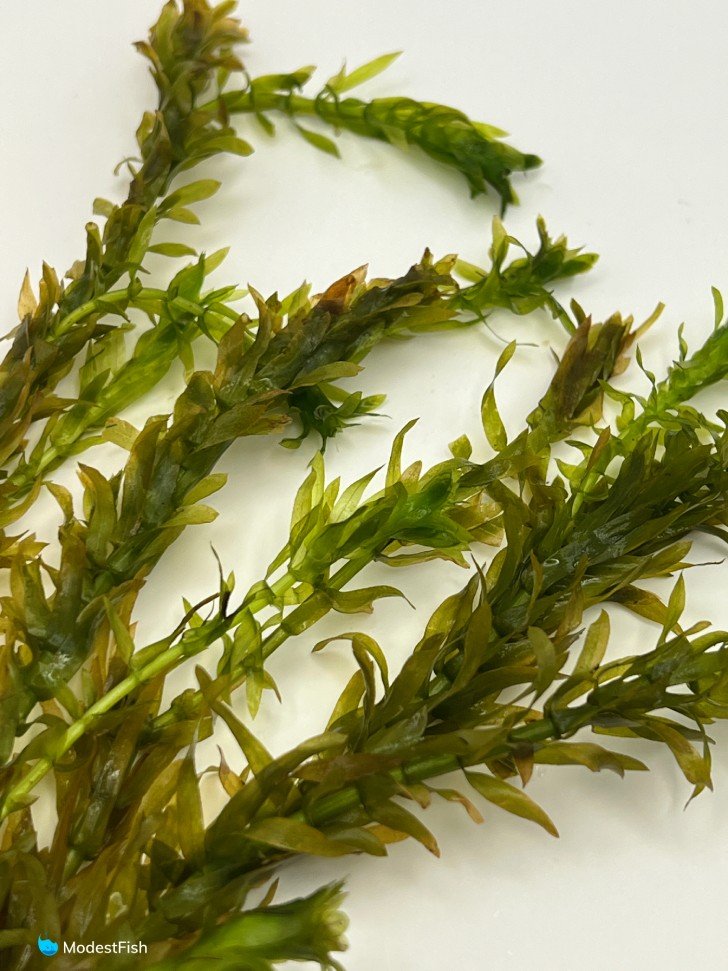
This is great if you’re trying to get it to reach the top of your tank. Plus, all that fast growth means the plant eats up a lot of nitrate out of the water column. Anacharis is a stem plant, meaning that it feeds through its leaves, absorbing nutrients directly from the water column, instead of through its roots.
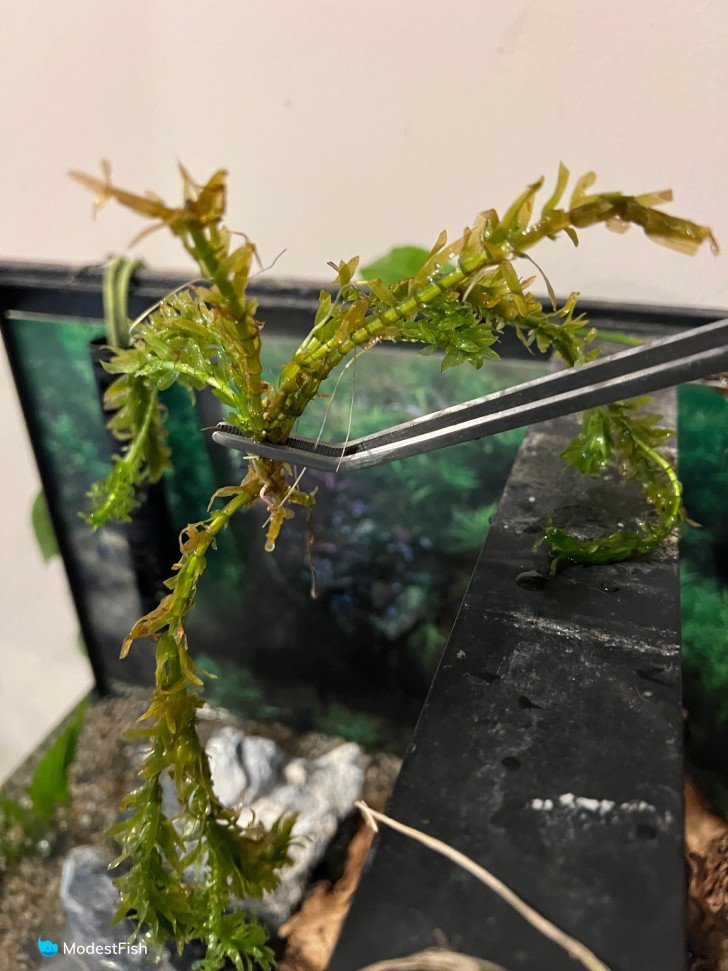
But, the fast growth also means that you’ll frequently have to trim it. The bottom of the plant can get really raggedy and beat up looking, so it’s often necessary to pull up the whole plant, cut off the bottom portion and then replant the tops.
It might not seem like a big deal at first, but it can get tiresome over time.
One thing I don’t like about this plant is trying to control algae on it. You can’t really spot treat it to remove anything that grows on it. Ornamental shrimp and otocinclus catfish are the best ways to keep algae off this plant.
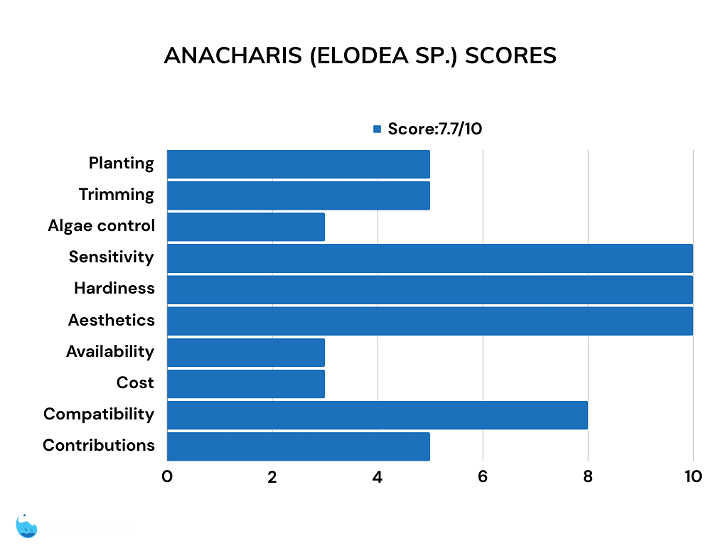
Pros:
- Fast growing plant that can really lower nitrates
- Will quickly grow to the top of the tank
Cons:
- Requires frequent trimming and replanting
- Hard to control algae on its surface

Last update on 2024-04-26 / Commissions Earned / Images from Amazon Product Advertising API
12. African Water Fern (Bolbitis heudelotii)
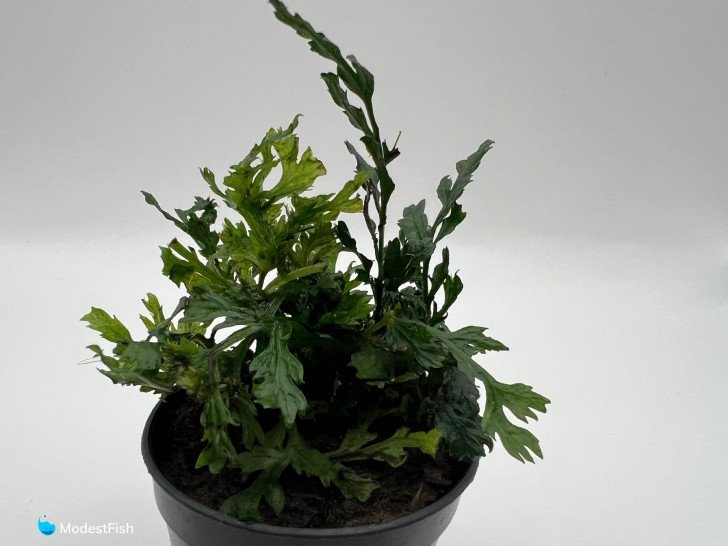
Verdict – this amazing and beautiful fern is an excellent and easy background plant for large aquariums.
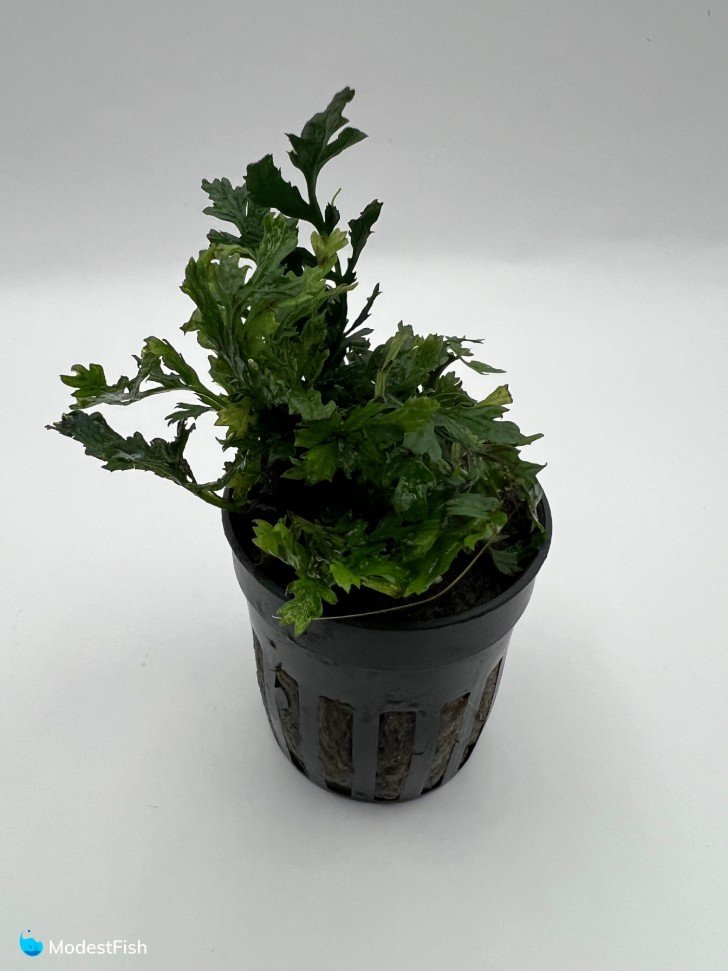
I love, love, love this plant! It makes a great background plant for tall tanks. I have it growing in the back corner of three of my tanks.
It does take a while for this plant to get established. For the first few months, I noticed that it hardly grew at all. But then it slowly but steadily began to fill in space at the back of the tank, becoming increasingly taller.
I love the aesthetic of this plant. It looks like a messy tangle of terrestrial fern fronds. It creates a great jungle environment for shrimp and small fish. Even my larger fish, like adult angels, are able to hide in a large African water fern.
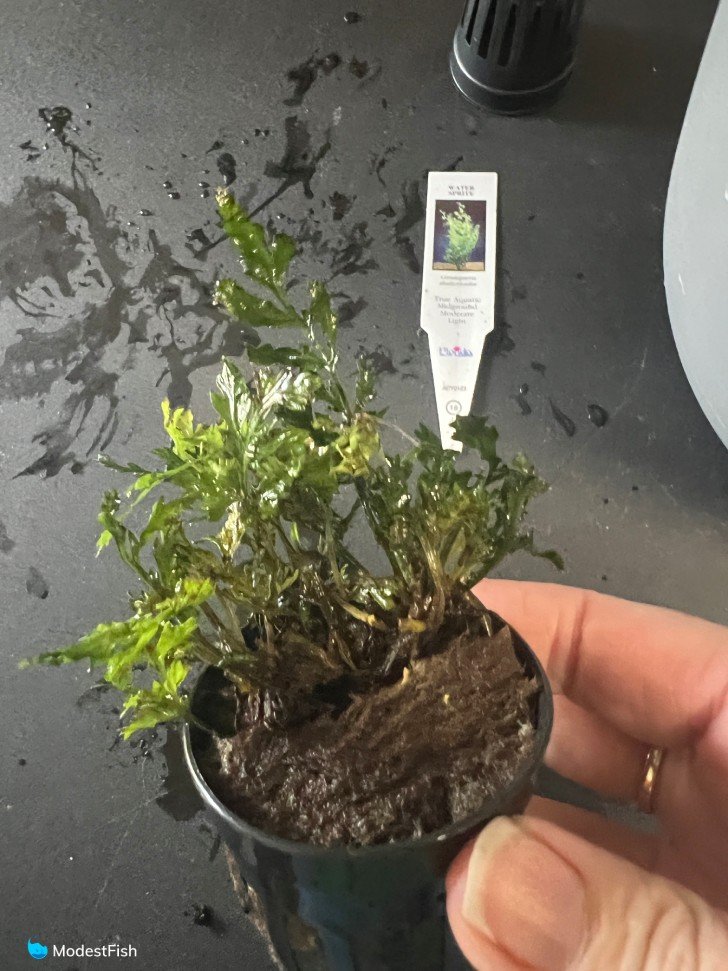
At first, when this plant is small, it doesn’t do that much for water parameters because of its slow growth rate. But, I’ve noticed it having more of an impact once the fern got really big.
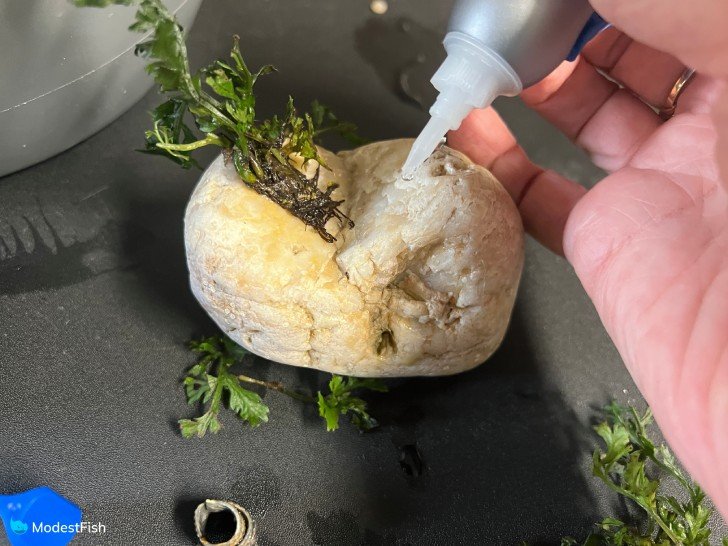
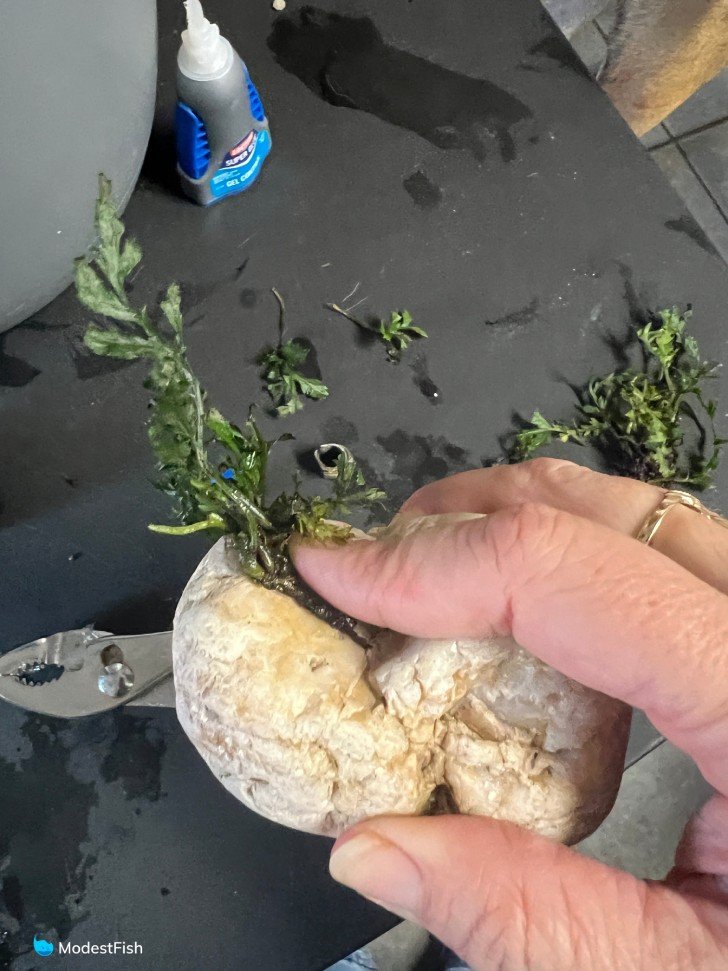
This plant doesn’t require frequent trimming, but it can get quite large, if left to its own devices. Two of mine are starting to get massive. But, it’s simple to cut this plant back and any cuttings you have can be rooted to make new plants.
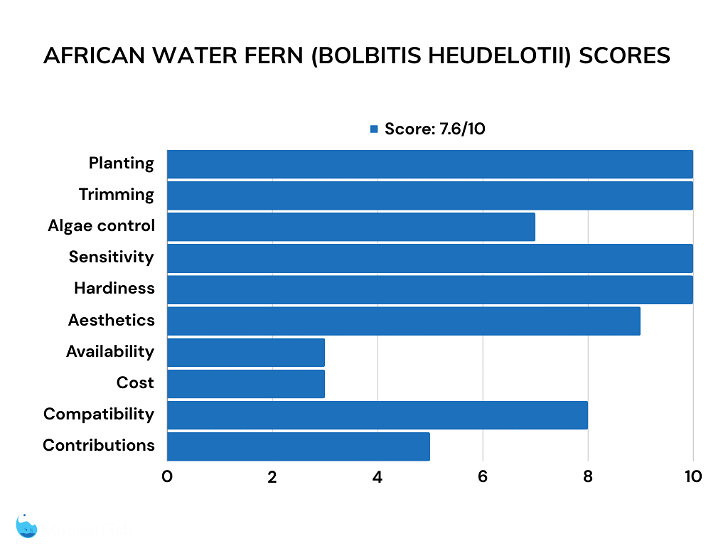
Pros:
- Easy to plant
- Doesn’t require frequent trimming
- Easy, large background plant
- Creates cover for fish and shrimp
Cons:
- Slow to get established
- Slow growing, especially at first

Last update on 2024-04-27 / Commissions Earned / Images from Amazon Product Advertising API
13. Cryptocoryne parva
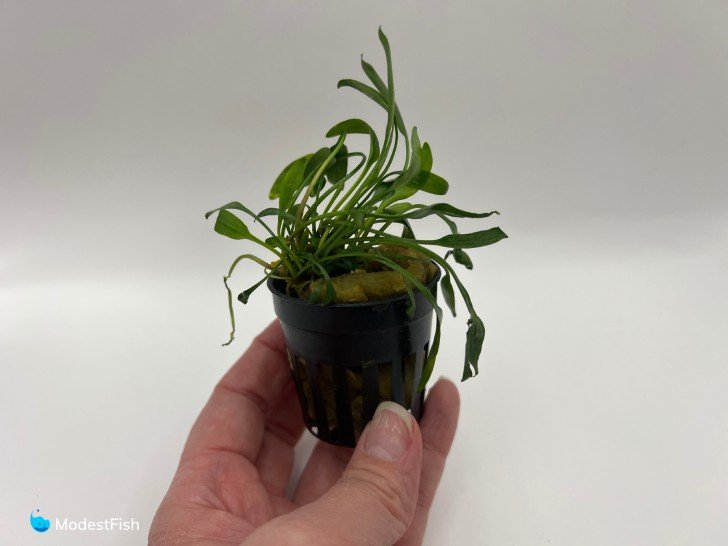
Verdict – this dwarf crypt species is sensitive, but hardy, and a great foreground plant that stays small.
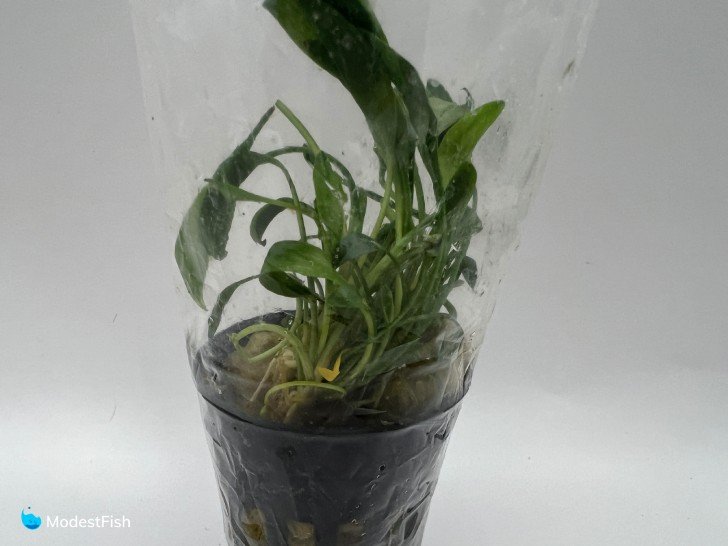
I think Crypt parva is a super cute little foreground plant that stays small enough even for nano tanks.
I definitely found that this plant requires some patience, especially at first. Although it is really hardy, it’s very sensitive. This means that this plant will melt back and lose its leaves if there are large swings in water parameters.
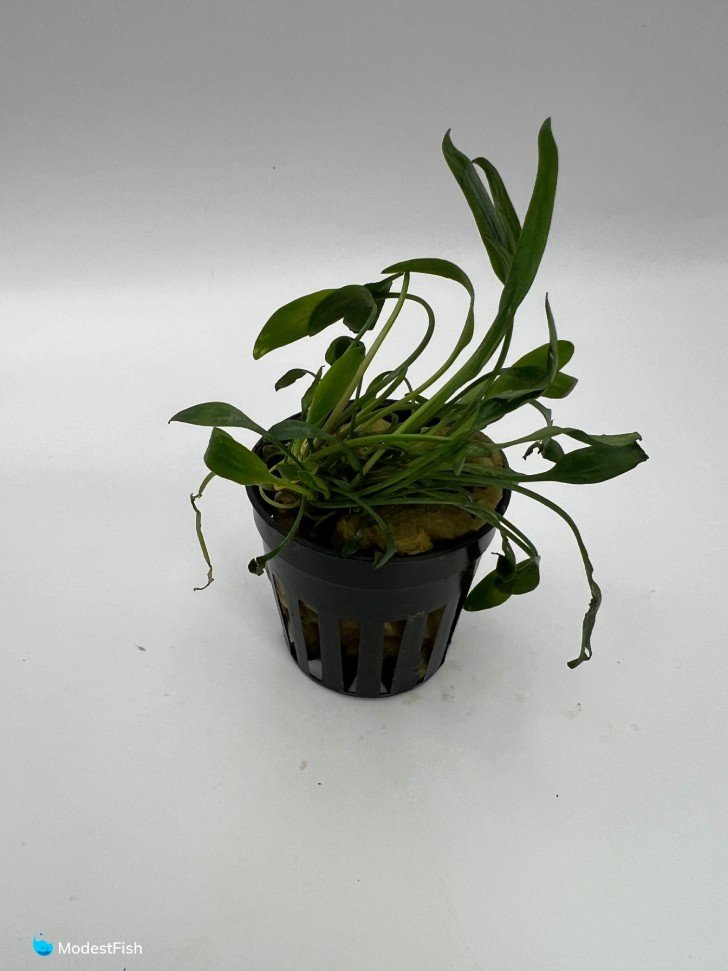
This melting often happens when you first place the plant in your tank. It happened to me even when I was moving it between tanks in my house. I’ve always had them bounce back after a week or so, and start putting out new leaves, but it was fairly distressing when it looked like the plants were dying on me.
So, if this, or any other crypt species you plant, melts back when you first add it, just give it a couple weeks. You should start to see new leaves poke out as it recovers.
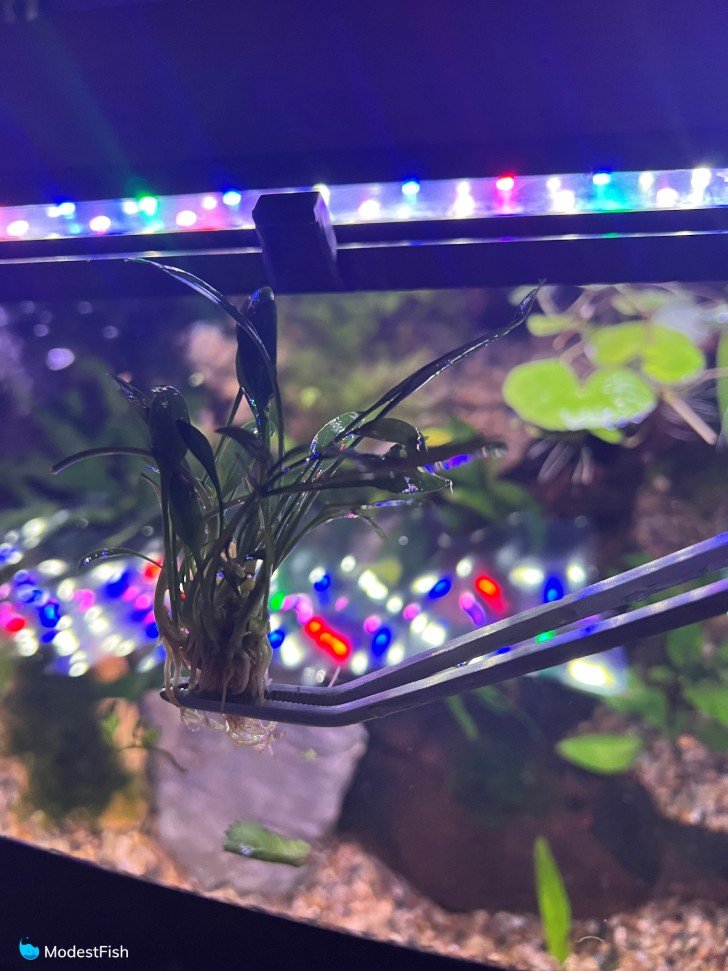
This plant, like all crypts, is a heavy root feeder and will do best in a nutrient rich substrate.

I like that this is a low tech-friendly carpeting plant. Although it grows slowly, it will eventually spread itself over the substrate via runners. A lot of carpeting plants are very fussy, delicate and demanding. But, I’ve found that crypt parva does well without needing a lot of care.
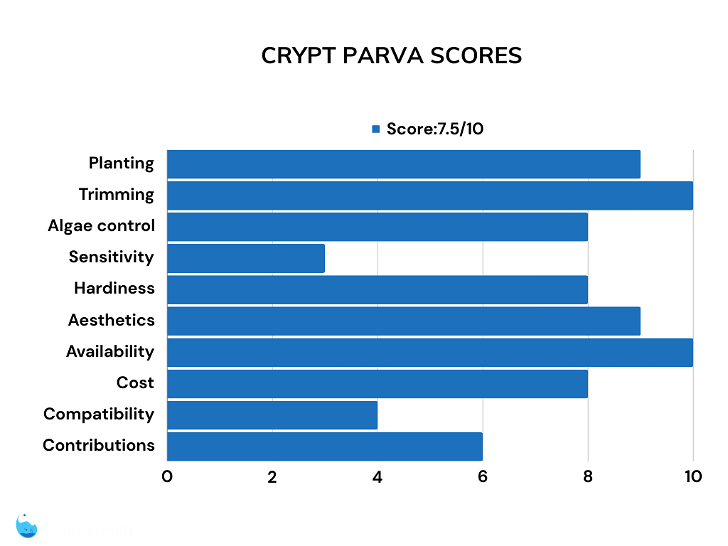
Pros:
- Stays small, great foreground plant
- Spreads along the substrate
- Undemanding carpeting plant
Cons:
- Grows slowly
- Can be sensitive

Last update on 2024-04-26 / Commissions Earned / Images from Amazon Product Advertising API
14. Cryptocoryne spiralis
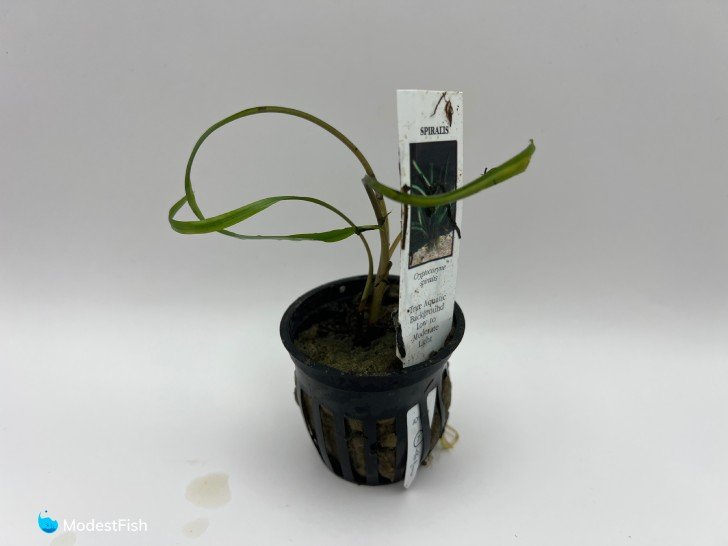
Verdict – this quirky little plant is simple and hardy, just like most crypts, but also has a unique ruffled leaf shape that makes it look really cool.
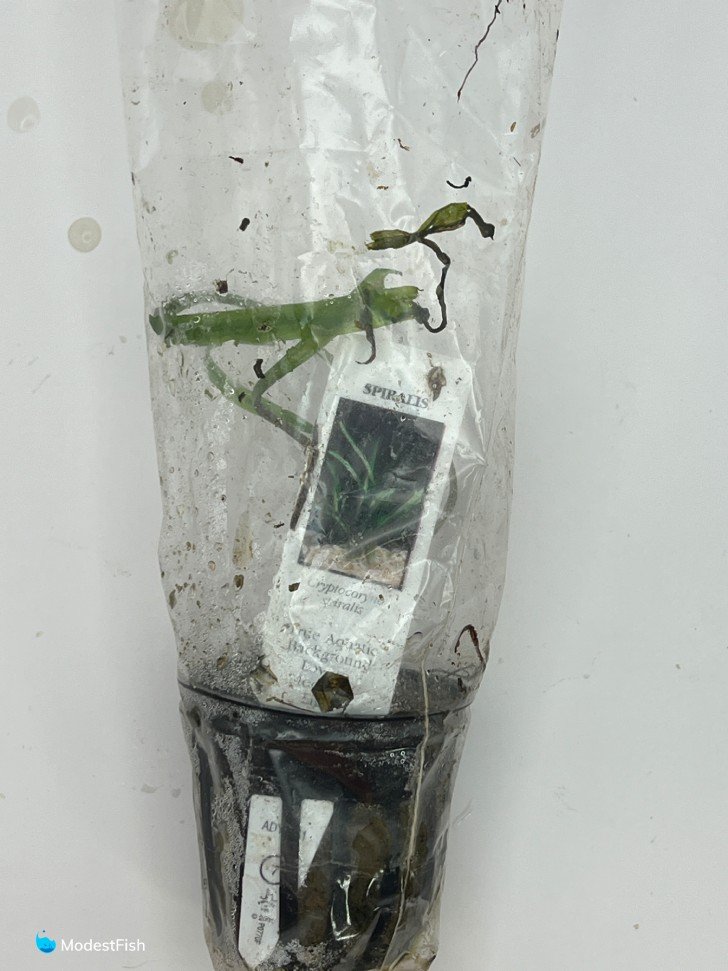
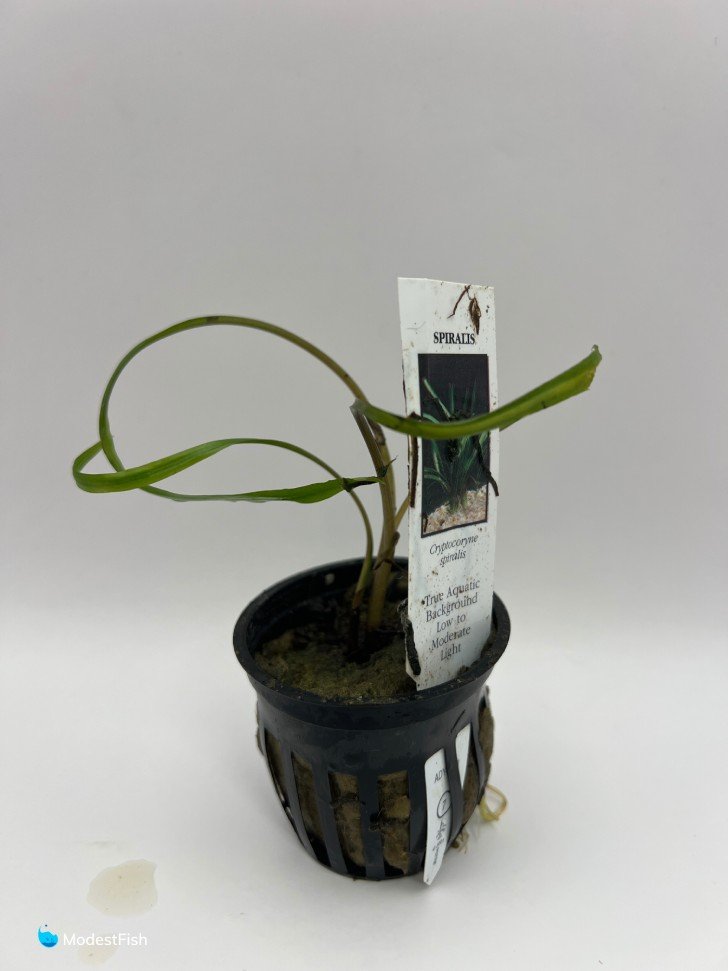
I love this crypt! It looks just plain awesome. I ordered one several years ago. I liked it so much, I ordered another to go into that tank.
I’ve found, when it’s small, the leaves grow in a corkscrew shape. As the plant ages, and the leaves grow larger, they turn into long, thin, blade-like leaves with fancy ruffled edges.
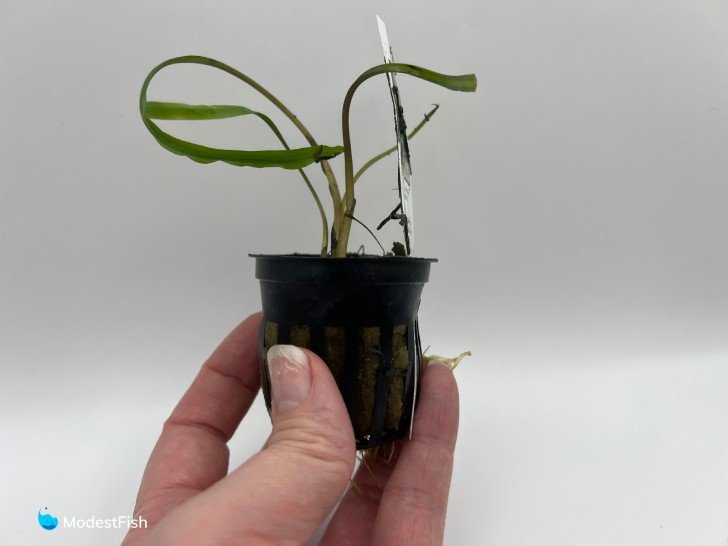
Mine are quite tall at this point, over a foot (30 centimeters). They’ve put off some runners in the tank that sprouted new plants.
I’ve got them in the midground, because it’s a very tall tank, but you’d want to put this plant in the background for anything 30 gallons (113 liters) or smaller.
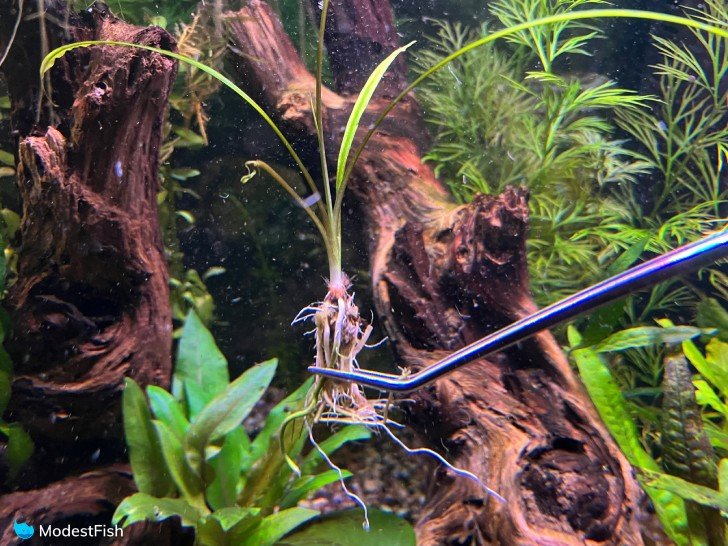
This is a root-feeding plant, like most crypts, but I have had some success with growing it in regular gravel. It did better in a clay-based plant substrate, but it did OK in the gravel as well.
I have found that this species can be a little sensitive, especially when it’s young, but I’ve also found it to be hardy long term.
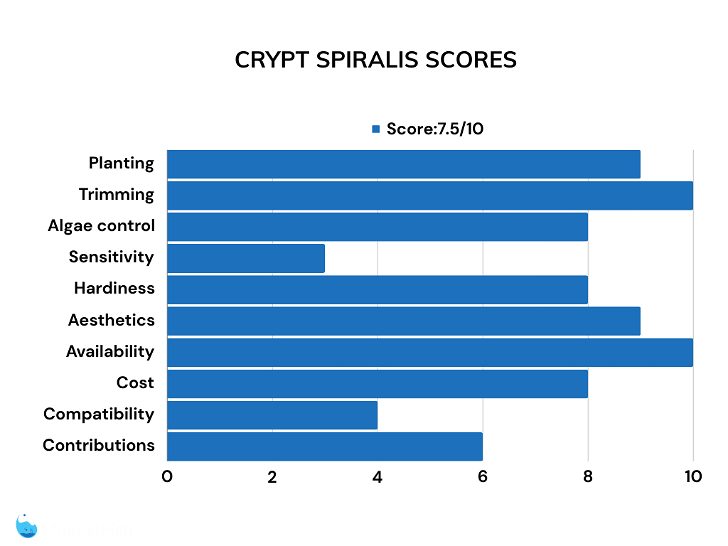
Pros:
- Easy mid-ground/background plant
- Interesting leaf texture
- Spreads itself throughout the tank
Cons:
- Can be sensitive
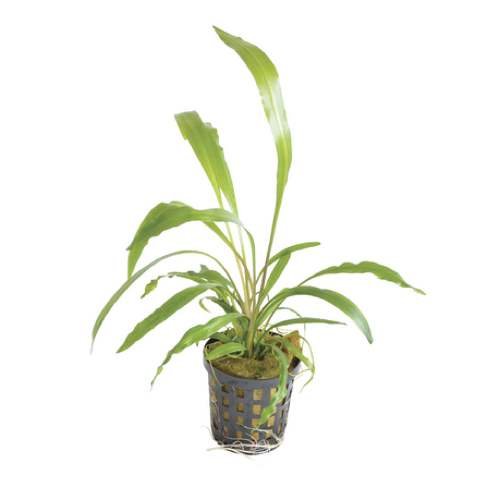
Last update on 2024-04-26 / Commissions Earned / Images from Amazon Product Advertising API
15. Cryptocoryne usteriana
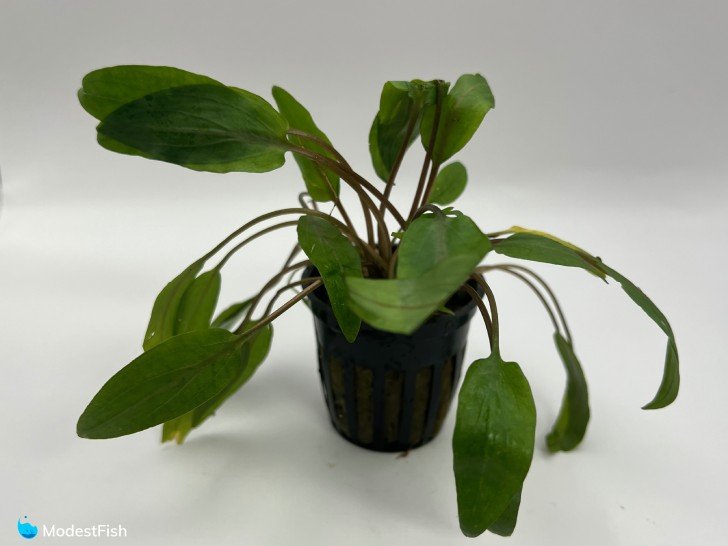
Verdict – this beautiful mid-sized crypt that looks a lot like an Amazon sword.
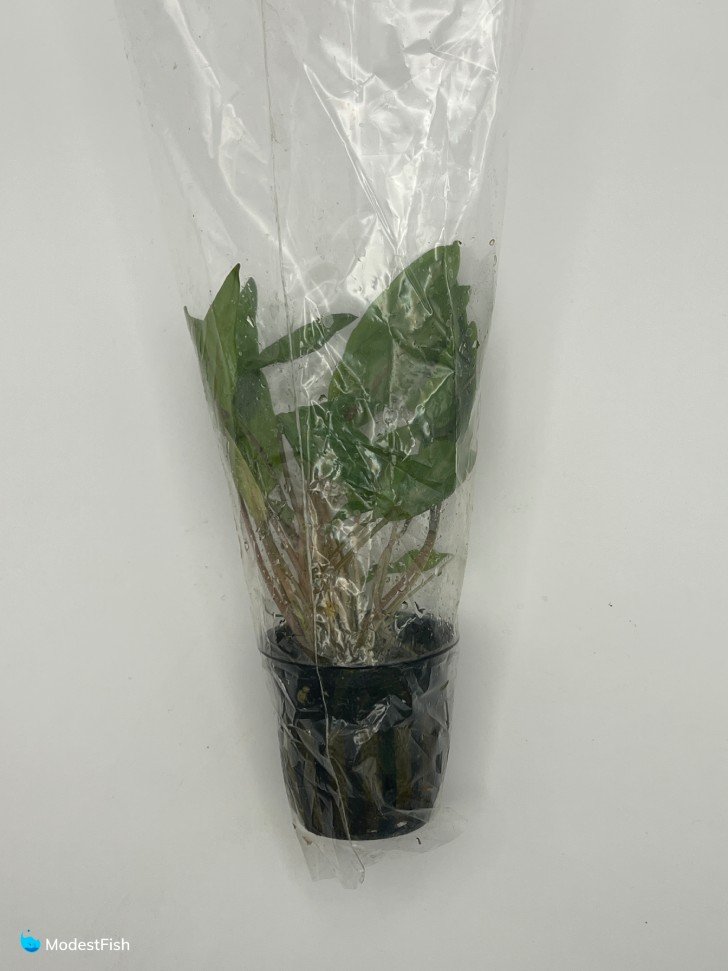
Love the look of this species!
They’ve always looked like an Amazon sword, but the underside of the leaves turns a reddish purple hue. I like how they add a tropical look to the tank.
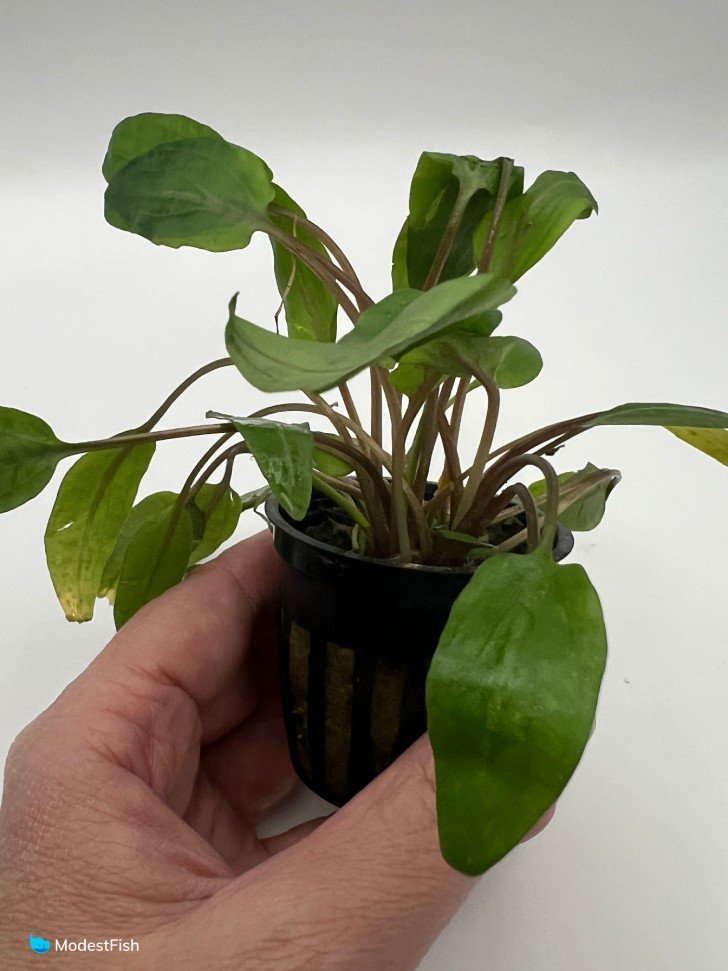
I’ve found that this species can be somewhat sensitive, but not nearly as much so as some of the smaller species of crypt, but it’s still not a big fan of large swings in water parameters.
It will also sometimes melt back when you first add it.
This plant can get up to 8-12 inches (20-30 centimeters) in height, so it will be a background plant in smaller tanks and midground in large ones.

I have it as a mid-ground plant in one of my 40 gallon (151 liter) bowfront tanks. I love it there.

Pros:
- Low light plant that looks like an Amazon sword
- A bit less sensitive than smaller crypt species
- Underside of leaves turn a beautiful reddish purple
Cons:
- Can still melt back if parameters change sharply
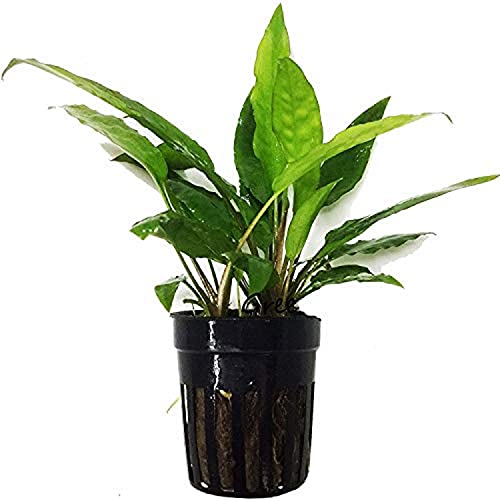
Last update on 2024-04-26 / Commissions Earned / Images from Amazon Product Advertising API
16. Cryptocoryne wendtii
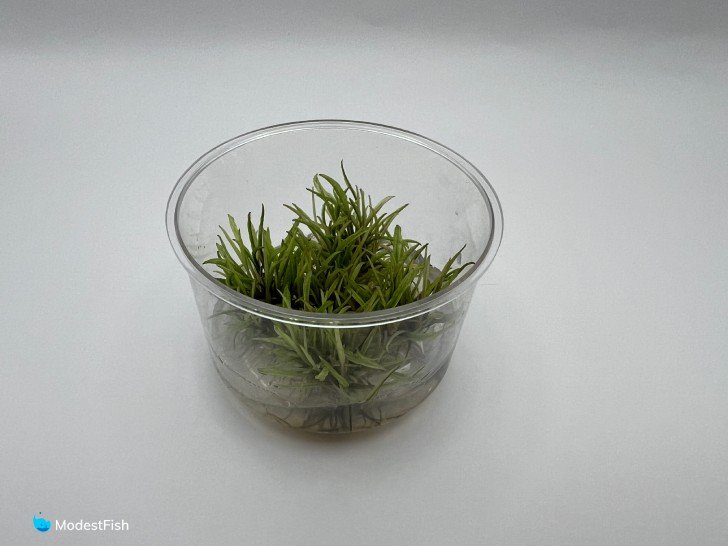
Verdict – this species of crypt stays quite small and makes a great foreground plant.
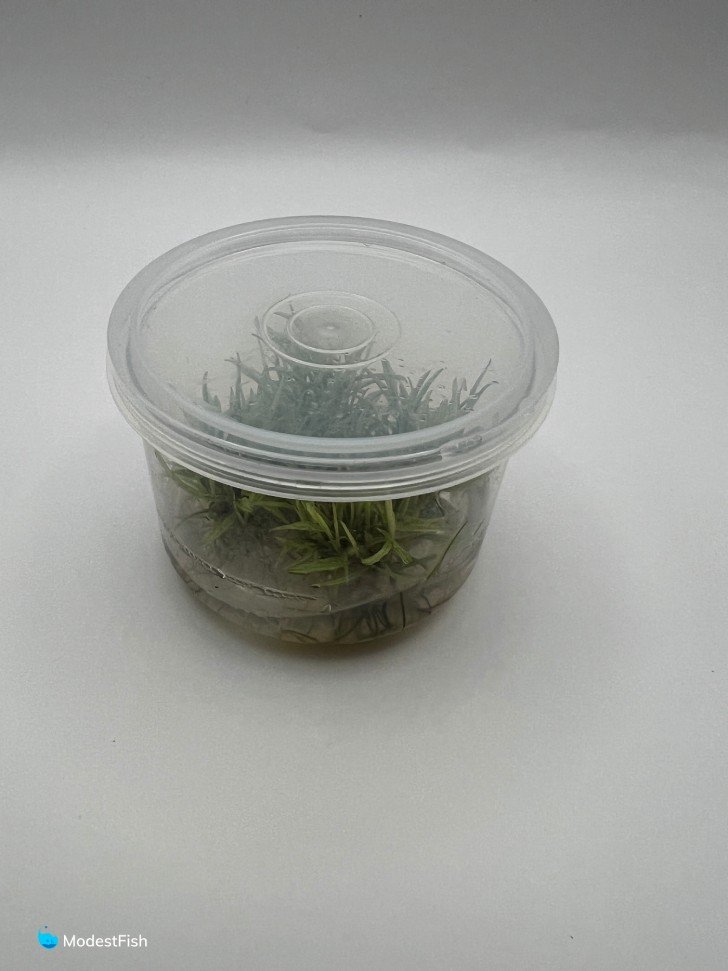

Crypt wendtii is another dwarf species that forms a messy carpet along the substrate. I love it in shrimp or livebearer tanks because it gives such great cover for fry and shrimplets.
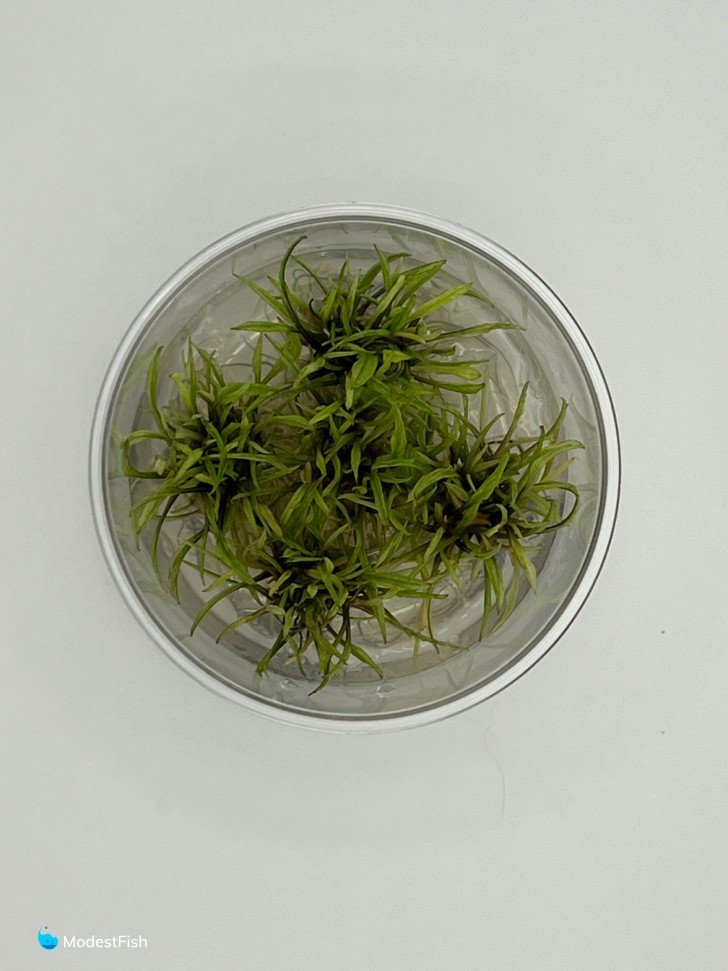
This little crypt is very sensitive. I’ve found that will melt back when it’s first added to a tank, moved and replanted or if the water parameters change drastically.
I would definitely recommend a healthy dose of patience with this plant. Give it some time and it should bounce back.
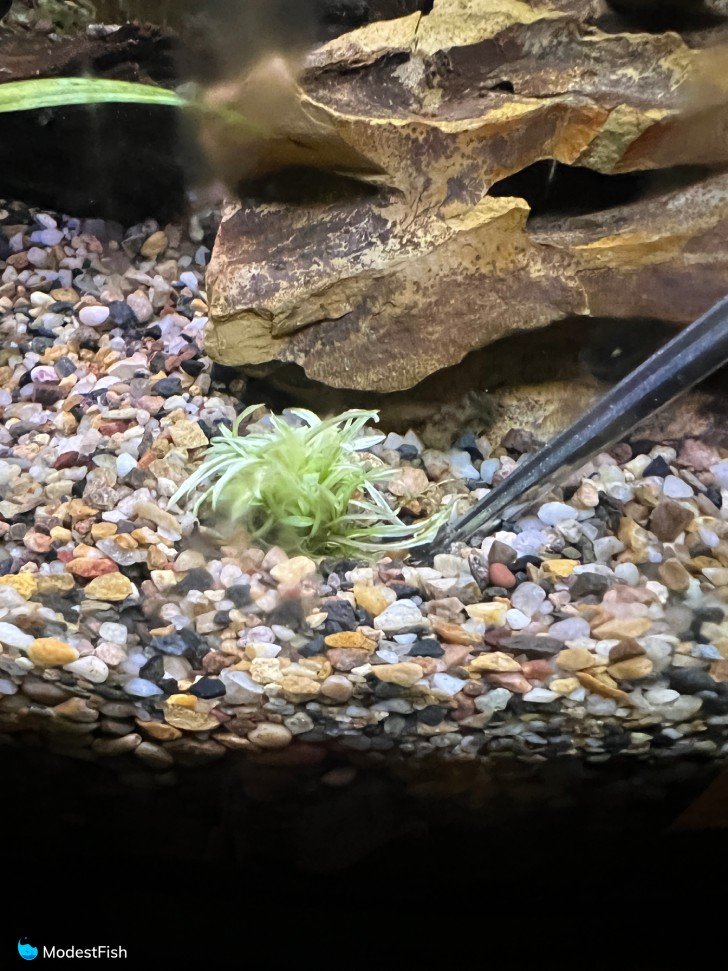
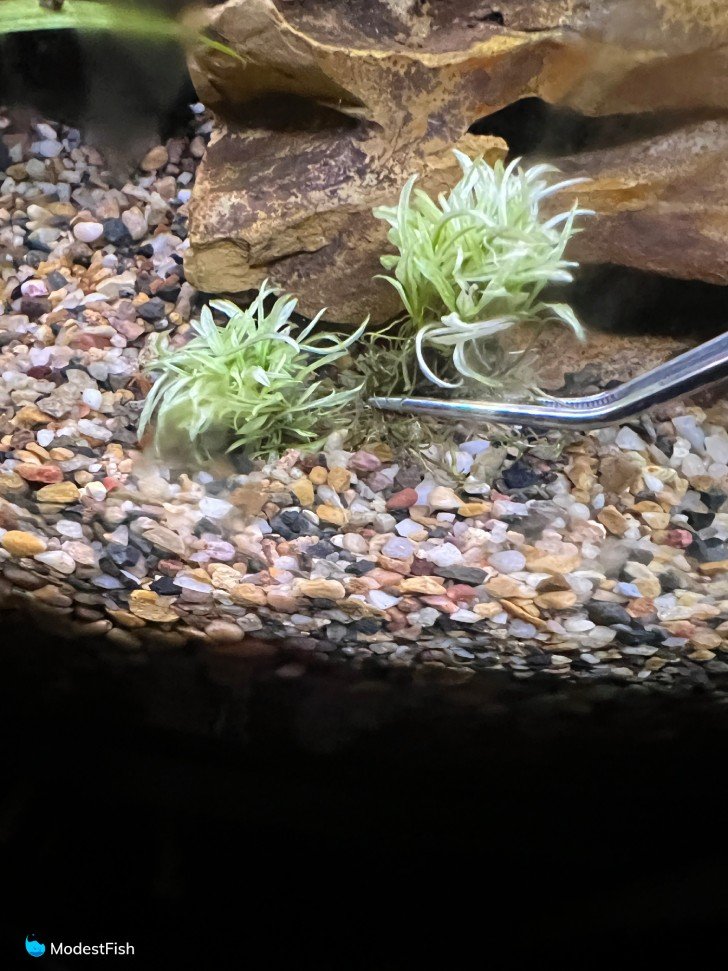
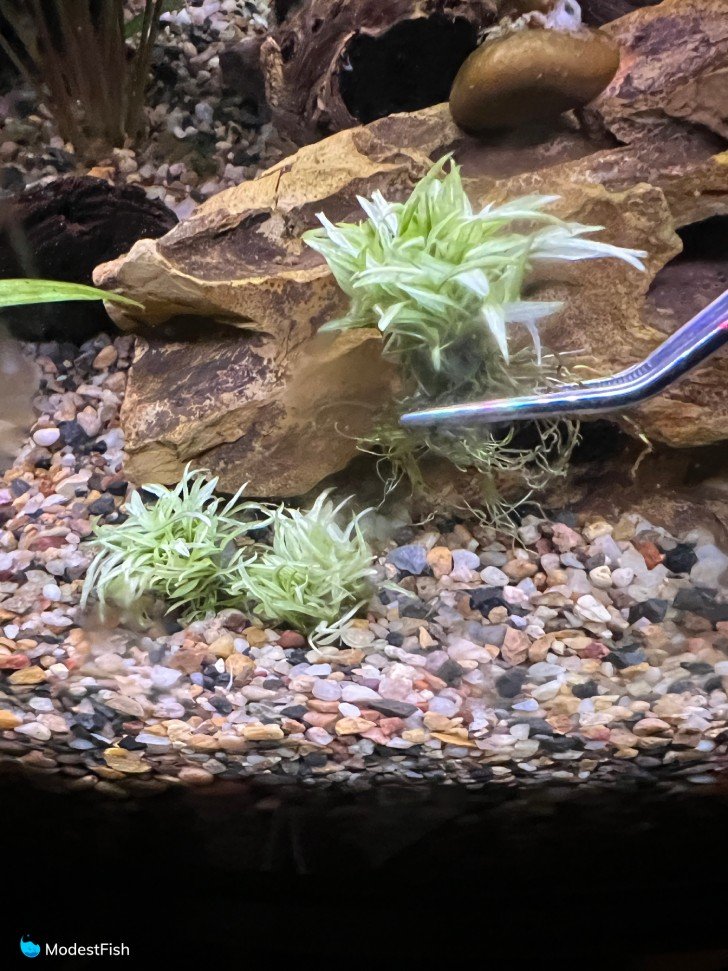
This species will put out runners over time and colonize more of the tank. I’ve found it does best in a nutrient rich substrate. I’ve not had any luck getting it to grow in plain gravel.
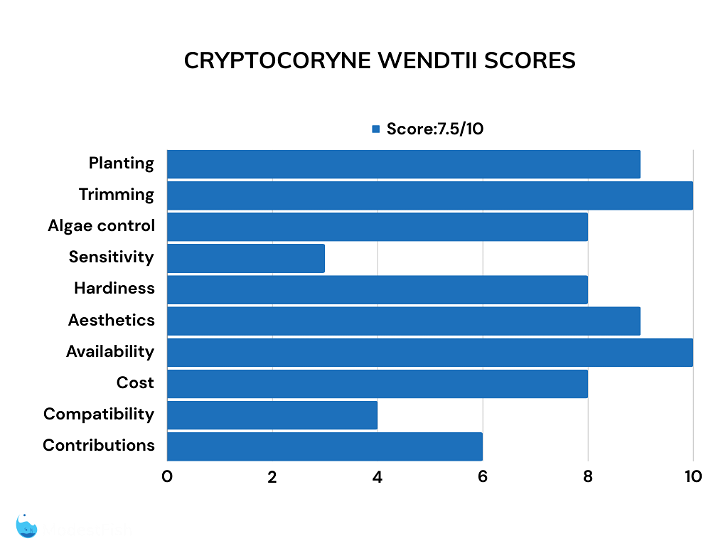
Pros:
- Small species great for foregrounds
- Easy carpeting plant
- Spreads through runners across the tank
Cons:
- Very sensitive to changes in the water
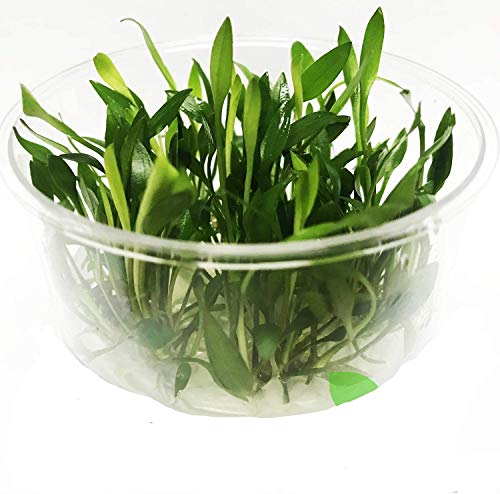
Last update on 2024-04-26 / Commissions Earned / Images from Amazon Product Advertising API
17. Guppy Grass (Najas guadalupensis)
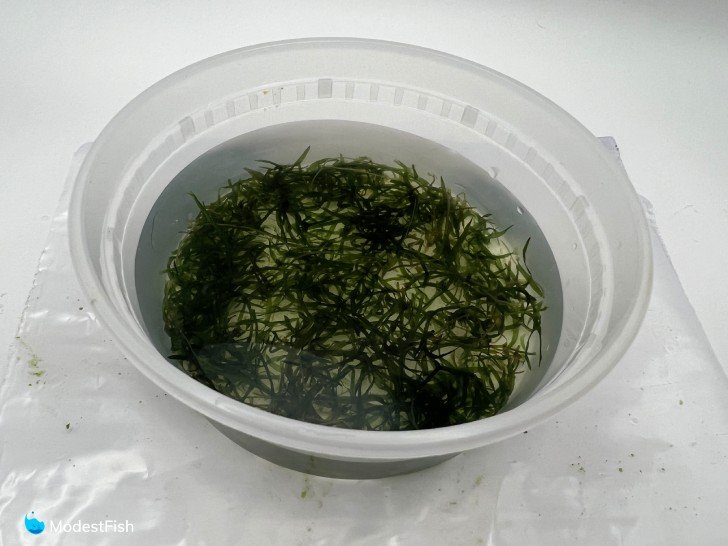
Verdict – this fast growing stem plant provides excellent cover for tiny tank inhabitants and it helps keep water clean.
Guppy grass is a force to be reckoned with. It’s an extremely fast growing plant. In my experience, it quickly becomes a mass of bushy, tangled grass.

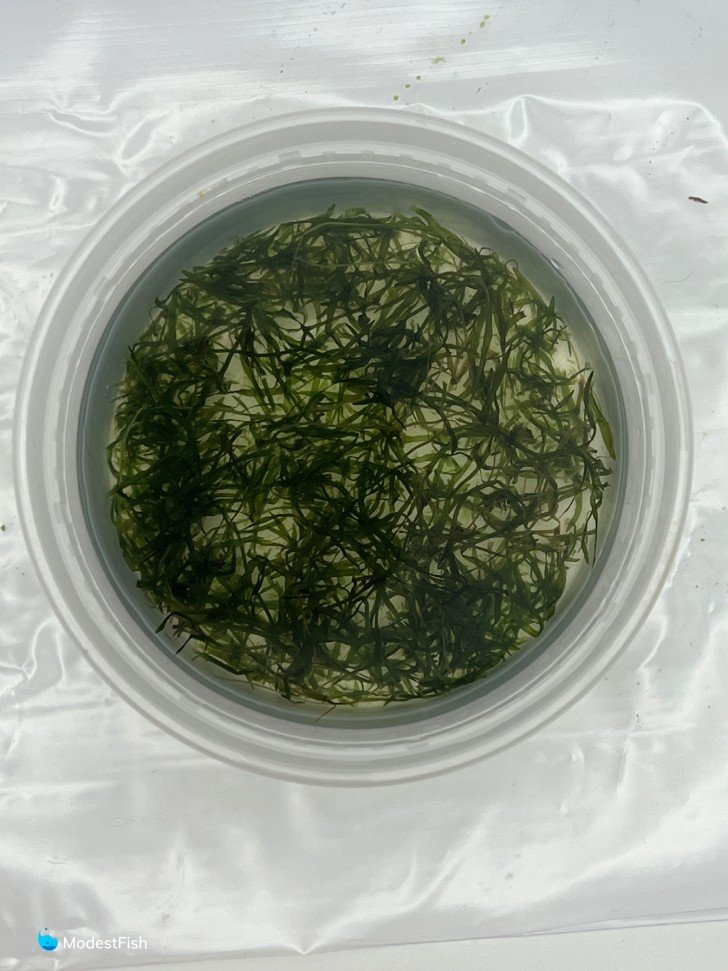
This is perfect for breeding shrimp, egg scattering fish or livebearers. I’ve seen firsthand how baby fish and shrimp can hide in guppy grass. Not only does the grass hide baby fish from hungry adults, but the infusoria that live within it are an excellent food source for fry.
All that fast, dense growth means that guppy grass can have a major impact on nitrate levels in the water. It’s a stem plant that feeds directly from the water column.
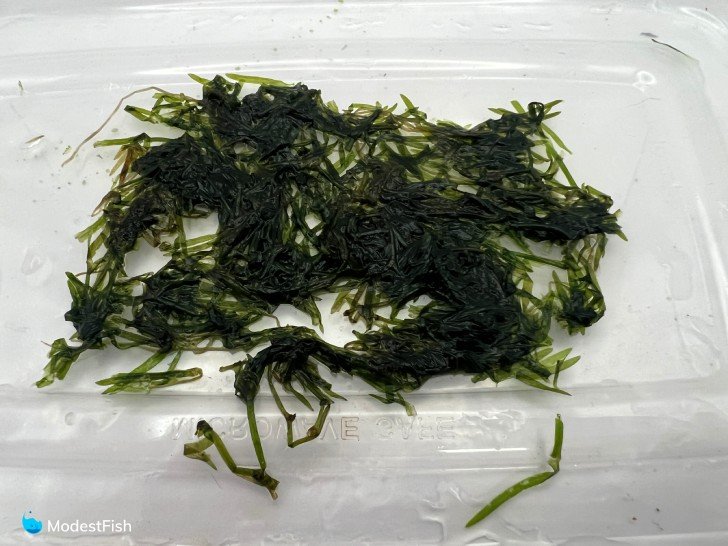
The downside to guppy grass that I’ve found is that it requires frequent trimming, or else it will completely take over the tank. You can trim back the tops of the plant, which should be disposed of safely in the trash, and it will all just grow back and need to be trimmed again.
Also, it’s been a bit of a pain when it comes to first planting it. Often, when you order some guppy grass, you get short cuttings of it that resemble lawn clippings. The stems are thin and easily broken.
If you have very little flow in the tank, you can let the guppy grass grow. Or you can, very carefully, bury part of each stem in the substrate to weigh it down.
Very soon, new shoots will emerge.

Pros:
- Great cover for baby fish and shrimp
- Reduced nitrate in the water column
Cons:
- Requires frequent trimming
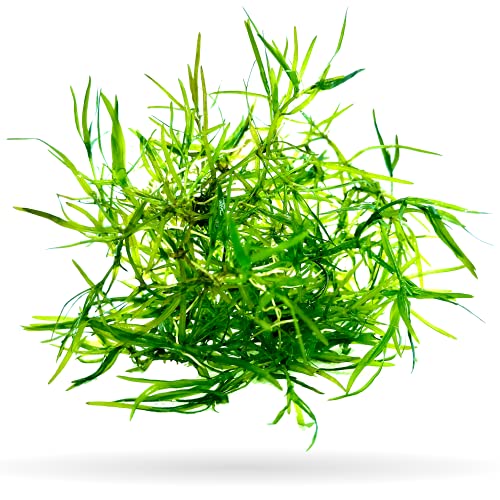
Last update on 2024-04-26 / Commissions Earned / Images from Amazon Product Advertising API
18. Hornwort (Ceratophyllum demersum)
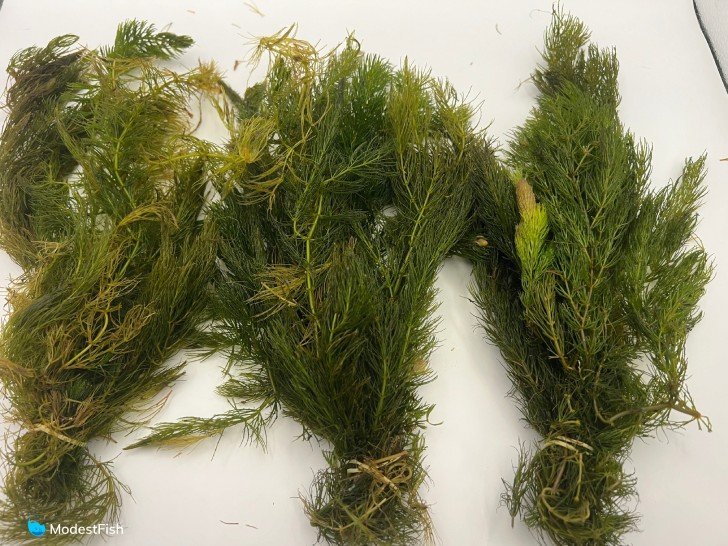
Verdict – It can be tricky to get hornwort established in your tank, but it’s a beautiful, fast growing plant that eats up tons of nitrate from the water column.
I love this plant. Hornwort, also called coon tail for its distinctive shape, is simply gorgeous. It looks like bushy green raccoon or fox tails floating up to the water’s surface. Its leaves are thin, like pine needles and provide excellent cover for shrimplets and fry.
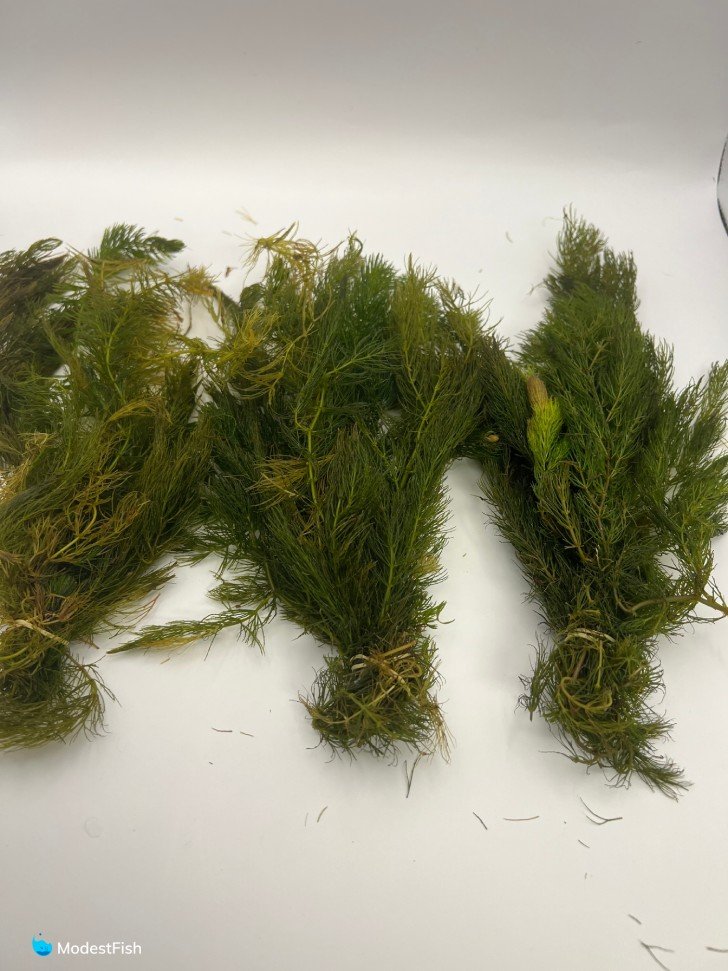

I’ve always noticed that it has a positive effect on nitrate levels in the water. It’s a fast growing stem plant that will draw nutrients from the water column.
In my experience, the only real problem with this plant is getting it established in the aquarium. Sometimes, when hornwort is first introduced, it will start to drop all of its needles and melt back.
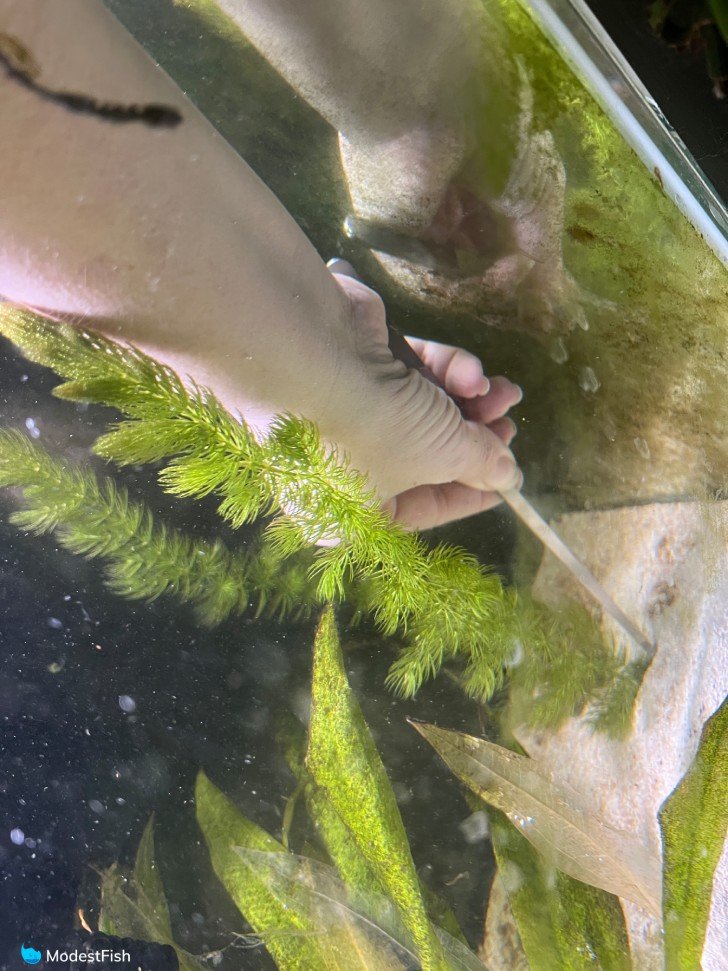
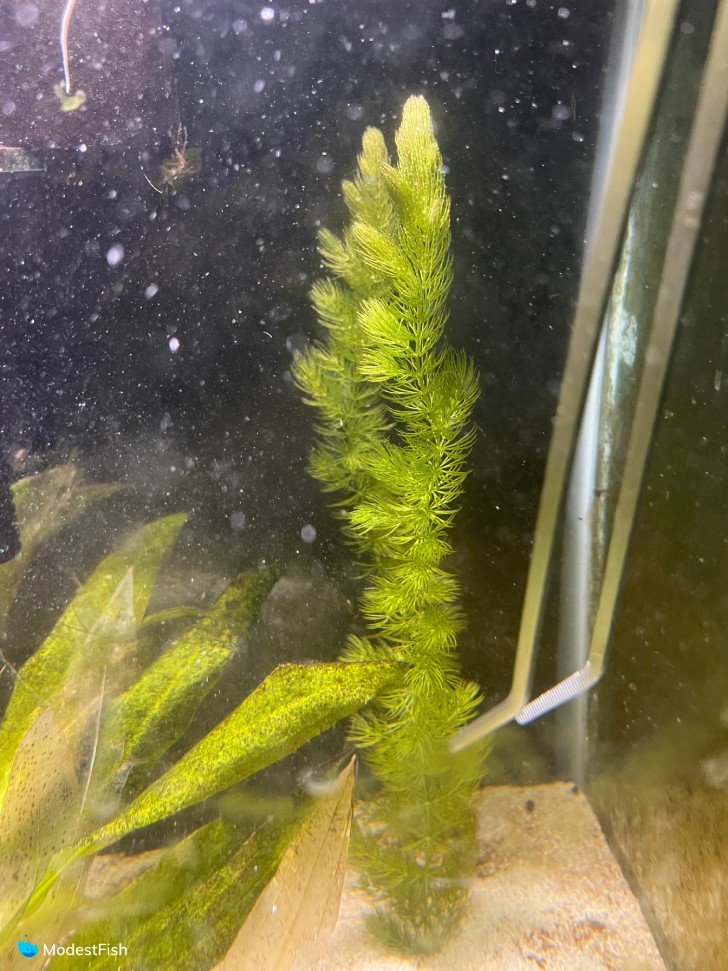
I’ve always seen it recover, but all those dropped needles can make a huge mess in the tank that’s hard to clean up.
Because it’s so sensitive, it’s best to quarantine this plant in something like a bucket with bubbler or a bare bottom tank that is easy to clean. Fill the quarantine tank with old aquarium water so the hornwort can get used to your tank’s parameters. Once the plant starts to bounce back, you can move it to your main display tank and avoid a huge mess.
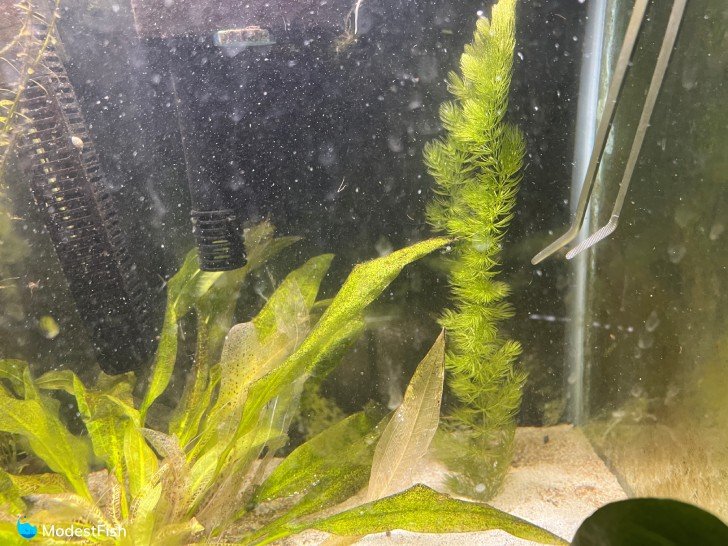

Pros:
- Fast growing plant that eats up nitrate
- Beautiful distinct shape
- Great cover for small fish and shrimp
Cons:
- Very sensitive plant that can be hard to get established
- Very messy if it melts back

Last update on 2024-04-27 / Commissions Earned / Images from Amazon Product Advertising API
19. Marimo Moss Balls (Aegagropila linnaei)
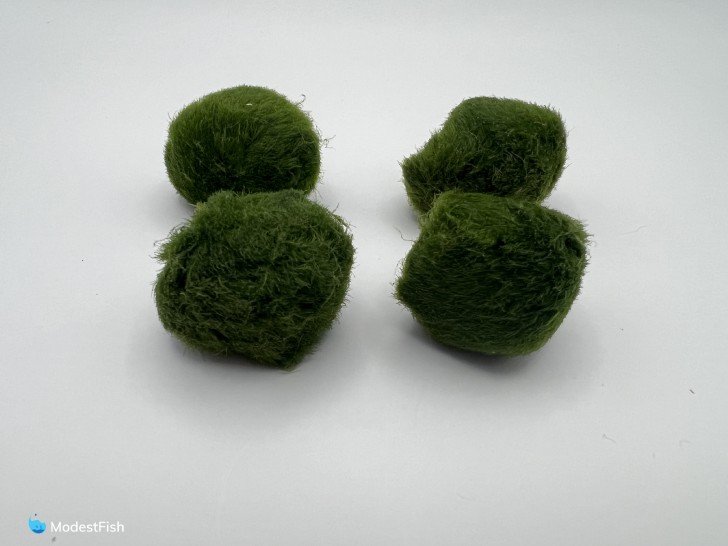
Verdict – these are super cute little balls of moss that are very easy to take care of.
I think these little guys are a great addition to a planted tank. I especially like to keep them in shrimp tanks. Shrimp love to graze along their surface.
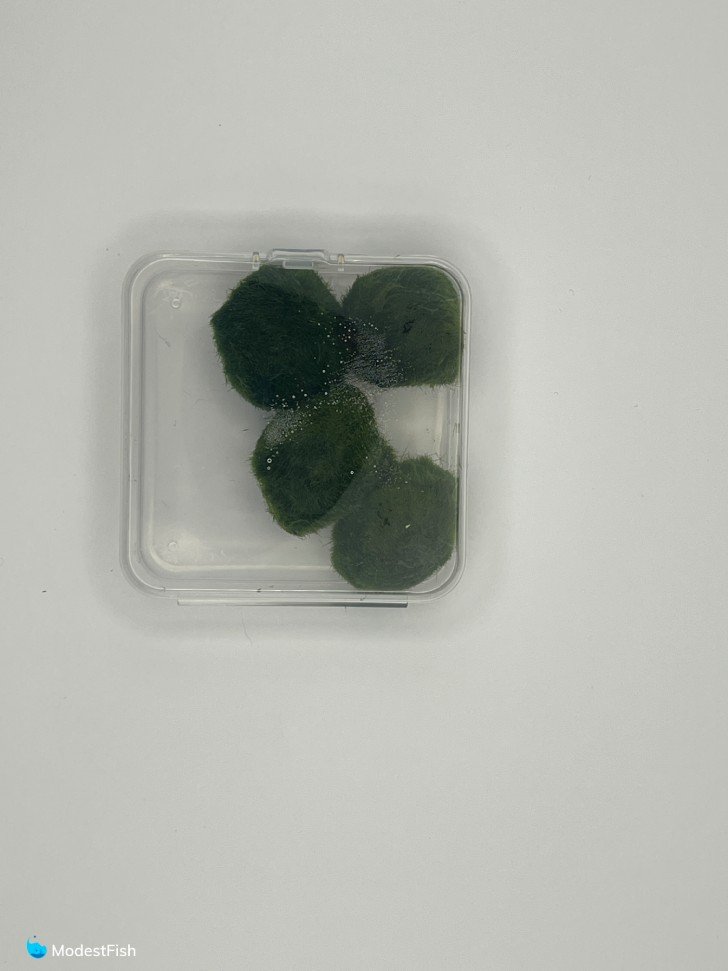
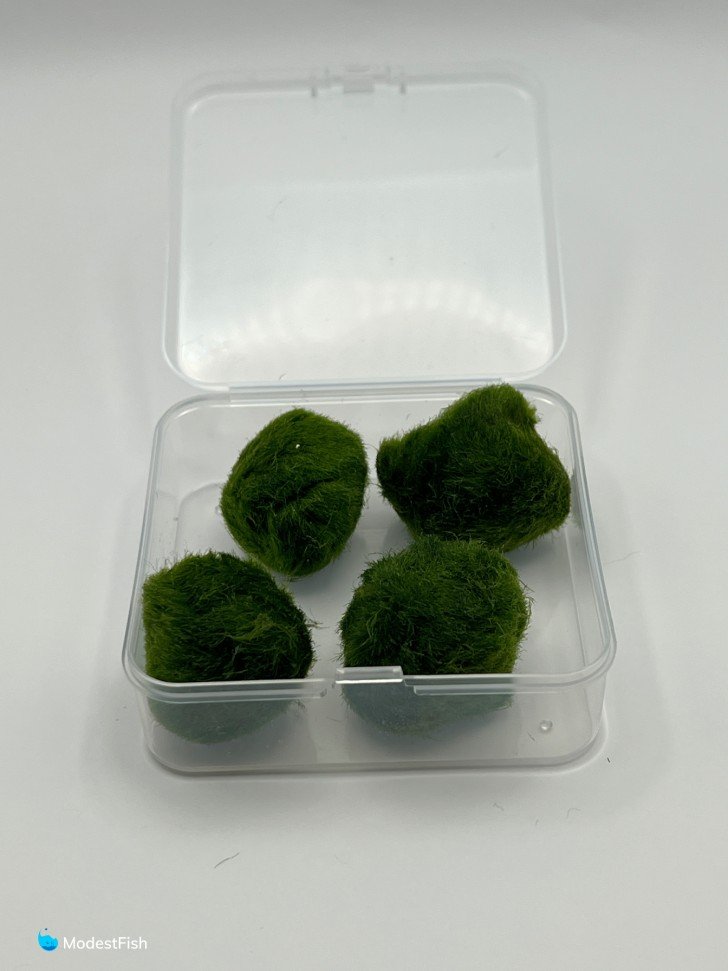
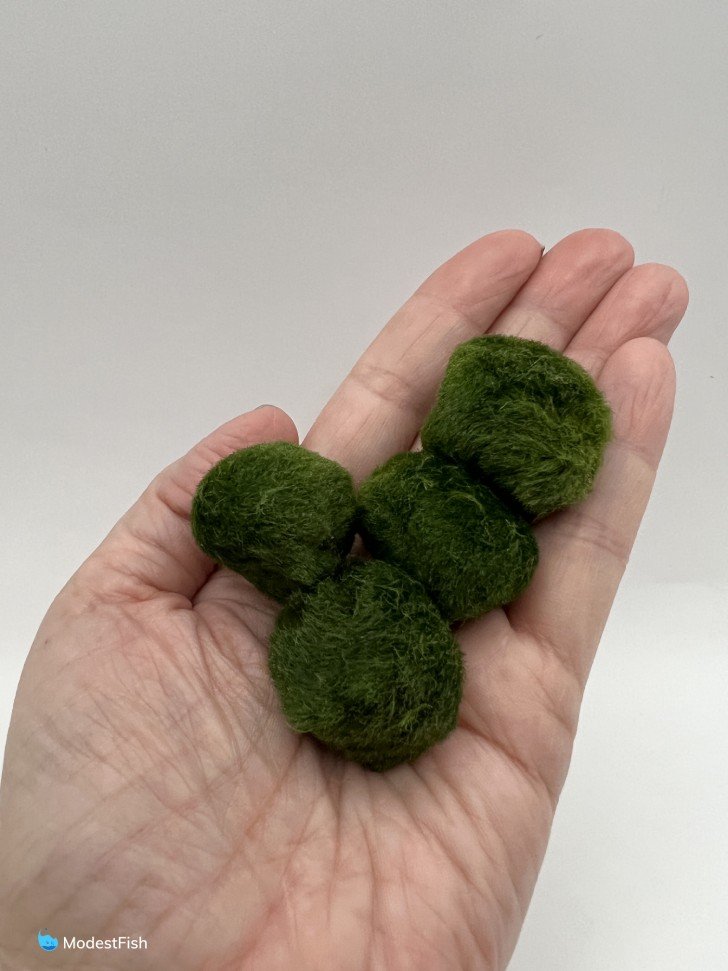
Maintaining them is very easy. All I have to do is squeeze them out occasionally to get rid of trapped debris and make sure to turn them sometimes so all sides can get some light.
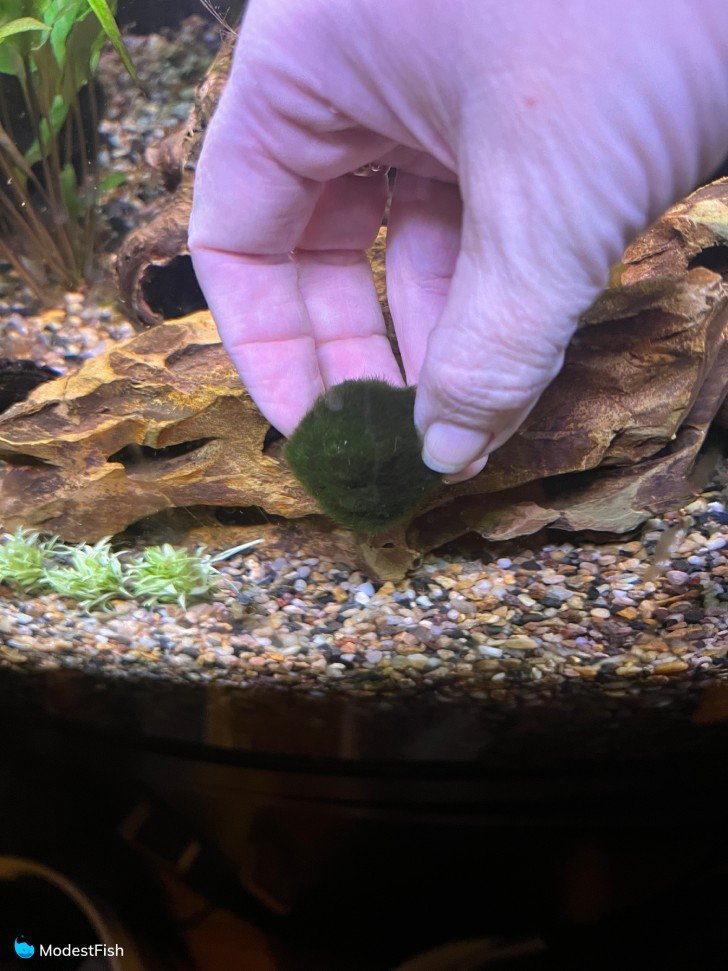
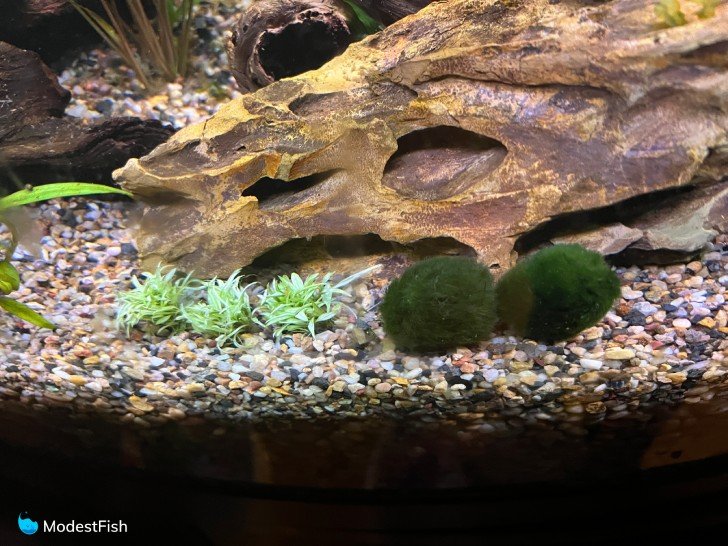
My only complaint is that moss balls grow really slowly and don’t eat up much nitrate at all. But they’re cute, easy and fun.
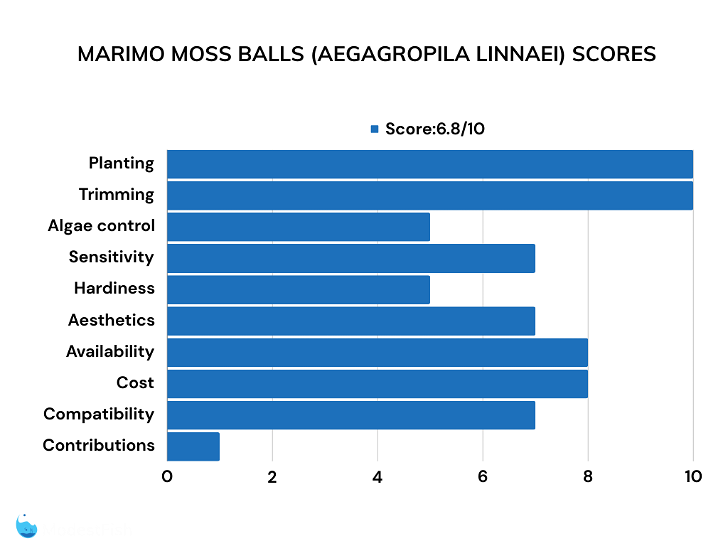
Pros:
- Interesting little plant
- Shrimp love them
- Easy to care for
Cons:
- Grows very slowly

Last update on 2024-04-26 / Commissions Earned / Images from Amazon Product Advertising API
20. Pelia Moss (Lomariopsis lineata)
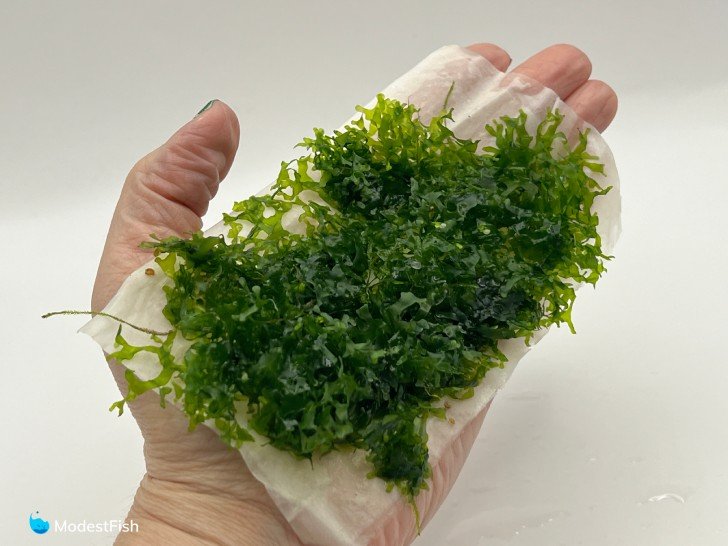
Verdict – pelia moss is an easy and beautiful addition to a low light tank and adds bright color and interesting textures.
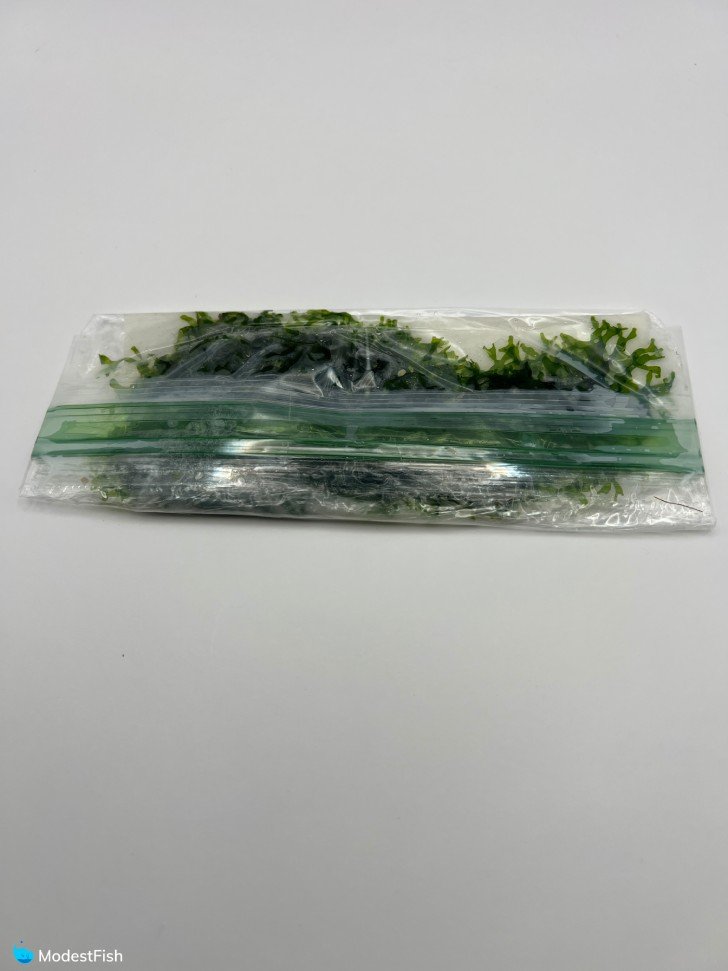
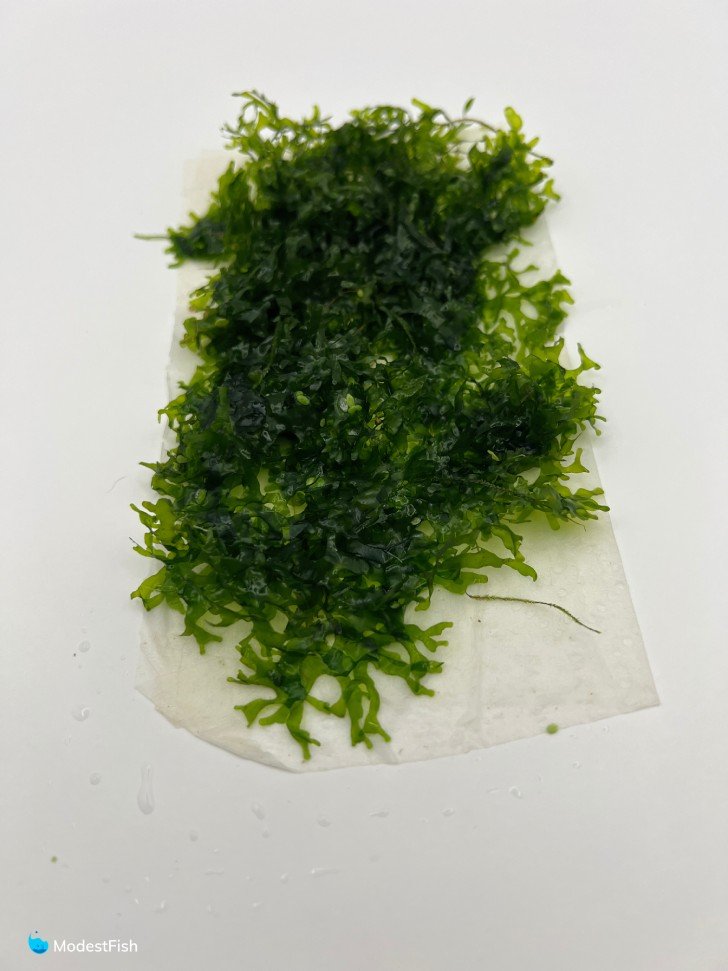
This is a weird little plant that I’ve so enjoyed keeping. It’s not really a moss at all, it’s more closely related to a liverwort, these little non-vascular plants that grow in moist environments.
I love how fast growing pelia is. It forms a ruffled layer of bright green leaves that hug the substrate and hardscape (well, they look like leaves, but they’re technically thalli).
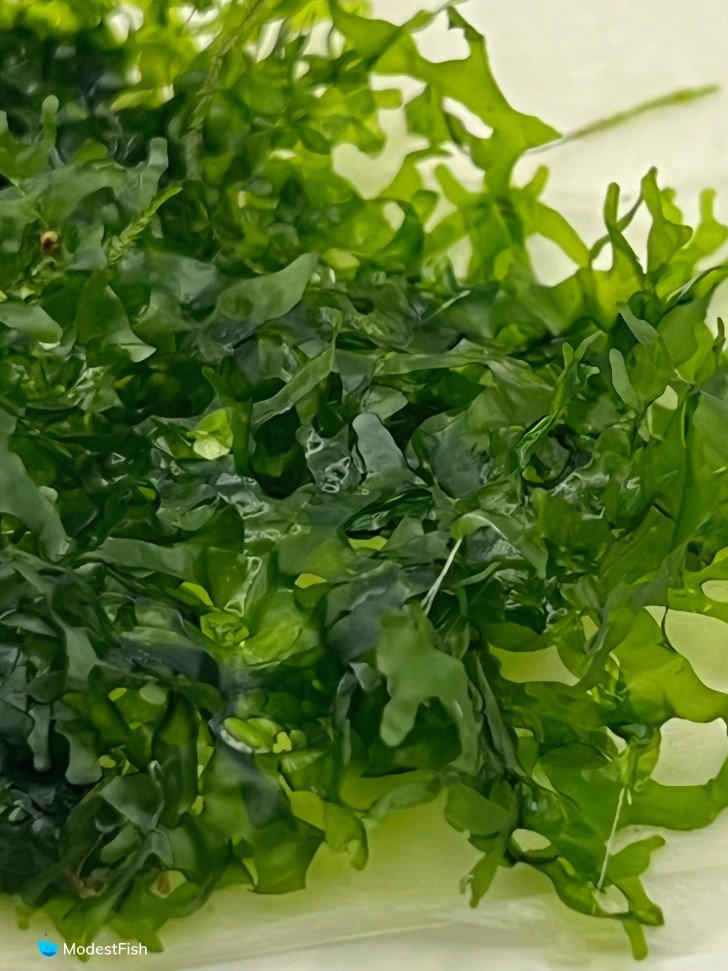
It’s really easy to plant pelia. I just super glue it to whatever rock or driftwood I want it to cover. It does not take long for the pelia to start spreading.
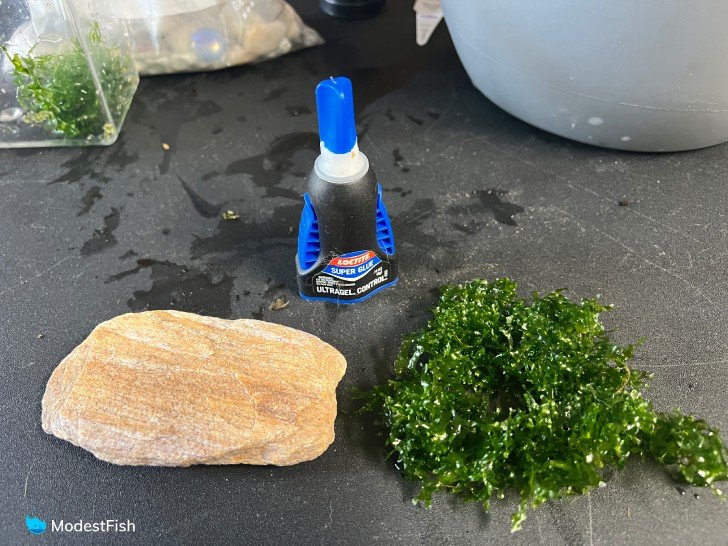
Even in fairly low light, I’ve noticed that it grows visibly every week.
One downside that I’ve found is that this plant is delicate, meaning it breaks apart easily if it’s banged into. Little pieces of leaves break off at the slightest touch. Bottom feeder fish, like corydoras or plecos, can easily wreak havoc on this plant.
And any fish that likes to eat plants will quickly devour pelia. It will just be a tasty salad for them.
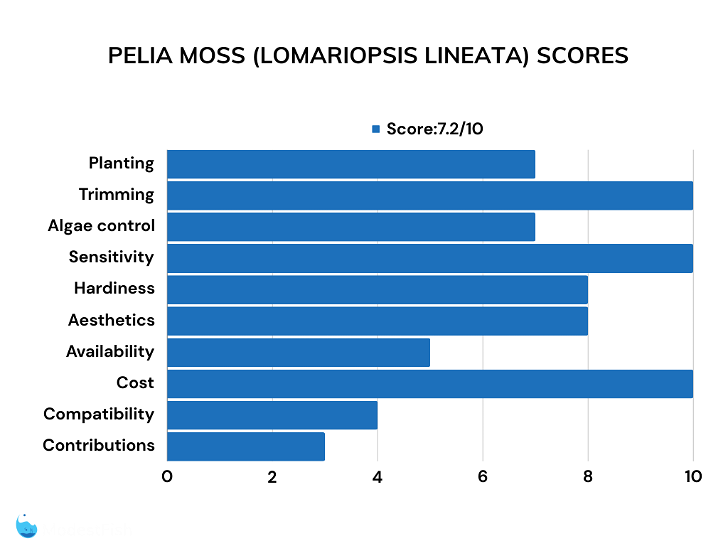
Pros:
- Easy low light moss
- Grows quickly
- Great for shrimp
Cons:
- Delicate and easy to damage

Last update on 2024-04-26 / Commissions Earned / Images from Amazon Product Advertising API
Which Low-Light Plants to Pick?

I love using low light plants. Using lower light levels can really help keep algae at bay.
There are lots of options for low light plants. All of these have proven themselves to be hardy and fairly easy to grow, even in tanks I’ve kept that had some pretty crappy lighting.
All of the plants on this list are great, but my all time favorites are Java fern, Anubias barterii, moneywort, pelia and pearl weed.
The Java fern and the various anubias species especially are what I would recommend for someone who’s just starting out.
They’re cheap, plentiful and you could practically grow them in any tank.
I hope you find this article helpful.
I wish you and your plants the very best!

Thank you , very interesting article
Daniel
Excellent article.
Hi there.
Thank you for the article. This is very informative, helped me immensely I am able to choose the suitable aquarium plants
Good article. It really helps to distinguish between Column feeders and substrate feeders. I have successfully killed 6 Marimo balls. I have 3 in the fridge that are dying too. 🙁